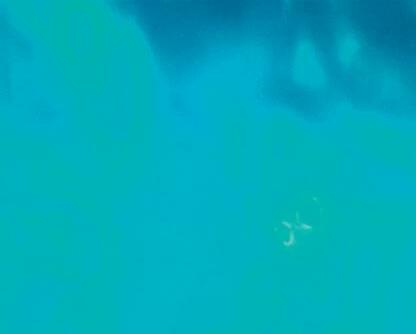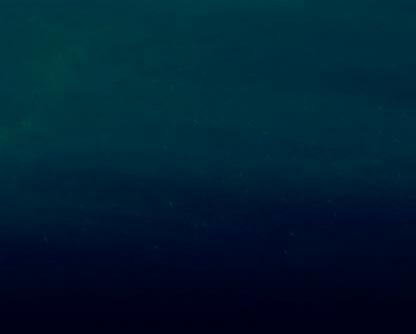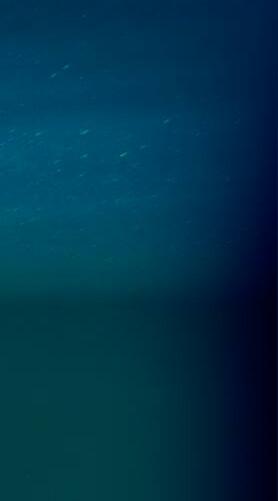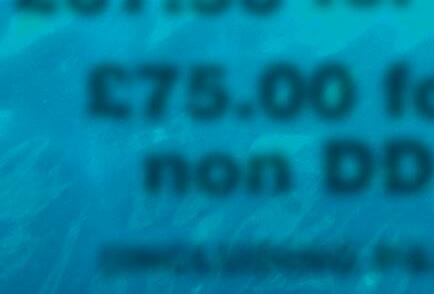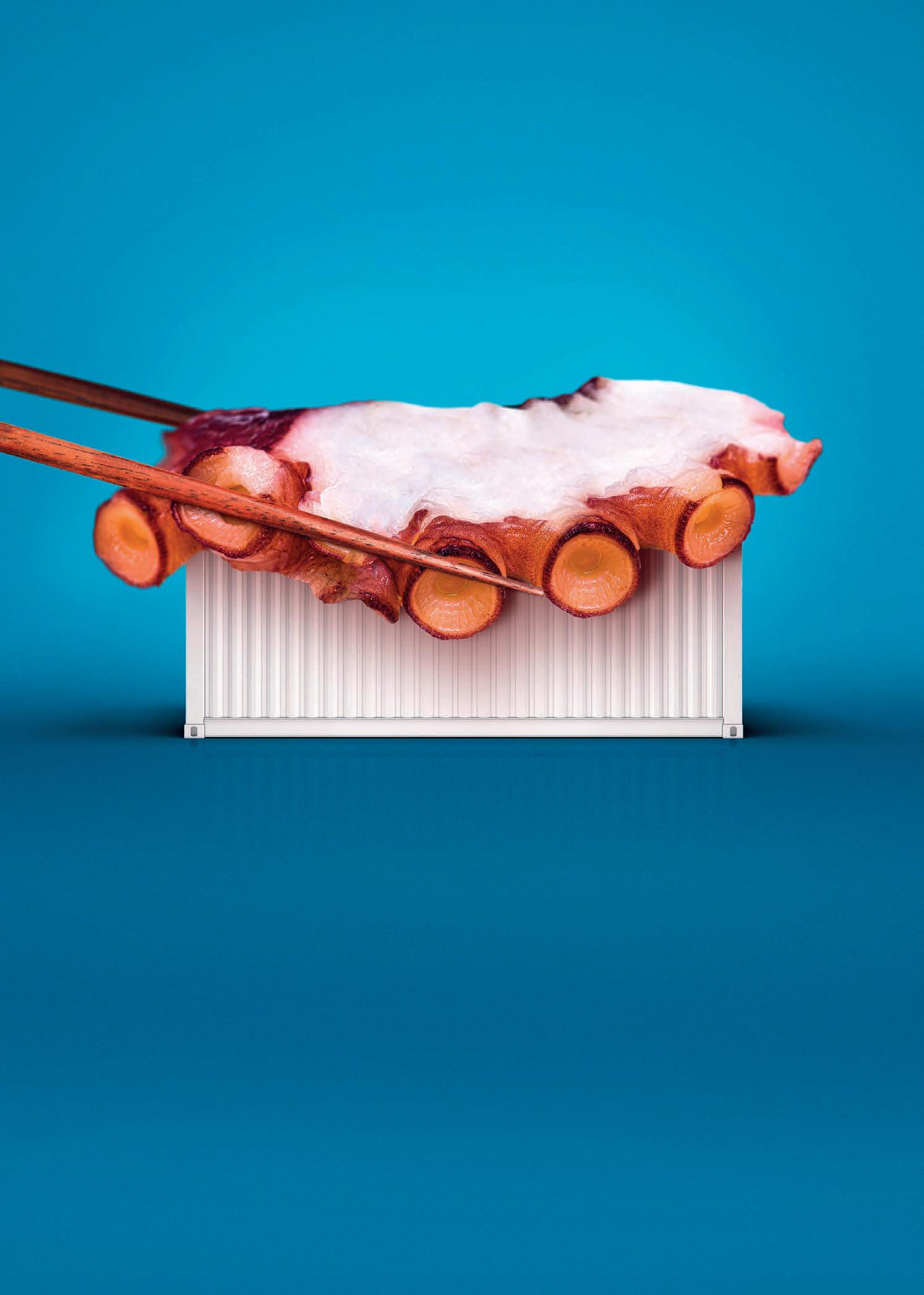










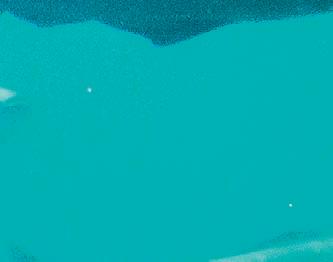


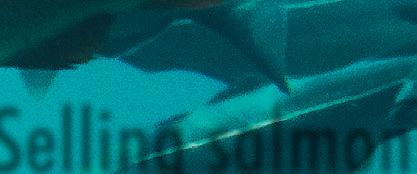






































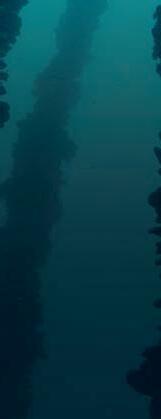



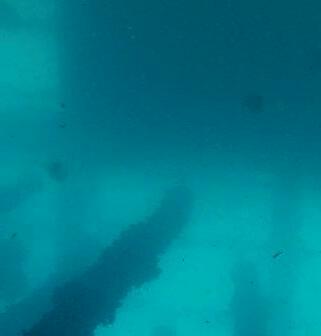
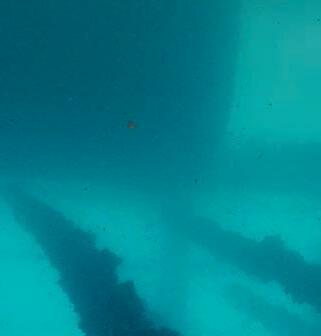
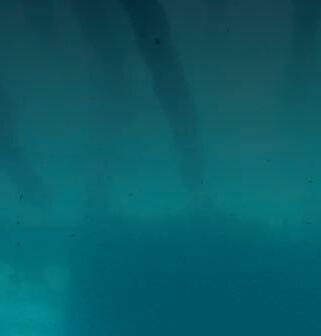

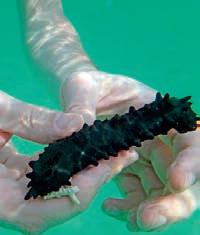
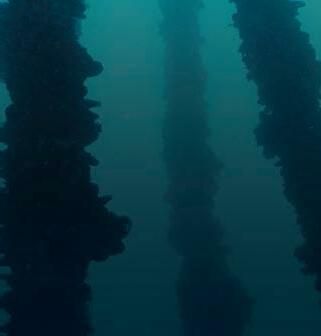

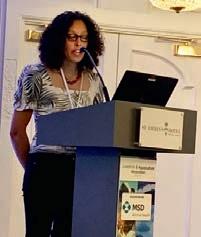


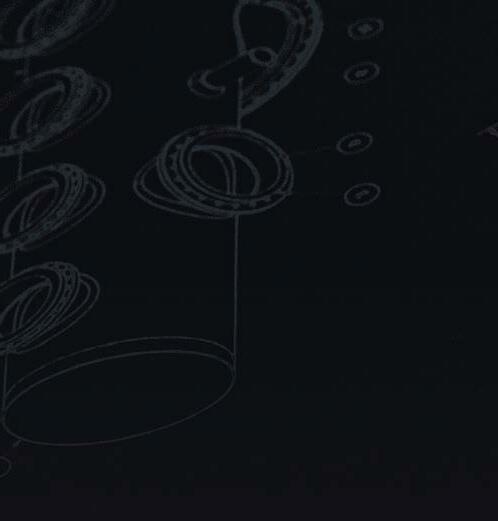


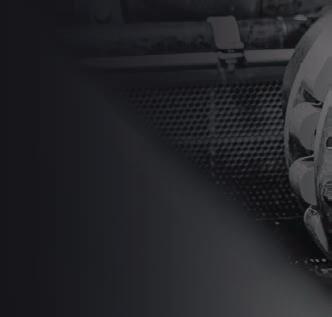
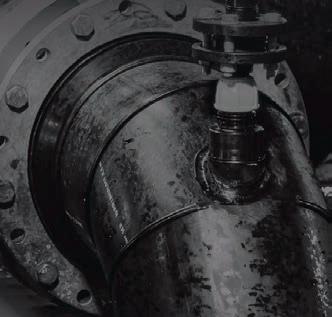




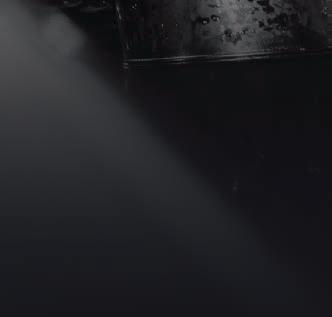

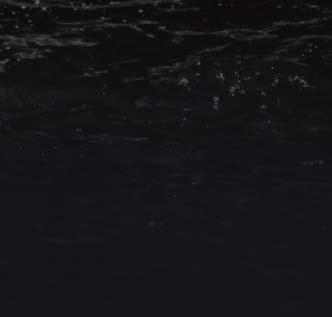

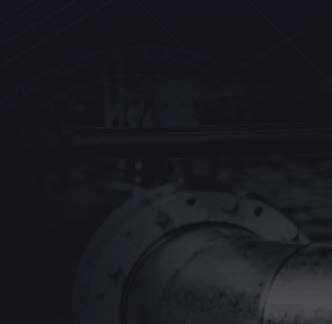

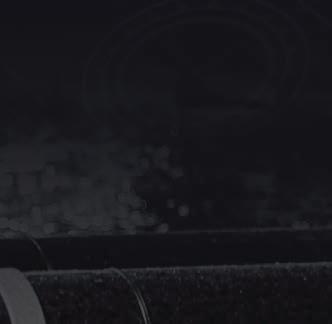




THE Scottish Government has set up a Consenting Task Force to help streamline the process for approving proposals for new or expanded fish farms.
The announcement was included in the Scottish Government’s Strategy for Seafood, launched by Mairi Gougeon, Rural Affairs Secretary, at the Association of Scottish Shellfish Growers conference in Oban on 6 September.
She said: “With increasing competition and pressure on our seas and coasts, it is important to recognise the value that our world-renowned seafood sector brings to the Scottish economy. In 2021, fish and seafood exports were valued at £1bn, which is 60% of total Scottish food exports.
“Today’s publication of the Strategy for Seafood marks our commitment to the sector, which employs almost 15,000 people across the country – primarily in our coastal and island communities.”
The Strategy reiterates the government’s commitment to a number of initiatives already announced, including the Blue Economy Vision and the introduction of a new category of Highly Protected Marine Areas, covering at least 10% of Scottish waters, in which all but minimal commercial activity will be barred.
For aquaculture, the strategy underlines the commitment to publish a Vision for Sustainable Aquaculture by the end of this year and to enact the recommendations set
out by Professor Russel Griggs for reform of aquaculture regulation.

The Aquaculture Council has been set up to oversee the reforms, and the strategy document says that a “consenting task group” will be established “to look at efficiency, effectiveness and transparency of the system, following an immediate change to the marine licence renewal period for finfish and shellfish farms from six to 25 years, bringing it in line with the Crown Estate Scotland Lease cycle.”
Gougeon also announced changes to fishing licences to ensure that more catches are landed in Scotland, benefiting local processors (see Processing News, page 22).
Tavish Scott, chief executive of Salmon Scotland, welcomed the publication of the strategy document: “This strategy recognises the important role the Scottish salmon sector plays as part of Scotland’s world-class seafood offering.
“A growing global population needs healthy, nutritious food, and Scotland can help feed the world by growing responsibly.
“The UN has pointed out that seafood and sustainable aquaculture is the way forward, and there is a real opportunity through the growth of the Scottish salmon sector.”
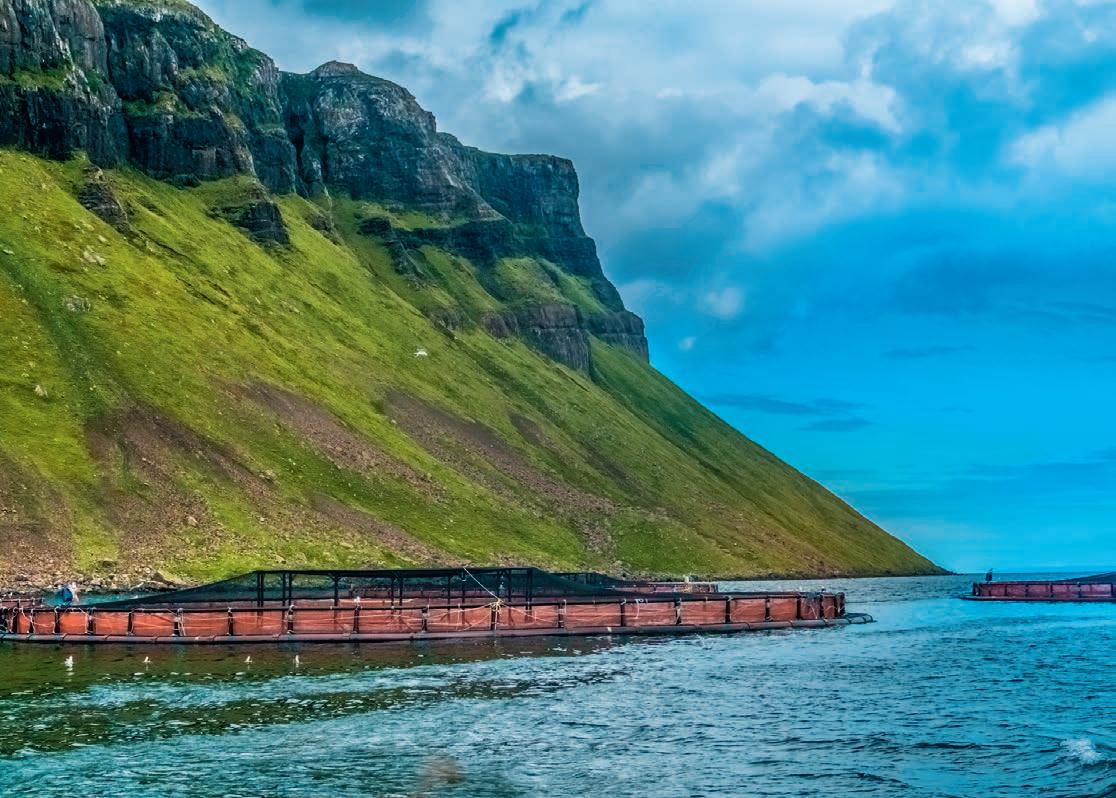
Top: Salmon fish farm pools in the see lochs near Portree, Sound of Raasay, Isle of Skye, Scotland.
Above: Mairi Gougeon


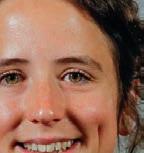
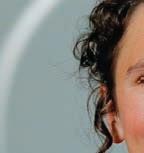
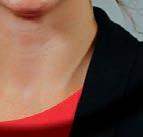




NOMINATIONS are now open for an awards programme that sets out to highlight excellent examples of learning and teaching in aquaculture and other farming sectors in Scotland.
The process for Lantra Scotland’s 2023 ALBAS, the Awards for Land-based and Aquaculture Skills, has now started. Employers, colleges and schools, delivering learning in land-based and aquaculture, are being asked to nominate their top candidates.
Lantra is a not-for-profit organisation, that works to support the rural economy and enhance the natural environment through supporting skills development.
This year, industry categories cover agriculture, animal care, aquaculture, equine, environmental conservation, fisheries management, game and wildlife, horticulture, land-based engineering and trees and timber.
As well as prizes for Overall Winner, Runner-up and Modern Apprentice of the Year, there are also prizes for Higher Education, School Pupil and Secondary Schools, CARAS (Council for Awards of Agricultural Societies), Jean’s Jam for inspirational tutor, the Tam Tod Trophy for outstanding young learner, and the Anna Murray Award for Partnership Working.
Lantra Scotland is encouraging entries online. Individuals are invited to nominate themselves, someone else, a school or a partnership at www.scotland.lantra.co.uk/how-nominate-personschool-or-project-our-albas
ADMINISTRATORS for the collapsed Dawnfresh Seafoods group say they are working to ensure the sale of its fish farming subsidiary, Dawnfresh Farming, “at the earliest opportunity”.
Callum Carmichael and Tom MacLennan were appointed as administrators for Dawnfresh Seafoods in February of this year.The group’s two processing sites, in Arbroath on Scotland’s east coast and Uddingston near Glasgow, have already been sold to Lossie Seafoods and Thistle Seafoods respectively.
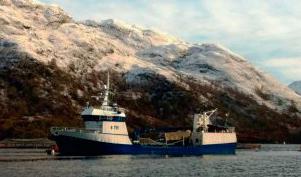
The administrators’ progress
report, filed at Companies House, shows that the group as a whole was running at a deficit of around £1.08m. It also reveals that the sale of the Uddingston plant fetched £6.8m.
The administrators expect that preferential creditors, including staff and HM Revenue & Customs, will be paid in full. Unsecured creditors are expected to receive a payout, but the amount cannot be determined yet.
The report says that the Dawnfresh Farming business, which operates seven fish farms and hatcheries across Northern Ireland and Scotland, continues to trade solvently. The company is currently being marketed for sale and, the administrators say, “offers are expected to be received in the coming months.”
The UV and Ozone water treatment specialist for fresh and salt water disinfection



Natural technologies to improve water quality & fish welfare
Easy to install, operate & maintain
State-of-the-art controls & communications
Live OPEX calculator & trending

BAKKAFROST Scotland (formerly the Scottish Salmon Company) celebrated another significant industry win after scooping two top awards at the Scotland Food & Drink Awards 2022.
Native Hebridean Smoked Scottish Salmon won
the top prize of the night to be named "Product of the Year" and also beat off some strong competition to be named the "Artisan Product of the Year". Managing Director of Bakkafrost Scotland, Ian Laister said: “To receive not one but two Scotland Food & Drink Awards and the top award is testament to our commitment to quality products, local provenance, and continued innovation.”
FISH health diagnostics business PatoGen has appointed Dr Johanna Baily as Senior Adviser in Histopathology. PatoGen, which has its headquarters in Ålesund, Norway, has been operating in Scotland since 2014 and opened a laboratory in Oban last year.
Dr Baily joins PatoGen from the University of Stirling, where she was Senior Lecturer in Aquatic Pathology. She is a European specialist in veterinary pathology, member of the European College of Veterinary Pathologists (ECVP) and brings first-hand expertise in health and welfare of farmed fish.

She was previously a lecturer in Veterinary Anatomical Pathology at the University of Edinburgh.

MOWI Scotland is appealing to the Scottish Government to reverse the planning decision that has blocked expansion at the company's farm on Loch Hourn, a sea loch on Scotland’s west coast.
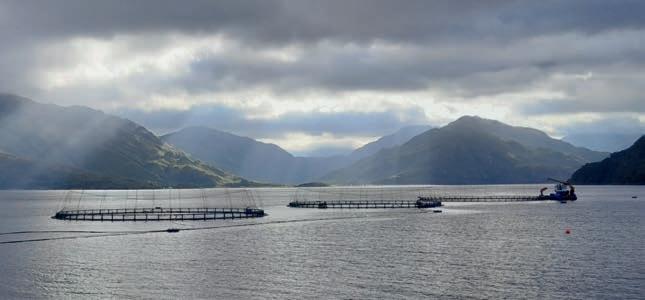
The salmon producer had applied for permission to add another cage and increase biomass at the site by 10%, to 2,750 tonnes, but in June the Highland Council’s Northern Planning committee, in Dingwall, voted by a narrow margin against the application.

Opposition to the farm site expansion was coordinated by the Friends of Loch Hourn Group, including local campaigners and environmentalist organisations who believe that fi sh farming in the loch is harming wild salmon, especially in terms of increased sea lice numbers in the loch. The group also says fi sh farming threatens native shellfi sh.
assessment of the application and Environmental Impact Assessment Report.”
Mowi will be arguing that the risk assessment carried out on the application by the Scottish Environmental Protection Agency (SEPA) concluded that the site expansion would not pose any signifi cant risk to protected species and seabed habitats.

The company also believes that that fewer, larger pens will have a number of benefi ts including reduced visual impacts, operational effi ciencies, reduced fi sh stocking densities and improved health and welfare for the sale salmon.


Despite the green light from SEPA, campaigners opposing the site compiled an alternative report putting the case against the Loch Hourn site, which appears to have swung the planning committee to a 7-6 decision against.
FISH farmers will have the opportunity to find out how better connectivity can lead directly to better fish welfare –and more profitable operations – at a webinar jointly hosted by Fish Farmer magazine and technology experts Krucial.
The webinar, taking place on 2 November 2022, will explore ways in which resilient connectivity and timely data can help farm operators achieve a clearer view of their operations.
Connectivity for good: why better connected fish
farms will lead to healthier fish takes place on Wednesday 2 November 2022, 2pm-3pm (UK time). For free registration or to find out more, please go online to: content.krucial.com/connectivity-forhealthier-fish-webinar-sign-up or scan the QR code. To find out more, turn to page 44 of this issue.
Stephen MacIntyre, Head of Environment at Mowi Scotland, said: “After careful consideration we have concluded there are strong evidence-based grounds to contest the reasons for refusal and, in accordance with the statutory provision, we intend to appeal against the decision.
“In this appeal we present clear evidence and information showing why we believe the decision to refuse planning permission was not consistent with development plan policy nor a proper
Stephen McIntyre commented, announcing the move to appeal: “We acknowledge that the planning application resulted in a mix of positive and negative feedback from local residents about the farm that has been operating near the Arnisdale community for the past 30 years. Notwithstanding, we expect that development decisions that affect the livelihoods of many local families be evidence-based when considering social, economic and environmental sustainability.”
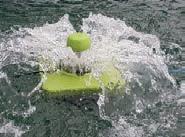
FISH farming companies in Scotland were doing their bit in September as part of the Great British Beach Clean. Employees, families and friends took part in the annual event to clear litter from local beaches. The UK-wide initiative was organised by the Marine Conservation Society, which will use the litter collected to analyse the sources of shoreline pollution and how best to tackle it.
Mowi was represented in clean-ups across Scotland, including Caol Shore near Fort William (pictured, above), Maclean’s Nose, Poll na Gille and Muck, where the team collected 35kg of rubbish.
Staff from Scottish Sea Farms also got involved at sites on Shetland, Orkney and the Scottish mainland. Staff from the company’s Barcaldine hatchery took part in the clean-up at Teithil beach, and teams also got stuck in at three sites each on Orkney and Shetland (pictured, right).


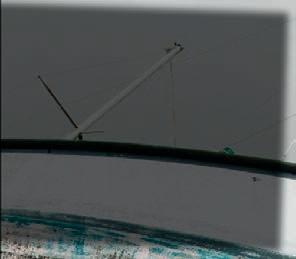
THE Scottish business of Bakkafrost has reported a pre-tax loss of £46.18m, on turnover of £154.35m, for the year to 31 December 2021.
The 2021 report for the Scottish Salmon Company (SSC), which now operates as Bakkafrost Scotland, describes 2021 as “a challenging year”.The losses before tax represent an increase of just over 150% while turnover was down by 14.5%.

The company describes “…continued volatility and uncertainty in global markets during 2021 due to Covid-19.”


SSC also faced biological challenges in 2021, notably with compromised gill health and secondary complications including blooms of micro jellyfish and “fish handling during necessary treatments.”


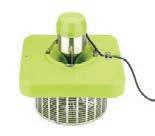

The situation improved towards the end of December last year, the company says, with improvement continuing into early 2022.

Bakkafrost’s five-year investment
plan for Scotland has so far included a new wellboat with a large freshwater treatment capacity and a new delousing and farm service vessel, the Bakkanes (pictured).
Construction also started, last year, on the fourth phase of the company’s hatchery at Applecross, on Scotland’s west coast, which is intended to allow for the rearing of larger, more resilient smolts before they are transferred to pens at sea.

A trading update from Bakkafrost earlier this month shows that its operations in Scotland are continuing to turn around.
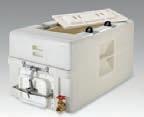


The expected third quarter harvest is 8,100 tonnes against 6,900 tonnes a year ago.This is made up of 5,100 tonnes from Scotland South and 3,000 tonnes from Scotland North.
The Q3 harvest from the Faroe Islands has also increased, up from 14,900 tonnes in Q3 2021 to 16,800 tonnes this year. This makes a total group Q3 harvest of 24,900 tonnes, an increase of 3,100 tonnes on Q3 last year.

achievement for the farm team. It also fuels appetite across the region to see more Orkney farms work towards, and achieve, certification.”
Scottish Sea Farms said Lober Rock, which became operational just three years ago, has had an excellent start, with 91% superior grade fish and a survival rate of 88% for its first generation.
Scottish Sea Farms Aquaculture Technical Lead for ASC, Anna Price, said: “Having produced a really strong first generation of fish, Lober Rock was an obvious contender to be put forward for ASC certification.
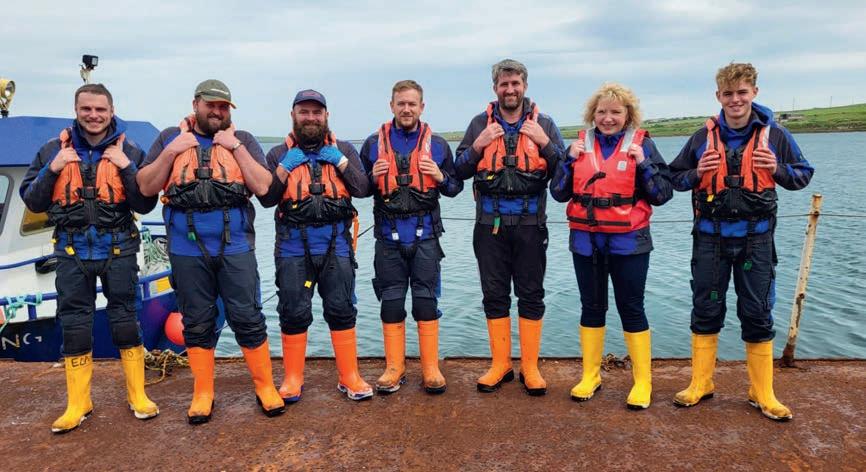
“The farm team are passionate about what they do, ambitious to do even better and understood from the word go that the certification process could only help push them on further.
SCOTTISH Sea Farms’ Lober Rock site in Orkney has been awarded Aquaculture Stewardship Council certification. It is the first of the company’s sites in Orkney to win ASC status.
Lober Rock, a marine salmon farm at the south-easterly corner of Scapa Flow, underwent a series of audits to meet the ASC’s stringent criteria. Earlier this
year Scottish Sea Farms’ Summer Isles site, on the west coast of Scotland, was awarded ASC certification.
Orkney Regional Manager Duane Coetzer said other farms in Orkney are now being considered for accreditation.
He added: “For Lober Rock to be the second farm to be ASC accredited, and do it quite flawlessly, is a fantastic
“The aim is now to have at least another two farms in the region accredited within the next 12 months – along with our wider farming estate, because the more we go through the certification process, the more we learn and the greater the opportunities for real and positive change across the company.”
THE salmon industry contributed £760m to Scotland’s economy in 2021, according to the latest economic report from trade body Salmon Scotland.
The figures from Salmon Scotland show a direct economic contribution of £303m in Gross Value Added (GVA) in 2021, up nearly a fifth on pre-pandemic levels of £254m in 2019.
The study calculates that the sector also indirectly generated a further £397m in GVA through the industry’s supply chain, which supports jobs throughout Scotland.
The salmon sector’s economic contribution was up by nearly 20% last year when compared to 2019.
Salmon Scotland Chief Executive Tavish Scott said that reforms to the regulatory and planning system for salmon farming, currently being discussed, could potentially result in Scottish salmon generating as much as £1bn for the Scottish economy through sustainable growth.
Salmon farming directly employs more than 2,500 people in coastal communities in rural Scotland, with a further 10,000 Scottish jobs elsewhere dependent on the sector.
The study found a further £66m positive impact in employment costs (up 22.2% from £54m in 2020), benefitting local communities and companies like accommodation providers and retailers all year round, taking the combined total to £766m.
It also breaks down the economic contribution the sector makes to Scotland’s five salmon producing regions:
• £224m across the north west Highlands
• £151m in the Western Isles
• £150m in Argyll and Bute
• £137m in Shetland
• £75m in Orkney.
Tavish Scott, chief executive of Salmon Scotland, said: “Scottish salmon generates vital wealth for the country, and specifically for our islands and Highland coastal communities.

“Farm-raised salmon is the economic backbone of some of Scotland’s most isolated areas, creating thousands of local jobs and opportunities.
“Everyone in the sector is part of a global success story with the highest environmental and welfare standards that puts the besttasting and healthiest protein product on people’s plates around the world.
“All this has been achieved by a dedicated workforce despite the incredible challenges of Covid and Brexit, so by tapping into salmon farming’s full potential I am confident the blue economy can deliver even greater benefits for local communities – and could be worth £1bn to the Scottish economy in just a few years.”
He went on to say: “It is imperative that the Scottish Government enables a framework that is both transparent and efficient and the UK Government works to address the post-Brexit challenges at the border to ensure that Scottish salmon can turbocharge the country’s economy.

ORGANISERS of the biennial International Sea Lice Conference have announced that Scotland is to host the next meeting in 2024, after a successful bid was led by the Sustainable Aquaculture Innovation Centre (SAIC).
The conference will bring together leading international scientists, fish health practitioners and regulatory agencies to share research and exchange insights on the key biological and environmental factors associated with sea lice and their management.
The 2024 conference, which will be the 14th event since the 1992 inception of the series in Paris, sees the return of the International Sea Lice Conference to Scotland, after it was last held in Aberdeen in 2001. The decision-making process kicked off earlier this year during the 2022 summit, hosted by the Faroe Islands after a twoyear Covid-19 delay. SAIC’s bid highlighted the growing role of Scottish aquaculture in serving the global need for sustainable protein and the importance of collaboration and knowledge sharing across the sector to tackle environmental and health challenges.
Planning for the conference is already underway, and organisers expect that researchers travelling to Scotland will have opportunities to experience the aquaculture sector firsthand with site visits and a range of sessions hosted by local and international experts on sea lice. Past events have featured a variety of research topics including the biology of sea lice, sea louse management, epidemiology, and interactions with the environment.
Heather Jones, CEO of SAIC, commented: “It is great to see such an important global summit returning to Scotland, where our aquaculture sector is thriving and we have a wealth of leading academic expertise. In collaboration with other ‘Team Scotland’ organisations, SAIC is looking forward to welcoming representatives from the international academic community to share knowledge and new ideas about the management of sea lice, which is an ongoing focus for the sector as we continue to expand the economic impact of aquaculture while minimising its environmental footprint.”





NORWAY’S fish farmers are still reeling from the news that the Norwegian Government is to introduce a new “ground rent tax” on their marine operations.

The levy, also referred to as a “resource tax”, was confirmed in the Norwegian Government’s budget on 6 October, the first to be delivered by Trygve Slagsvold Vedum, Finance Minister in the centre-left coalition which came to power this year.

It is expected to generate revenues of up to NOK 3.8bn (£325m) annually. The measure will take effect as from the 2023 tax year. Proceeds from the tax will be shared equally between national and municipal authorities.
The resource tax is also being levied on Norway’s offshore wind industry, but it will not apply to land-based fish farms.
Smaller farmers, producing less than 5,000 tonnes a year, are set to be exempt from the new tax, but larger producers of salmon and trout have seen their share prices plummet and many have taken action to scrap investment plans.
Mowi, which is cancelling a £19m biomass increase, said: “The aquaculture industry is a future industry that we, as a nation, want to grow, and the proposed tax proposal affects investment ability and willingness very negatively.”
The company argued that what will become a total tax rate of 62% will stop significant investment along the entire coast which will not only lead to fewer jobs locally, but also the transfer of value from the coastal communities to central areas.
Mowi also pointed out that it is a global business, suggesting that there are other countries, (including Scotland and Ireland), where it can funnel investment.
The Lerøy Seafood group and Cermaq are also
shelving investment plans. Cermaq CEO Steven Rafferty said: “Based on the new proposal, we have no choice but to put investment plans on hold. The proposal will affect growth and job creation in many coastal municipalities in which we operate.
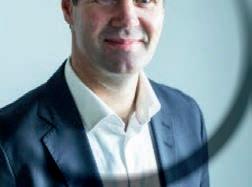
“Cermaq has investment of more than NOK 5bn [£415m] in its two Norwegian farming areas of Nordland and Finnmark since 2016 and the intention was to invest a similar amount in the coming years.
“We planned a new hatchery in Hasvik municipality in Finnmark that would contribute 30 new jobs, but that project has now been put on hold.”
Similar sentiments have been expressed by Lerøy, which is cancelling plans to purchase 614 tonnes of maximum permitted biomass worth NOK 123m (£10m) and postpone a NOK 420m (£35m) increase in production capacity in Troms county.
The company said: “It [the tax plan] creates unjustifiable framework conditions for the industry in Norway, and changes opportunities and incentives for investments other than maintenance.”
CEO Henning Beltestad added: “Norway should take responsibility, not least in these times, and continue to facilitate the production of food for the world’s population.
“The proposal for ground rent tax will stop the development of the industry’s value chain and thus reduce all its direct and indirect ripple effects along the coast.”
There has also been speculation that some large salmon producers could be broken up in order to bring production below the 5,000 tonne threshold.
Seafood Norway, the fishing and aquaculture
employers’ organisation, has accused the Norwegian government of worsening an already dramatic situation for the country’s seafood.
Chief Executive Geir Ove Ystmark said that while the shock of the 40% ground rent tax was starting to subside along the coast, the industry was already witnessing an investment freeze that the country cannot afford.
He continued: “The aquaculture industry has already had the handbrake completely pulled up. This is very dramatic for activity and job creation along the coast.”
“Increased wealth tax and increased dividend tax reinforce the cocktail of increased valuation and increased rates on the two taxes. This creates further challenges for the aquaculture companies. But it does not exclusively affect aquaculture directly. It affects all Norwegian ownership.

“For the fishing industry and the supplier industry, there are initially tight margins. The proposed changes to the aquaculture tax have already created reduced assignments for the supplier industry and the structure of the ground rent tax weakens the potential for processing salmon and trout in Norway. The increased rates intensify the problems for this part of the industry as well.”
Ystmark added: “Norwegian business must have the finances to carry out the green shift.




We need 250,000 new, profitable jobs by 2030.
“I can’t see that the government has realized that this requires economic muscle.”
Calculations by the business organisation NHO showed that the country is facing


significantly tougher economic times than the government has anticipated in its budget plans. Ystmark said Seafood Norway will thoroughly review the totality of what the government has put forward and continue the political work until the budget hearings in the Storting, Norway’s parliament.
Trygve Slagsvold Vedum appears to be undeterred by the industry’s reaction. He told financial website E24 that Mowi alone has paid out around three billion krone to shareholders so far this year.


He said he wants the industry to be profitable, pointing out that companies also get a 40% tax allowance for investments. He also intends to consult local communities about his plan.
Vedum also told E24 that Mowi’s largest shareholder John Fredriksen and SalMar founder Gustav Witzøe had made enormous fortunes from using Norway’s fjords, so they should share more with the local communities.
Asked if he had nightmares about “emigrating salmon barons and dying coastal villages”, he replied “No – I have not”.


SEAFOOD Norway, the aquaculture and fishing employers organisation, has hired Peder Egseth, the former right hand man to ex Conservative Prime Minister Erna Solberg, to head the organisation’s business policy.
He takes over next month and will lead and coordinate the organisation’s work with the Storting, authorities, political parties, NGOs and other central actors.
“With a background as state secretary at the Prime Minister’s office and a heavy political, economic and organisational background, Peder is the right man for Sjømat Norge [Seafood Norway]”, says CEO Geir Ove Ystmark.
In Norway, a state secretary is a partisan political position within the executive branch of government, below that of a minister.

Egseth takes over from Aina Valland who is leaving to take up the post of Communications Manager at Lerøy Seafood Group.
Egseth said: “Working closely with the coastal industry is very motivating. The seafood industry consists of owners and business managers who are passionate about building communities and creating more jobs.”
position as the country’s second most important export industry.
In the third quarter (July-September), exports hit a record NOK 39 billion (£3.25bn) up from NOK 36bn (£3bn) last year with salmon representing 72% of that figure and 49% of the total export volume.
Salmon exports during Q3 totalled 355,000 tonnes and were worth NOK 28bn (£2.3bn).
Chramer said in the EU home consumption was falling but restaurants were now taking an increasing share, compensating for the decline in grocery sales.
He added: “However, there are challenges in other parts of our seafood exports. Dry fish has a weak development so far this year, and there is a decrease in volume for both fresh and frozen cod fillet products.”
NORWEGIAN seafood exports have broken through the significant 100 billion kroner barrier, three months before the end of the year.
Figures from the Norwegian Seafood Council published earlier this month show exports totalled a new record of NOK 109 billion (£9bn) in the first nine months of 2022, with farmed salmon accounting for almost 75% of that figure.
This represents a growth of 29% compared with the same period last year, almost certainly due to soaring salmon, cod and haddock prices.
Christian Chramer, the Council’s new CEO, described the growth as “impressive” adding: “Norwegian seafood has maintained its strong global position both through the corona pandemic and the demanding times we find ourselves in now.
“Increased production costs, challenging logistics and soaring food inflation in our most important markets have raised seafood prices, but at the same time means that we are facing uncertain times when purchasing power weakens and markets are changing rapidly.”
Fisheries Minister Bjørnar Skjæran said the achievement once again confirmed seafood’s
Poland and Denmark, two important salmon processing countries and France were once again the most important markets.The average price for salmon during the quarter was NOK 71.8 (£5.99) per kg, up by 26% on the same period last year.
September turned out to be another record month with exports increasing by 27% on a year ago to NOK 15.1 bn (£1.25bn), a rise of 30% or NOK 6.5bn (£540m) on Q3 last year.
The value of September salmon exports rose by 34% to NOK 10.4bn (£866m) on a volume growth of 6%.
Above left: Norwegian salmon
ICELANDIC salmon farmer Arnarlax has received Aquaculture Stewardship Council (ASC) approval for its Foss site in Arnarfjörður.
ASC is one of the strictest environmental certifications for aquaculture and was developed in collaboration between the industry and the World Wildlife Fund for Nature (WWF).
Arnarlax is also known as Icelandic Salmon and is owned by the Norwegian group, SalMar. The company said: “With the ASC certification, the company commits to reducing the impact on the local ecosystem in various ways, often beyond what is required by law and regulations.”

Silja Baldvinsdóttir, Arnarlax’s quality manager, added: “It is a great recognition for Arnarlax to receive this certification for
our farm Foss in Arnarfjörður, as there are strict conditions that must be met.
“Now all our active farming areas are ASC certified, underlining the great emphasis we put on the operations of the centres having as little impact on nature and the surrounding ecosystem as possible.
A month ago, Arnarlax announced a 103.5% increase in half year operating revenues to just over €72m (£63m). H1 operational EBIT (profit) rose from €3.13m (£2.74m) to €23m (£20.13m).
Björn Hembre, CEO of Icelandic Salmon and Arnarlax said growth plans were progressing as planned, particularly after the acquisition of an additional smolt plant at Ísþór in Iceland, allowing access to larger smolt and lower biological risk.
Above: Arnarlax workers and workboat, at one of the company’s sites in Iceland

“Therefore, the ASC certification gives us great motivation in our continued progress to work in harmony with the environment and society.”

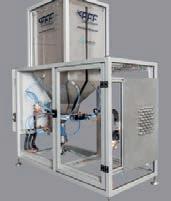
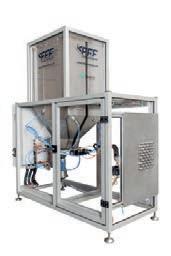


THE Faroese Government has presented the country’s parliament with details on how it plans to increase the revenue tax on the salmon farming industry.
The Faroes proposal includes three important changes to the current revenue tax system, originally introduced in 2014:
• changing the number of applicable tax rates from three to five;










• increasing the salmon price thresholds that determine when each tax rate is applicable; and

• linking the salmon price threshold to the average production cost for the Faroese salmon industry, which will be assessed annually.


The thresholds are based on the average annual production cost for the Faroese salmon industry. For 2023, an average production cost of 39.15 DKK (£4.63)/kg will be applied.
For 2023, the proposed change means that the revenue tax rates are likely to be:
• 0.5% if the salmon spot price is less than 39.15 DKK per kg (approx. £4.63 per kg);
• 2.5% if the salmon spot price is between 39.15 and 44.15 DKK per kg (approx. £4.63-£5.22 per kg);
• 5.0% if the salmon price is between 44.15 and 54.15 DKK per kg (approx. £5.22-£6.40 per kg);
• 7.5% if the salmon price is between 54.15 and 69.15 DKK per kg (approx. £6.40-£8.18 per kg); and






• 10% if the salmon price is above 69.15 DKK per kg (approx. £8.18 per kg).
The proposed changes have yet to be approved by the Faroese Parliament.

Ahead of the official announcement, the CEO of Faroesbased salmon producer Bakkafrost CEO Regin Jacobsen alerted shareholders to the news that the Faroes is following Norway in imposing new taxes on the aquaculture industry.

Jacobsen has yet to disclose how much the proposals will cost the company but some reports suggest the industry as a whole may have to stump up an extra DKK 60 million –around £7m.






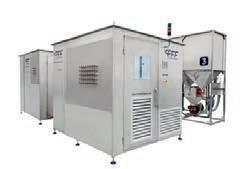


The vessel was handed over by the builder, MEST shipyard, to the Faroese salmon farmer.

The all-electric catamaran is the result of an energy project organised by the Nordic Council of Ministers, which aims to find sustainable energy solutions for more remote fish farming areas.
Regin Jacobsen spoke about his company’s sustainability strategy and the importance of co-operation between the authorities and the industry if sustainable solutions are to be implemented in the Faroe Islands.
He said: “Co-operation enables dreams and visions to be realised, but they can turn into nightmares if the cooperation does not work or is unorganised. Thus, it is of the utmost importance that we facilitate a land-based grid, which can produce and supply enough green energy”.
BAKKAFROST has taken delivery of its first fully electric catamaran as part of the company’s strategy to increase the use of sustainable energy.
The company’s CEO, Regin Jacobsen, used the launch to call for greater investment in the Faroes power grid in order to help wean industry off its dependence on fossil fuels.
He added: “We need to co-operate openly and be willing to explore new paths in all areas if we want to make a positive (environmental) impact. There are still many changes that must be made if we are to reach our goals, but currently, things are going too slow, and if we do not start to make courageous decisions, we will be too late”.
MEST Shipyard CEO Mouritz Mohr said the electric catamaran will give Bakkafrost employees a more comfortable working day without engine noise or the smell of diesel engines.
Guests at the ceremony included the Faroese Prime Minister Bárður á Steig Nielsen.
LAND-based fish farmer Salmon Evolution has announced that it plans to start its first commercial slaughter within the next few weeks – possibly by the end of this month.

In an Oslo Stock Exchange announcement, the company said the strong biological performance reported in its second quarter presentation had continued into Q3 at the company’s first production facility, at Indre Harøy in Møre og Romsdal county, Norway.
In September the average weight was estimated at around 3.3kg with some individual fish well over 4kg.
The company said it was still on track for its first slaughter in the final quarter of this year, adding: “The first fish transfer process in the facility has been completed, and Batch 1 is now divided into two tanks.
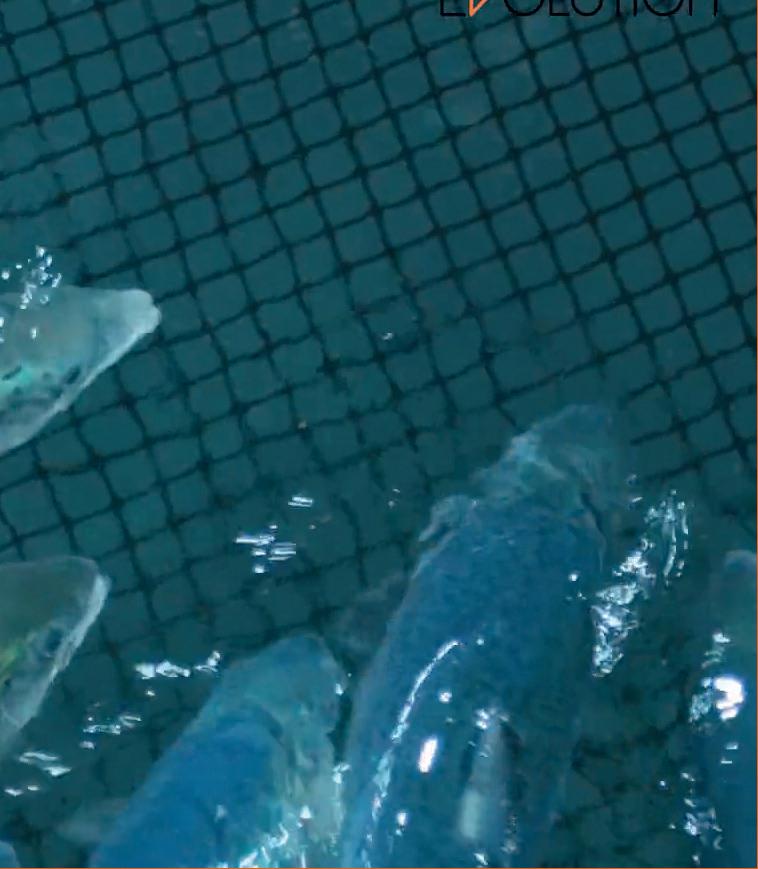
“Salmon Evolution is now in the process of preparing the next smolt releases, further fish transfer activities, as well as the first slaughter, the [last] of which is tentatively expected to take place in late October/early November.”
It says that during the last few months extensive testing of product quality had produced very positive results confirming
good fish health and fillet quality, a firm meat texture, a uniform red meat colour and excellent salmon taste.
Batch 2 was put into the plant on 13 July with an average weight of 125 grams. Good biological performance is also reported for this fish, where the average weight is now estimated at around 710 grams.
Established in 2017 and listed on the Oslo Stock Exchange, Salmon Evolution is a relatively new land-based salmon farmer. The company is targeting a production capacity of 100,000 tonnes HOG (head on, gutted) by 2032.


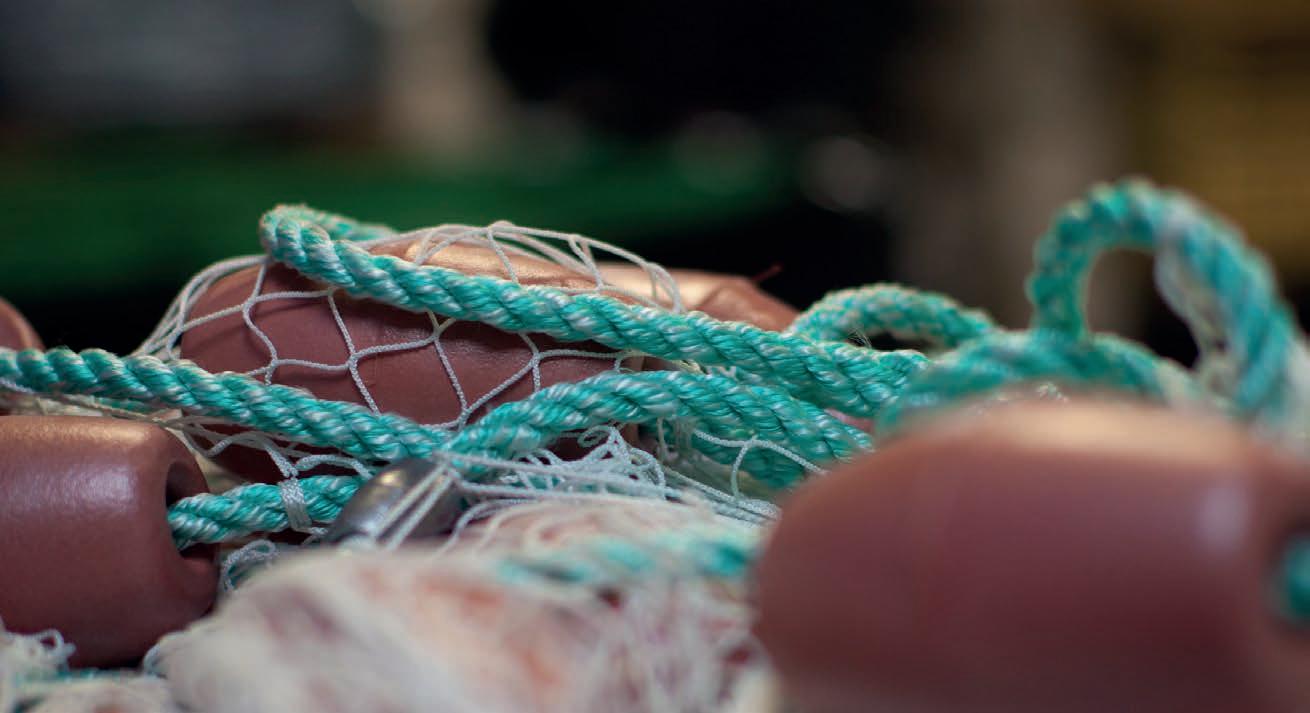
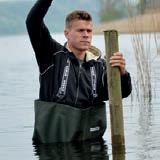





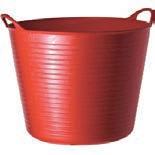
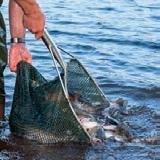

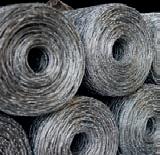
THE seafood sector along Canada’s east coast was battered by storm Fiona at the end of September. The damage is likely to run into millions of dollars and Prime Minister Justin Trudeau has committed to CAN $300m (£197m) in emergency funding.
Such events are rare in this part of Canada and Fiona was one of the most powerful storms for many years.
The storm hit provinces such as Newfoundland, Nova Scotia and Prince Edward Island. It tore up buildings and left much of the region without power.
Along with the damage to homes, Fiona tore into fish farms, fishing harbours and seafood processing sites.
But reports suggest that the region’s lobster industry in some areas may have been the hardest hit.
However, because the level of lobster fishing is lower in the autumn the damage may not be as severe as it could have been. The industry is likely to ask for an extension to the fishing season to make up for some of the losses.
Osborne Burke, general manager of the Victoria Coop Fisheries in Neil’s Harbour, Nova Scotia, told CBC news that the plant suffered “horrendous” damage, and several 40-foot sea containers full of frozen fish were “thrown around like dominoes”.
The extent of the damage to salmon farms is still being assessed but major names such as Grieg and Mowi have facilities in that area.
The Canadian Aquaculture Industry Alliance (CAIA) estimates are that the farmed shellfish sector alone on Prince Edward Island has suffered at


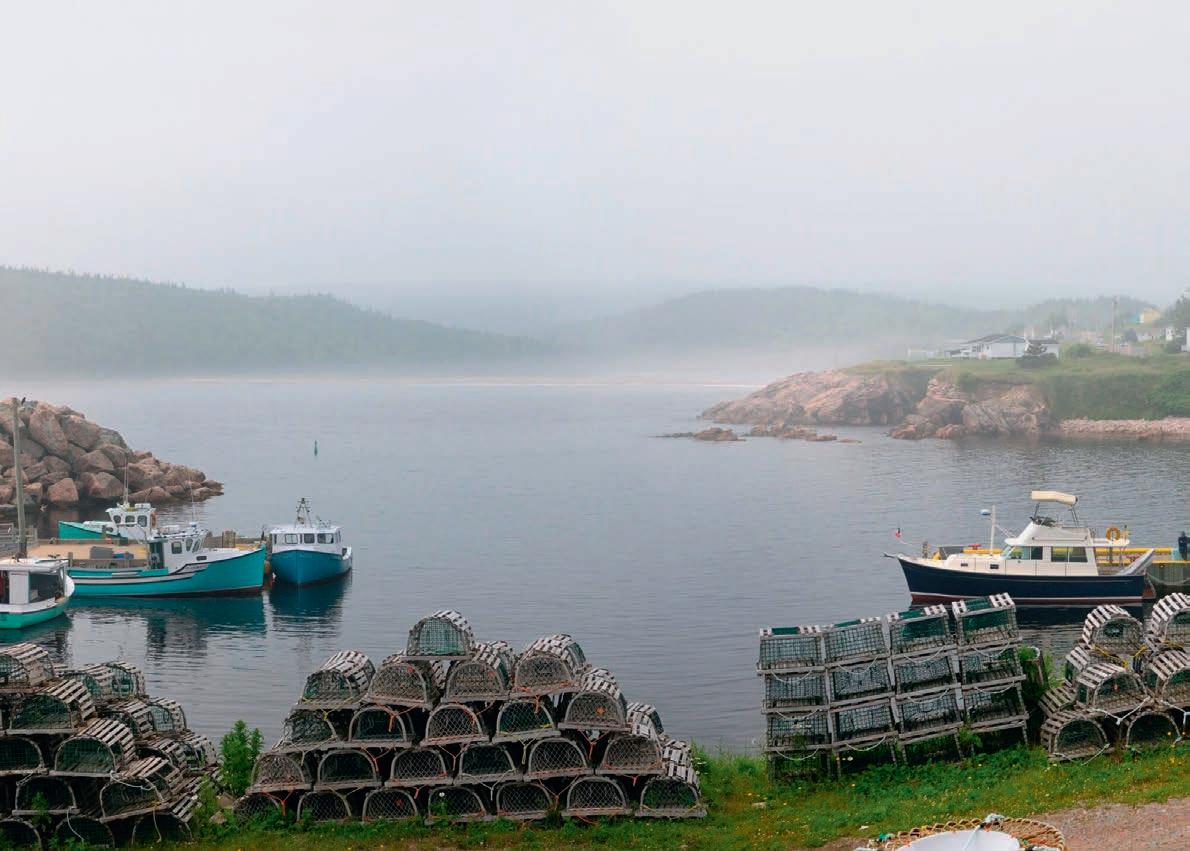
least CAN $50m (£33m) in damages.
Almost all these marine farmers are small and medium-sized businesses, the CAIA says, who cannot access private insurance for crop loss and disasters, while land farmers have access to government cost-sharing programs to support them.
Timothy Kennedy, CAIa President & CEO, said: “Food security and infl ation are the top concerns of Canadians, and we have a massive opportunity to grow healthy, sustainable seafood in Canada through aquaculture. However, our sector growth has flatlined for two decades, in large part because of a lack of will at the federal level.
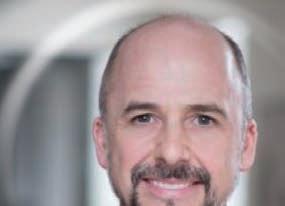
An event like Fiona sets us back, but also brings to attention the lack of consistent, national programs for seafood farmers to succeed.
“We appreciate the Prime Minister’s commitment of $300m for Fiona recovery, but the federal government must build the proper system of longterm supports to grow the seafood farming sector in Canada.”
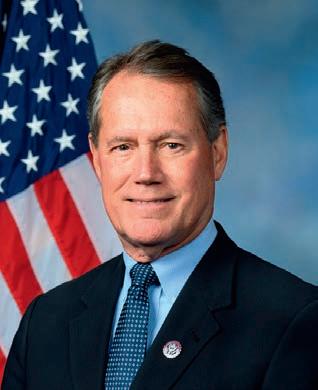

never been
Filter Value series focuses on reduced


simplified

A bipartisan group has been set up in the United States Congress to support the growth of America’s aquaculture sector.
The House Aquaculture Caucus is co-chaired by Representatives Kat Cammack (Republican-Florida), Ed Case (Democrat-Hawaii), Steven Palazzo (Republican-Mississippi) and Jimmy Panetta (DemocratCalifornia).

Caucus members include Reps. Salud Carbajal, Jerry Carl, Buddy Carter, Rick Crawford, Scott Franklin, French Hill, Maria Salazar, Abigail Spanberger, and Rob Wittman.
It was established as a resource and forum to educate Members of Congress about the economic opportunities that an expanded US aquaculture industry would provide for congressional districts nationwide. The caucus will also provide policy updates and share initiatives in Congress that will help make American aquaculture more competitive globally.
Congresswoman Cammack
said: “Aquaculture should be one of the United States’ priorities as we grow our focus on food security. In Florida, we’ve seen the benefits of aquaculture first hand, breeding, raising, and harvesting shellfish, fish, and aquatic plants in our waters.
“We’ve demonstrated that it’s possible to provide healthy, fresh food that’s produced sustainably at home to support our growing population. The Aquaculture Caucus shares our enthusiasm for pushing these industries and their innovations forward while growing our infrastructure and market domestically.”
Bipartisan legislation, the Advancing the Quality and Understanding of American Aquaculture Act (AQUAA) Act, was introduced in November 2021 with the intention of establishing a clear, predictable permitting process for offshore fish farms to encourage more business investments in the US and encourage the industry to grow.
opportunities. With positive support from our communities and governments, Canada can realize this great sustainable, healthy and secure food opportunity for Canada.”
Outgoing Chair Jennifer Woodland added: “This sector has incredible potential for Canada. Low-carbon, innovative sustainable and secure food production, great jobs in coastal communities in all ten provinces and one territory, Indigenous partnership, economic opportunity and leadership. With deepened collaboration and united together we will continue our work to realize this sector’s great future in Canada.”
Additionally, Amédée Savoie (La Maison BeauSoleil) and Cyrus Singh, (k’awat’si Development Corporation) were newly elected to the Executive Committee while four others were re-elected including: Joel Richardson, Cooke Aquaculture Inc. (ViceChair); Cyr Couturier, Marine Institute, Memorial University of Newfoundland (Treasurer); Mia Parker, Mowi Canada West (Secretary); and Linda Sams, Cermaq Canada.
MOWI’S Director of Communications for Scotland, Ireland and Canada, Ian Roberts, has been elected as the new Chair of the Canadian Aquaculture Industry Alliance (CAIA) Board of Directors succeeding Jennifer Woodland of Nuuchah-nulth Seafood Limited Partnership who has
stepped down after almost three years. Roberts said: “The seafood farming community in Canada is focused and resilient. We are the seafood growth pathway for Canada with many coastal communities looking to grow sustainable foods and economic


Four new CAIA Board members were elected: Larry Johnson, Nuu-chah-nulth Seafood Limited Partnership; Cyrus Singh, k’awat’si Development Corporation; Jeff MacPherson, Atlantic Aqua Farms Ltd. (PEI); and Jennifer Wiper, Aquaculture Association of Canada (NB).



THE co-founder of a Japanese tech company using machine learning to make aquaculture more efficient has been honoured with an international award. Ken Fujiwara has been named as a Hero of Progress in an awards programme initiated by digital security business ESET. Together with his colleagues Masahiko Yamada and Takuma Okamoto, Fujiwara founded UMITRON, a business based in Japan and Singapore which builds user-friendly data platforms using IoT (Internet of Things), satellite remote sensing and artificial intelligence. UMITRON aims to reduce business risk, cut waste by ensuring precision feeding and improve fish welfare. For example, an algorithm developed by the company can determined fish appetite levels based on their behavioural responses.
ESET’s Heroes of Progress awards feature nine visionary thinkers across a range of fields, as determined by an expert judging panel, headed up by ESET chief business officer Ignacio Sbampato, which reviewed more than 50 shortlisted applications.



The events we hear about every day on the news at a global level will often filter down to local level, and changes and adaptations have to be considered as ways to deal with the consequences. The likes of the pandemic, global warming and changes in trade regulations are geopolitical events to manage at government level, but the impact of these have led to labour shortages, social distancing, interrupted supply chains and energy price hikes, to name but a few challenges that were not part of a traditional working model that now must be navigated in daily activities.
Where any move from traditional practices has taken place, it is often technology that has been injected into the process and creative methodologies have been applied as a way to solve the new problems that arise.




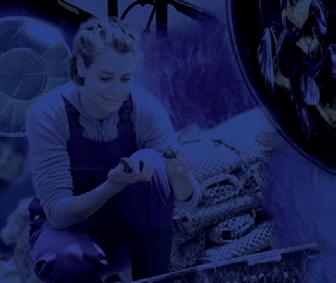



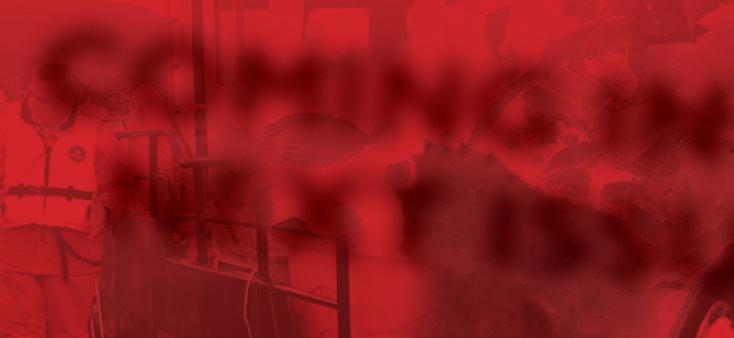






The new solutions can involve the automation of processes that would normally have been done by hand, but lack of resource has led to new ways to plant, pick, harvest, sort or pack produce.


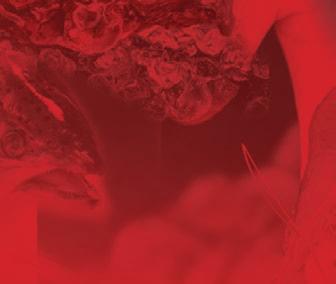

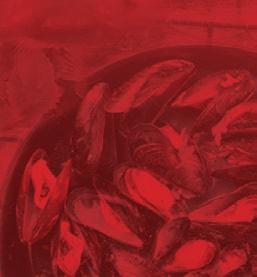
Or, where land has been damaged or the annual cyclical routine interrupted from drought, flood or combination of both, ingenuity has been applied to capture water through attenuation to drain, store, filter and ultimately re-use for irrigation.
There usually are not any off-the-shelf solutions for many of these problems, since there will be considerations unique to each location. This is where time, effort and expenditure


 Stephen McCallion Founder & CEO, ZLX Business Solutions
Stephen McCallion Founder & CEO, ZLX Business Solutions
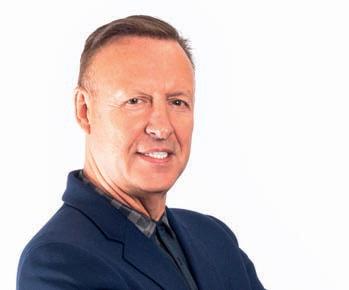

can often be applied to come up with process, system or tooling that help maximise the activity to keep it at the level of throughput that is required to be sustainable as a business. These activities can be considered as overhead costs, going beyond the normal working practices to find new, effective, sustainable solutions. Where development has taken place, there is help in the UK through HMRC to soften the blow of that expenditure. Where development has been applied, there are mechanisms available through tax rebate to claim back some of the outlay. Support to navigate this legislation and make sure that any potential rebate reaches its maximum potential is available. Visit the ZLX site below for more information

“There are mechanisms available through tax rebate to claim back some of the outlay”
the label, and cooking it until it is piping hot right through.”
Food Standards Scotland has developed an online Safe Smoked Fish Tool for manufacturers to assess their individual practices and ensure that they minimise the risk of contamination. The tool covers cold and hot smoking, as well as shelf life assessment.
THE message comes jointly from Food Standards Scotland, the UK Food Standards Agency and the UK Health Security Agency. Food safety professionals are concerned that an ongoing outbreak of Listeriamonocytogenesbacteria could be dangerous for some individuals, particularly those aged over 65, or who are pregnant, or have weakened immune systems.
The agencies recommend that people in these groups should make sure readyto-eat smoked fish is cooked through before they eat it.
An investigation has identified 14 linked cases of listeriosis since 2020, with eight of these occurring since January 2022, in England and Scotland. While the majority of Listeria cases cause mild gastroenteritis which usually persist for a few days, people in vulnerable groups can suffer more
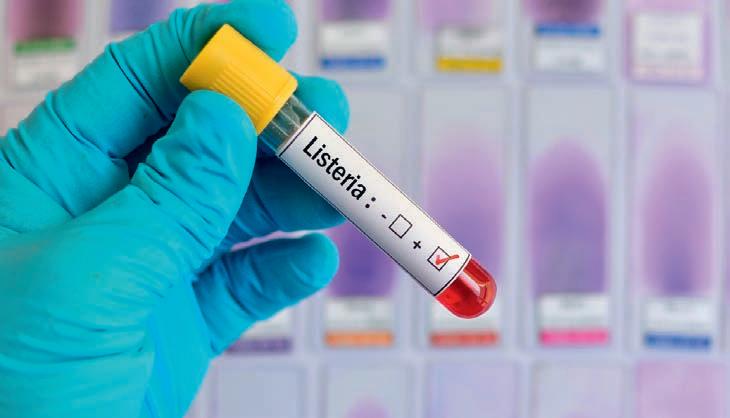
serious illness, including meningitis and life-threatening sepsis.
Ian McWatt, Food Standards Scotland (FSS) Deputy Chief Executive, said:
“While the risks to the general public of becoming seriously ill due to Listeria are very low, we need people who are vulnerable – specifically those over 65, pregnant women and people with weakened immune systems – to be aware of the ongoing risks of consuming readyto-eat smoked fish.
“If anyone from these groups is eating ready to eat smoked fish, we are reminding them of the advice to ensure that it is thoroughly cooked before they eat it including when served as part of a dish.
“People can also further reduce the risk by keeping chilled ready to eat smoked fish cold (5⁰C or below), always using products by their use-by date, following the storage instructions on
Adam Wing, Head of Trade Marketing –UK, Americas & New Markets, commented: “Seafood Scotland fully supports robust consumer protections in terms of the foods we eat. We are confident that Scottish seafood farmers and processors meet the required safety standards, and indeed we know that many go beyond these standards, such is their dedication to quality.
“People who are in higher risk groups are routinely advised to steer clear of a whole range of foodstuffs. Given this context, it is disappointing to see that smoked fish has been singled out in this way.”
Meanwhile, also in September, French retailer Leclerc withdrew its Norwegian-produced Ronde des Mers smoked salmon line after Listeria was found in several batches of the product.
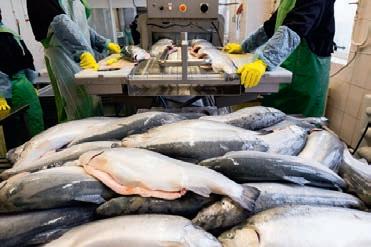
CHANGES to fishing licences in Scottish waters could help ensure more trade passes through processors in Scotland.
The Scottish Government is bringing in new requirements for vessels over 10 metres landing stocks “of key importance to Scotland”. From 1 January 2023 they will need to either land a set minimum percentage in Scotland (with the percentage required being dependent on the species landed) or give back fishing opportunities for the Scottish Government to allocate to other operators in the fleet.
The measures were announced as part of the launch of the Scottish Government’s Strategy for Seafood, which was presented at the annual conference of the Association of Scottish Shellfish Growers in Oban, on 6 October by Mairi Gougeon MSP, Cabinet Secretary for Rural Affairs and Islands.
She told the conference: “Each year Scottish vessels land around £100m worth of fish outside of Scotland, often for species for which we have ready processing capacity. These changes are an important step in ensuring
the people of Scotland benefit first and foremost from our fantastic natural assets and resources.”
The strategy document also reiterates the Scottish Government’s commitments to bringing out a new National Marine Plan, and to publishing its Vision for Sustainable Aquaculture before the end of this year.
Donna Fordyce, CEO Seafood Scotland, said: “Seafood Scotland supports the publication of this strategy which brings together a number of programmes and activities and sets out clear action areas in terms of innovative and sustainable practices that will enable our seafood industry to compete globally and contribute towards the circular economy.”
The strategy document also criticises the “confusion” caused by the UK Government’s £100m cross-UK Seafood Fund, arguing: “Fisheries funding is devolved and it should be for Scottish ministers... answerable to the Scottish Parliament, to make the appropriate spending decisions in this area in Scotland – not the UK Government.”
Consumers in vulnerable groups have been warned not to eat smoked fish unless it has been thoroughly cooked.“We need people who are vulnerable to be aware of the ongoing risks ”
CONSTRUCTION work for the expansion of Mowi’s Blar Mhor processing facility in Fort William, in the north of Scotland, is on track – and it has not stopped the plant’s day to day operations, the company says.
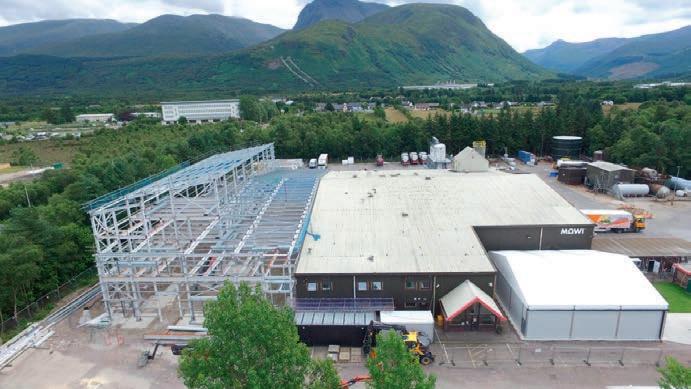
When complete, the upgrade, which includes the installation of state-of-theart robotic technologies for handling and grading salmon, will enable the facility to process and pack 200 fish per minute, and increase plant capacity to more than 80,000 tonnes annually.
Greg Riddle, from project manager Northern Light, told Mowi Scotland’s in-house newsletter The Scoop: “The walls
and roof for the new section are up, allowing for work inside to advance before the new equipment is installed. All this is taking place while the plant continues to process and deliver
salmon daily, which is very impressive.”
Donald MacIsaac, Mowi’s processing manager, said: “In addition to improving capacity and efficiencies on the processing
lines and packaging areas, our engagement with our employees has brought about plans to significantly improve our staff canteen and lounge facilities.
“Our new office space will be accessible by elevator, enabling new career opportunities to prospective employees with mobility challenges.”
NORWEGIAN salmon producer Kvarøy Arctic has won the Best Frozen Product category at Expo East in Philadelphia, USA, for its salmon hot dogs.
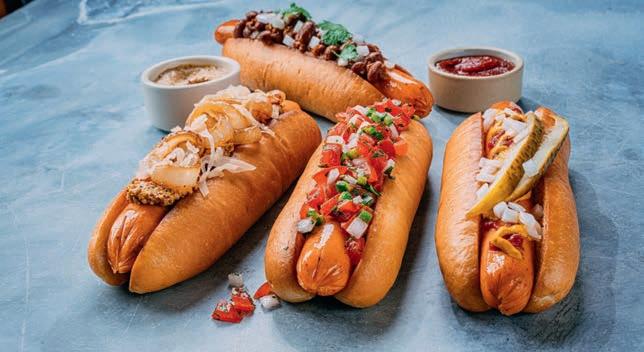
HILTON Food Group saw falling profits on increased earnings, year on year, for the first half of 2022.
The UK seafood and meat processing group reported revenues of £2.04bn for H1, up 19.2% on 2021. Operating profit was also up, by 5.6%, to £41.2m.
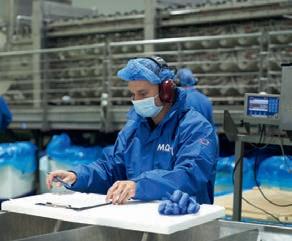
Adjusted profit before tax was affected by high interest rate costs, however, falling 3.9% to £34.4m, bringing adjusted earnings per share down 13.6% to 28p.
Volume was up by 3.6% to 271,708 tonnes.
In its investor presentation on the first half results, Hilton said that macroeconomic uncertainty will continue to influence consumer behaviour, but the group’s diversification would enable it to meet changing customer needs.
Hilton’s seafood arm saw the completion of its acquisition of Foppen, the Dutch salmon specialist which the group snapped up at the end of last
year. Combining Foppen with the existing UK seafood operation has created a business with revenues of more than £400m, the company said. The group expects the seafood segment to see growth of 5.73% annually.

Commenting on the results, Chief Executive Philip Heffer said: “In the first half of the year Hilton has further strengthened its position as the international protein partner of choice. We have continued to focus on our strategy of diversification and differentiation, driving a further increase in volumes, sales and operating profit... Hilton has not been immune from the impact of heightened inflation. While we remain watchful of any near-term changes in consumer sentiment, we believe that our international scale, strong customer relationships, and diversified protein offer leaves us well-placed within a growing global market.”
The Expo East natural foods trade show features healthy and sustainable lifestyle products. Kvarøy’s salmon hot dogs were praised not only for their taste and texture but also for reducing food waste, as they are made from trimmings and off-cuts from salmon processing.
“We are honoured to have both our product and related efforts be recognised by the New Hope Network, which has a proven track record of spotting the biggest innovators within the CPG
and retail ecosystem,” said Kvarøy Arctic CEO Alf-Gøran Knutsen. “It is our continued goal to marry the ideas of delicious, nutritious, and sustainable through our products and make these factors accessible to all consumers, and we believe our salmon hot dogs do an excellent job of conveying this.”
Kvarøy Arctic is a thirdgeneration Atlantic salmon farm on the Island of Kvarøy along Norway’s Arctic Circle. Recognised by Fast Company as one of the World’s Most Innovative Companies in 2022, Kvarøy Arctic is the first farmed finfish to carry the Fair Trade USA seal, and is BAP, ASC and GlobalG.A.P certified.
Above: Kvaroy Arctic’s hot dogs Left: The Blar Mhor construction Above: Staff at Blar MhorAswe leave the Elizabethan age and Prince Charles ascends the throne as King Charles III, the press has speculated whether our new king will continue to champion his environmental agenda or whether he will now take a back seat.
According to the BBC News, his friends say that he will not cool on environmental issues including climate change, even though the monarch is obliged to remain politically neutral. However, the BBC say that his concerns began long before environmentalism became mainstream. They say that within months of his investiture as Prince of Wales in 1969, the 20-year-old prince wrote to the then Prime Minister Harold Wilson expressing his worry about the decline of salmon stocks in Scottish rivers. He wrote that “people are notoriously short-sighted when it comes to questions of wildlife.”
Unfortunately, the BBC did not elaborate any further.
The letter was publicised when official papers were released under the 30-year rule. It seems that Prince Charles warned the Prime Minister of the dangers of over-fishing in a confidential hand-written note from Balmoral, dated September 12, 1969, it was not overfishing by anglers that had raised the prince’s hackles but rather commercial netting off Greenland. His note went on to claim that several species had been wiped out because no-one had woken up in time to see the danger.
However, it appears that his concerns were not all that they



might have seemed.
He told the Prime Minister that modern methods of commercial fishing seem to allow the fish absolutely no chance and the numbers taken each year had been increasing rapidly. By comparison, he said. the sport of angling has a huge following in this country and as a result there was great value to be gained from promoting the sport, especially to anglers from abroad.
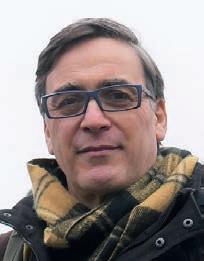
A year later, Harold Wilson wrote to the prince to say that greater restrictions had been imposed in Norway in relation to salmon fishing to which Prince Charles replied that it was a step in the right direction.
Prince Charles has always had a love of fishing, encouraged by his late grandmother who was a keen angler. It is not surprising that one of his first trips to Ireland included a private visit to go fishing.
The Irish Times recalled, following his accession as King, the prince’s first official visit to Ireland as the Prince of Wales. It was also the first official visit to the Irish republic by a member of the royal family. He took time out of the visit to spend two days at the fishery. Peter Mantle, the then owner of Delphi said of the visit in 1995 that the prince had a “genuine interest” in one of the big conservation issues in the west of Ireland at the time: the impact of salmon farms on wild fisheries such as Delphi’s.
Clearly, the Prince remembered these comments because seven years later in 2002, he held talks with Scottish Ministers at Balmoral to voice concerns that fish farms were damaging Scotland’s wild fish population. In 2016, this magazine reported that, as Patron of the Atlantic Salmon Trust and a keen angler, Charles was closely associated with the wild fish lobby and a vocal opponent of salmon
Left: Prince Charles (as he was then) addressing the Missing Salmon Alliance launch by video link in 2019
Opposite: Charles, Duke of Rothesay and Prince of Wales, at the Marine Harvest farm visit in 2016

farming. However, he had encouraged the International Sustainability Unit, a group he had established to help resolve some of the key environmental challenges facing the world, to look into the issues of sea lice. This led to Charles actually visiting a Marine Harvest farm in Loch Leven to look at their work with cleaner fish.
Interestingly, the visit was reported by the Herald as saying that Prince Charles has long championed sustainable fish farming, which isn’t true. He did support an aquaponics unit in Todmorden in West Yorkshire, but whilst being promoted as sustainable, it was never viable.

Since his visit to Loch Leven, Charles has remained somewhat quiet about salmon farming. This is no doubt due to the fact that by 2016, salmon stocks in Scotland’s
east coast rivers had collapsed and these rivers were many miles away from the nearest salmon farm.
In 2017, the prince spoke at the 50th Anniversary Dinner of the Atlantic Salmon Trust. He reminisced that he had begun to fish when he was aged seven at a time when the rivers were crammed with fish and the experience meant that he never wanted to fish for anything else.
He told the guests that in 1967, when the AST was formed, catches in the River Dee that flows through the Balmoral Estate were 8,000 fish whereas in 2016, the catch was only half that number. He also said that 30 years ago, one in four fish would return to Scottish rivers and now the number was one in 20. More importantly, he said that no-one had any idea why the fish were failing to return. Seemingly, the wild fish sector has not responded to his anguished speech because five years on we still have no idea as to what has happened to wild salmon. Instead, the focus remains firmly on the impacts of salmon farming.
Any hopes that the Prince of Wales would have continued to highlight the failure of salmon to return across all of Scotland were dashed when his office made it clear that the prince does not get directly involved in the activities of the organisations of which he is patron. His accession to the throne makes this even less likely than ever.
Now, 50 years after the man who is our King first expressed concern about wild salmon, it appears that their future is just as uncertain as ever.
People are notoriously short-sighted when it comes to questions of wildlife
”
sure you can imagine the scene: a school canteen at lunchtime, it is loud, it is busy, there is good-natured pushing and shoving while teachers try to keep order.
When the students get to the front, there is something new on the menu. This week it is salmon and spicy noodles; next week it will be Moroccan salmon with rice, and the week after, cold Mexican salmon pasta.
This was what happened in the Stirling area between April and June this year as the Salmon Scotland “Salmon in Schools” project went live.
For 10 weeks, salmon was on the menu once a week at six of the seven secondary schools in the area. The aim was not just to find out if it could be done, but whether it could be scaled up to the whole country and how the students would react to salmon on the menu.
Well, thanks to SAMS Enterprise (the consultancy arm of the Scottish Association of Marine Science) and the Rowett Institute at the University of Aberdeen, we now have the results.
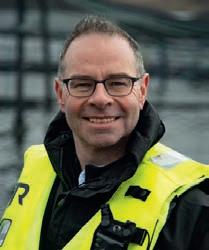
The headline conclusions are clear: about 750 salmon meals were sold over the course of the project and the most popular dishes were salmon with spicy noodles, cold pasta and fried rice.
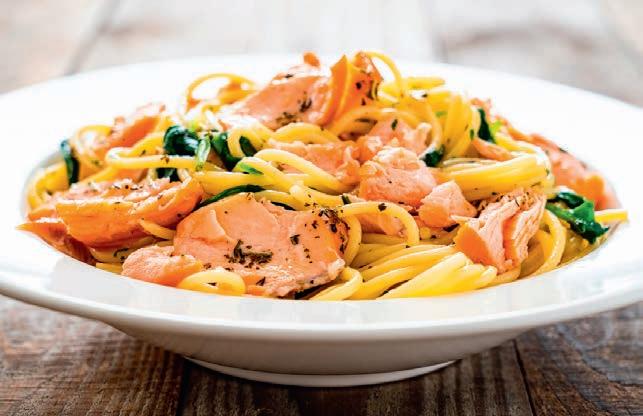
But, crucially, of those who tried the salmon, three quarters (74%) said they would eat salmon more often if these dishes were offered at school more often.
From a broad, strategic view, this suggests the scheme has been a success. The project has introduced students to a locally sourced, healthy food and, if taken further, many more children will get the chance to up their intake of salmon and get a healthier diet.
However, there were some other, really important, lessons that we learned during the project.
There is still a negative view of school meals in general. Many pupils bring packed lunches in with them while many others nip out for fast-food alternatives.
At a stroke, this negative impression of school meals removes a huge number of pupils, all of whom could have had the chance to try the salmon meals had they joined the queue for lunch in the canteen.
If school meals in general could be made more appealing, across the board, then the take-up of salmon could rise significantly.
What seems baffling, particularly to those – like me – of an older generation brought up on some pretty poor school meals years ago, is that this impression persists even when modern school meals are so good.
I can’t understand why anyone would want to go into town for a pie and chips when there is salmon with lime and ginger noodles on the menu or salmon in batter with a sweet and sour sauce; but that, I suppose, is our challenge.
What was also clear was that it really matters what the alternatives are. Putting salmon up against firm favourites like pizza or hotdogs depressed the uptake significantly, even if cost was similar. In fact, the fewer the choices on offer, the more salmon was consumed.
Working with the team from Stirling Council, we did a lot of work to try to inform and educate about salmon, why it is healthy and why it was being offered in this pilot project. We produced a video explaining where the fish come from, why they are good nutritionally and how to prepare them. We also produced an email leaflet and handed out hard copy versions in the schools.
Yet very little of this information managed
The project has introduced students to a locally sourced, healthy food
”The findings from the Salmon in Schools project should help us in the campaign to get young people eating healthy, nutritious food. By Hamish Macdonell
Above: (From left)
Dunblane school students Audrey McQuaid and Warris Ahmed, with Catering Supervisor Maryellen Cullen

Left: Schools need more dishes like this on the menu
to penetrate. Indeed, only 16% of the students surveyed actually registered that the pilot project was taking place. Of these, one in five did talk about the project with their parents at home, but that represented only about 3% of the overall student body.
So the challenge for us, as we go forward, is to make sure we produce material that the students register, absorb and share. It is not an insurmountable problem but one that will definitely have to be addressed as this initiative gets rolled out further.
What the project has done, though, is provide us – and others, in government and elsewhere – with a really good database of seafood-eating habits and trends among the young.
Almost 1,000 young people completed the initial survey linked to the project and a further 500 plus completed the second survey, providing a really strong survey base of information.
One of the least surprising, but most depressing, results from the survey was that it is the children from the most deprived areas – those who have the biggest need for healthy food – who have the worst access to nutritious seafood.
What we found was not only that pupils from the most deprived areas were eating the least fish but fewer believed fish was a healthy choice.
Less than half the school children from deprived areas eat fish, significantly down from the two thirds of those in more well-off areas who eat fish. As one of the key reasons given for eating fish was “my parents make me eat fish”, perhaps this is understandable but it is still something we, and government agencies, are keen to address.
Everyone involved in the sector knows the trend of seafood consumption is going down.
The aim of this project was to introduce a new generation to the benefits and experience of eating fish. If this project worked, then the idea has always been to see if it could be rolled out further.
Even if it turned out to have converted just a small number of children, it would do something – however modest – to arrest that decline.
We found that it did work – but we still have a lot to do if we are to take it further. We need to make the educational material more accessible; somehow, we need to make school meals more attractive to fast-food alternatives and packed lunches, and we need to be aware of what else is on the menu.
But can we deliver good, nutritious, healthy, locally sourced produce to our public sector institutions? Absolutely.
This was a small step, but a very important one, and what all of us in this project want to be able to do, is to look back in a few years’ time, when salmon is on the menu, every week, in every school in Scotland and say – it was worth it.

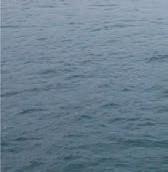





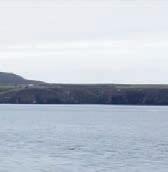
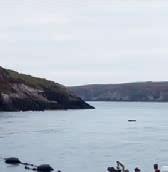
Two pilot farms trialling seaweed and shellfish species have been operating since 2020 in Ramsey Sound, just off the St David’s peninsula. The small-scale project has been invaluable in enabling members to learn how a regenerative ocean farm – also known as integrated multi-trophic aquaculture (IMTA), polyculture or 3D farming – works.
“We recently installed a larger, threehectare farm, which will enable us to operate at a more commercial scale, and a new 10m x 5m work barge is currently being built in St David’s by Robust Boats,” Haines said.
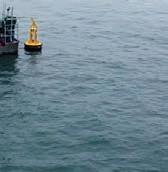


Can a community benefit society succeed in stimulating local jobs and give people a route into the Welsh seafood sector, while improving the coastal environment through regenerative ocean farming?
This is the task that Câr-y-Môr, based in St David’s, Pembrokeshire has set itself, led by a dedicated board of volunteers. The organisation’s name means, appropriately, “for the love of the sea”.

Owen Haines, one of the founder members of Câr-y-Môr, told Fish Farmer that the society has a growing membership of more than 200 people from all walks of life, from fishermen, divers and marine biologists, to accountants and chefs. He believes that the variety and breadth of their talent and experience has been the biggest driver and asset in the project’s success to date.
“Anyone can be a member, as long as they support the aims of the society, and we are keen to encourage wider participation and investment,” Haines said.

“Câr-y-Môr committed to starting the first commercial seaweed and shellfish farm in Wales and aims to motivate and inspire others to duplicate its work. To date we have created 11 jobs, largely through our seafood processing and retail operation, and more people will be needed on the farm and in primary processing as we scale up.”


Volunteers work on a rota basis on the farm, undertaking admin, processing and helping with the weekly market stalls, and can give as much or as little time as they wish. Qualified skippers operate the work barge, and the society is training employees and volunteers in all aspects of the operation.
“Around 600 metres of seaweed lines were trialled this summer, and we plan to seed 1,500 metres in October, which will help us to understand the potential for year-round cultivation. That should return a harvest of 60 tonnes wet weight in 2023. We have collaborated with a seaweed hatchery on Rathlin Island, with PEBL on Anglesey, and Hortimare in the Netherlands, all of whom have helped us to work with seed collected from Ramsey Sound.”
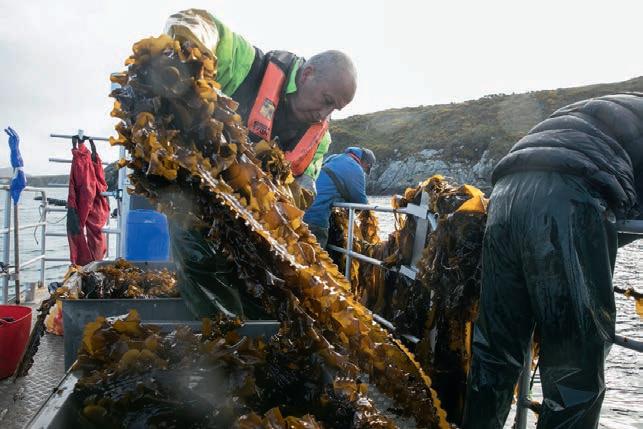
Car-y-Mor is also expecting to harvest approximately 1.5 tonnes of mussels (Mytilus edulis) in January 2023. The organisation is also growing native oysters

This page from top left: Owen Haines harves�ng kelp; Oysters; Trial farms with Ramsey Island in background
Opposite from top left: Owen Haines grading oysters; Rosie Rees with sugar kelp; Na�ve oysters; Oyster farm
(Crassostrea gigas), and trialling scallop (Pecten maximus) cultivation. All sites are classified Grade A.
“We have around 40,000 native oysters left from our trial batch, and took in 90,000 seed oysters in early September, which are currently growing in lantern nets suspended beneath the headlines. We hope to grow Pacific oysters (Magallana gigas) but at present it’s more likely I’ll get picked for Wales than that Natural Resources Wales (NRW) will send us a licence!” Haines said.
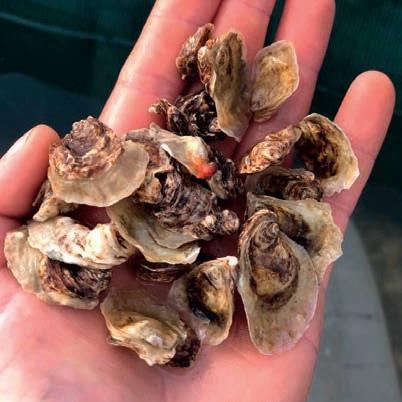
He explained that much of Câr-y-Môr’s precious time is spent liaising with regulatory authorities, and it is currently appealing the fiveyear licence awarded by NRW for the three-hectare farm.
“How can we encourage investment, provide job security and build a business with a five-year licence to operate? We had applied for 25 years and what we have been given just doesn’t make sense,” he said.
WWF is keen to support seaweed farming in the UK and has provided funding to employ a stakeholder engagement officer, along with funds for PEBL to carry out environmental and species monitoring. There is a long list of organisations with which the business interacts, not least local people, who have mostly bought into the project with enthusiasm, and local schoolchildren. Haines is keen to counteract any misplaced opposition to the project, through public education.
Câr-y-Môr is also collaborating with scientists from the universities of Swansea and Aberystwyth and the Shellfish Centre at Bangor University.
Haines explained that around onethird of the running costs are paid for by processing seaweed, lobster and crab which are purchased from a dozen local
fishermen and shellfish gatherers, and from Menai Oysters. Also, a dedicated chef is developing a range of seaweed products that will be offered at Christmas in a Câr-yMôr Welsh Seafood Box.


“Our shellfish processing and retail unit will move to a new multi-functional space named St David’s Seafood house later this year,” Haines said. “It will also serve as a zero input farming educational space and will hopefully incorporate tanks of shellfish and seaweed for the public to view.”




Câr-y-Môr is delighted that interest is growing in seaweed, both as a food and as an additive in many different industries. The society is aware, however, that it needs a market, and to this end, has been investigating fermentation techniques as one method of treating the wet seaweed, which would make it available as a biostimulant and other products.
“We are applying for an infrastructure grant to have the capacity to handle the increase in production and product development” Haines said.
Within five years, Câr-y-Môr aims to have substantially increased annual turnover from the Seafood House, and be producing 200 tonnes of seaweed, 80 tonnes of mussels, 10 tonnes of oysters, and 1 tonne of scallops per year. The plan is also to help 10 new farmers to set up their own 3D ocean farms, thereby providing 20 full time jobs and £2m turnover.
Haines concluded: “Câr-Y-Môr wishes to bring as many benefits as possible to coastal communities and we are off to a good start, but marine licensing remains our biggest challenge. We live in hope that key Welsh Ministers or even UK Ministers will visit our unique farm and see first-hand the compelling logic to developing this sector. They are all welcome any time.”
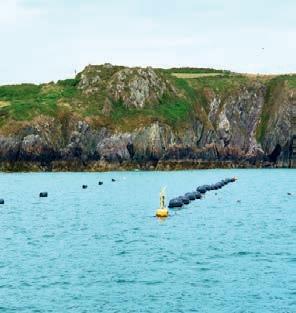
How can we encourage investment, provide job security and build a business with a five-year licence to operate?

Rising energy and commodities costs are a problem for business and governments around the world. By Sandy Neil



what a month it’s been since last we were here. Back then, we looked at the RussoUkrainian War in Europe raging on, and food and fuel costs rocketing up. Within a fortnight, Britain got a new Prime Minister and Cabinet, lost one monarch and gained another, and the UK government promised billions for households and businesses struggling with spiralling energy prices.
How are rising energy costs playing out for fish farming, and will the government support help the industry to weather this storm? Are farmers able to take practical steps to reduce their energy consumption? We also look at how energy costs are impacting aquaculture elsewhere in Europe and further afield.
It was looking a little bleak this winter. Rabobank’s Global Aquaculture update in July, ominously titled On the brink of recession, stated: “Weaker seafood demand is expected in the second half of 2022 compared to both the second half of 2021 and first half of 2022.”


“With softening demand, price corrections, and persistently high production costs, salmon and shrimp farmer profits are likely to decline from recent highs,” reported Gorjan Nikolik, senior analyst in Rabobank’s seafood division.

Norwegian equipment and technology group Akva announced decreased earnings in the second quarter, as a perfect storm of increased freight rates, high energy prices and increased price levels struck the company’s operations.

At the beginning of August, aquaculture technology business Akva







Group issued a statement warning shareholders that it was about to sink into the red. Earnings for the quarter fell from NOK 16m (£1.3m) last year to negative NOK 41m (-£3.4m).

The group said the significant shortfall in EBIT was caused by high inflation rates and supply chain restrictions driven by the Russia-Ukraine conflict, which added an estimated NOK 37m (£3.1m) in additional costs.

Dire warnings, and desperate pleas for help, followed from the Scottish seafood industry. “As with other sectors, week after week energy costs, particularly for gas, in the Scottish seafood processing sector are escalating,” said the CEO of the Scottish Seafood Association, Jimmy Buchan.
He continued: “As businesses try to cope with ever-changing prices, it is of great concern that some energy suppliers are unable to give quotes on tariffs for next year.






 Top: Electricity pylons
Above: Electric meter Opposite: Salmon fish farm, Norway
Top: Electricity pylons
Above: Electric meter Opposite: Salmon fish farm, Norway
This cannot continue or jobs will be lost, and food affordability and our country’s food security will be severely impacted, leading to us becoming increasingly reliant on foreign countries for our food.
“The cost of energy needs to be capped at the current level to give business some clarity and certainty over pricing in the medium term.”
For some fish farmers in Scotland, planning ahead has helped to mitigate the risks. A Scottish Sea Farms spokesperson explained: “We (very fortunately) signed a three-year contract last October (2021) capping our exposure to any price increases at 5%.”
What parts of the salmon farming process use the most energy? The Scottish Sea Farms spokesperson said: “At first glance, our new RAS [recirculating aquaculture system] hatchery at Barcaldine would appear to consume the most electricity.
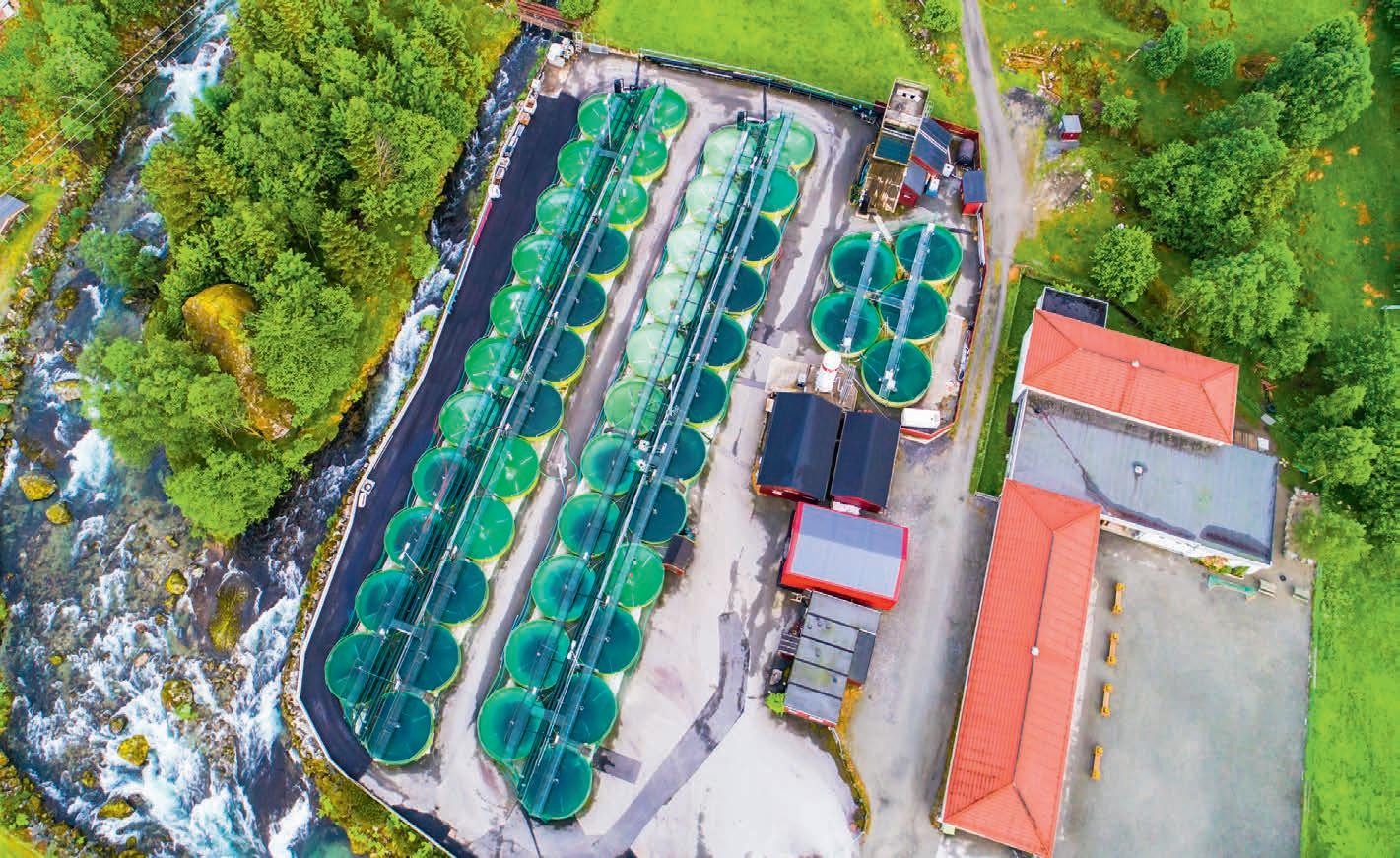
“However, when you consider that it produces the equivalent number of smolts as multiple traditional hatcheries, it equates to a substantial saving in power consumption overall. Similarly, when you add up the combined generation of electricity from diesel generators out on farms, it equates to a consumption greater than Barcaldine. Thereafter, our processing facilities would have the next highest consumption.”
What practical steps can they take to reduce energy consumption? The fish farmer listed several options: “Efficient use of diesel generators to minimise running time. Further reducing the running time of diesel generators
via hybrid systems/battery technology. Connecting farms wherever possible to mains supply. Trialling renewable energies – wave, wind, solar, tidal and hydro – with the longer-term goal of transitioning away from diesel generators wherever possible.”
Last month the UK Government, led by the new Prime Minister Liz Truss, answered the growing calls for support. On 8 September, just hours before the Queen’s death was announced, ministers introduced a £150bn plan to help households in Great Britain with their soaring bills for two years.
Under the Energy Price Guarantee, a typical household will pay on average £2,500 a year on their energy bill for the next two years from 1 October. The scheme limits the price suppliers can charge customers for units of gas and electricity. It is expected to save the average household £1,000 a year based on current energy prices from October. It also comes on top of a £400 energy bill discount for all households. Together, these measures will bring costs close to where the energy price cap currently stands, the government said.

Two weeks later on 21 September, two days after the Queen’s funeral and the end of a national period of mourning, the government announced another huge support package, where energy bills for UK businesses, charities and public sector organisations will be cut by around half their predicted level this winter.
The Energy Bill Relief Scheme will fix wholesale gas and electricity prices for firms for six months from 1 October. Industry groups have welcomed the package, but warned further support may be needed after the winter.
“As with the Energy Price Guarantee for households,” ministers declared in a joint statement, “customers do not need to take action or apply to the Energy Bill Relief Scheme to access the support. Support (in the form of a p/kWh discount) will automatically be applied to bills.
“To administer support, the government has set a Supported






This intervention is unprecedented and it is extremely welcome that government has listened
Wholesale Price – expected to be £211 per MWh for electricity and £75 per MWh for gas, less than half the wholesale prices anticipated this winter – which is a discounted price per unit of gas and electricity. This is equivalent to the wholesale element of the Energy Price Guarantee for households. The level of price reduction for each business will vary depending on their contract type and circumstances.
“We will publish a review into the operation of the scheme in three months to inform decisions on future support after March 2023.”
Welcoming the scheme, the CEO of the trade body UKHospitality, Kate Nicholls, said: “This intervention is unprecedented and it is extremely welcome that government has listened to hospitality businesses facing an uncertain winter. We particularly welcome its inclusiveness –from the smallest companies to the largest – all of which combine to provide a huge number of jobs, which are now much more secure. The government has recognised the vulnerability of hospitality as a sector, and we will continue to work with the government, to ensure that there is no cliff edge when these measures fall away.”
The Food and Drink Federation CEO, Karen Betts, added: “We welcome the scope of the government’s Energy Bill Relief Scheme and the speed with which it’s being rolled out. It addresses the largest and most volatile cost pressure facing our industry right now. Although some aspects of the scheme are still to be clarified, it offers relief to food and drink manufacturers across the UK.”
Seafood Scotland also welcomed the intervention. Its Head of Trade Marketing for the UK, Americas and New Markets, Adam Wing, said: “The Government’s announcement on capping business energy bills, while expected, is welcome and will provide temporary relief to seafood processors.
“The Scottish Seafood Association has shared its concerns on behalf of many Scottish processors and we will continue to speak to others to ingather as much insight as possible. Energy for processing is a key concern, as is the considerable energy required for freezing, and ensuring that a consistent cold chain is maintained during transportation and distribution.

“We are aware of discussions around attempting to claim relief under UK government schemes for energy-intensive industries. Seafood processing would, in our view, fall into this category, but whether this idea will gain traction in light of the above announcement is not yet clear.”
How are rising energy prices impacting the aquaculture industry
elsewhere in the world?
Reports say the land-based fish farm boom is grinding to a halt, as soaring energy costs and financing challenges inhibit growth ambitions.
While recirculating aquaculture systems (RAS) are often highlighted as environmentally friendly, they are very energy-intensive: water must be pumped, tempered and cleaned on a large scale, to simulate what happens at sea. A rule of thumb is that between six and eight kWh are used per kilogram of fish produced in a RAS plant, according to Bjørn Inge Staalesen, managing director of Ecofisk.
large eight
Sky-high electricity prices in southern Norway, Great Britain and the EU place clear limits on the eagerness to finance more land-based facilities. iLaks/ SalmonBusiness said it identified 117 different market players working to realise land-based food fish farms. In total, these have a theoretical production capacity of just under 2.7m tonnes.
“According to Rabobank, financing is the major bottleneck for these,” it reported. “Not everyone will be able to get access to capital. And it has not become easier to get money in the last year and a half. An example is Kvidul, which cancelled an issue of NOK 700m (£58.4m) through Folkeinvest, after barely reaching the minimum requirement of NOK 17m (£1.4m).
“Another example is Columbi Salmon, which has postponed its planned IPO several times. A third is Smart Salmon, which is still on the hunt for money. There is also Baring, which is in no rush to build its facility at Farsund.”

Electricity prices in the EU have increased tenfold in one year, presenting challenges for Columbi Salmon, which wants to become Europe’s leading “sustainable land-based salmon farmer”. Columbi Salmon has long planned to start construction of its landbased facility in Oostende, Belgium, where in 2020 the company purchased the plot of land on which the facility will be located. The company confirmed to SalmonBusiness that they have contracts on power delivery,
Top: Much of Norway’s energy comes from hydro-electric power

Left: Adam Wing


Opposite the top: Electric bill; Sco�sh Sea Farms Incuba�on unit, Barcaldine Hatchery
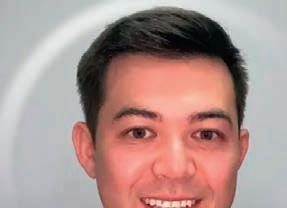
We cannot completely rule out a period of electricity rationing in the spring
”
but that the size of the contracts has not yet been decided. The company told Finansavisen at the end of 2020 that they were preparing to go public at the beginning of 2021.
In response, the founder of Denmarkbased RAS Logic, Ivar Warrer-Hansen, said: “Until recently we had a salmon ‘gold rush’. These gold diggers are now leaving the wild West and heading back East. Many landbased salmon projects are on hold.
“One reason of course is that there still is not one project that has been able to produce more than around 50-60% of all the projected production plans and investors are getting a little weary. In most cases it is due to poor RAS concept. But the next hurdle is the escalating energy costs, not least in the EU.”
“Is land-based production in RAS as green as we proclaim?” asked Warrer-Hansen. “Well, both yes and no. It is a lot of energy to treat the water in a RAS all right, but then we have to treat all waste types, be it industrial or our own human waste. There are other food productions that have a higher environmental footprint. So RAS shouldn’t be singled out as it is more and more these days. It must still be emphasised that we have after all little or zero effect on the aquatic environment. Summa summarum, this means that RAS will bounce back.”
Meanwhile rising costs mean that Brazil’s tilapia industry is unlikely to see growth this year, contrary to earlier expectations. At the start of this year, investments were expected to fuel another year of double-digit growth in Brazil’s massive tilapia sector. But battered by soaring feed, fuel, energy and other input prices, allied to a reduction in consumer spending on animal proteins since the closing months of 2021, tilapia producers are now looking to end the year where they began.
“Everybody has put the brakes on expansion projects,” Francisco Medeiros, president of Brazilian aquaculture producers trade body Peixe BR, told IntraFish.







In Norway, a country used to cheap electricity, prices are also skyrocketing. Until recently, Norway has had comparatively low
electricity prices. Historically, electricity in the country has been plentiful, and almost entirely coming from hydropower.
Because electricity was so cheap, saving energy has not always been a top priority.
Visitors may have noted a Norwegian propensity to leave the lights on even when no one is in the room. Even more wasteful are the stories of mountain cabin hot water tubs left on permanently “just in case” their owner would fancy an unplanned dip.
High electricity consumption in Norway is not just down to low prices, but also to the fact that the country has a cold climate and that most houses are heated with electricity. Electric heating means that cold weather will cause peaks in demand, which in turn will send the prices soaring.
While one kilowatt-hour of electricity cost on average NOK 0.61 (£0.05) in February of 2021, it had jumped to NOK 5.43 (£0.45) in August of 2022 – almost a tenfold increase. Factories have been forced to stop production since their costs are just too high.
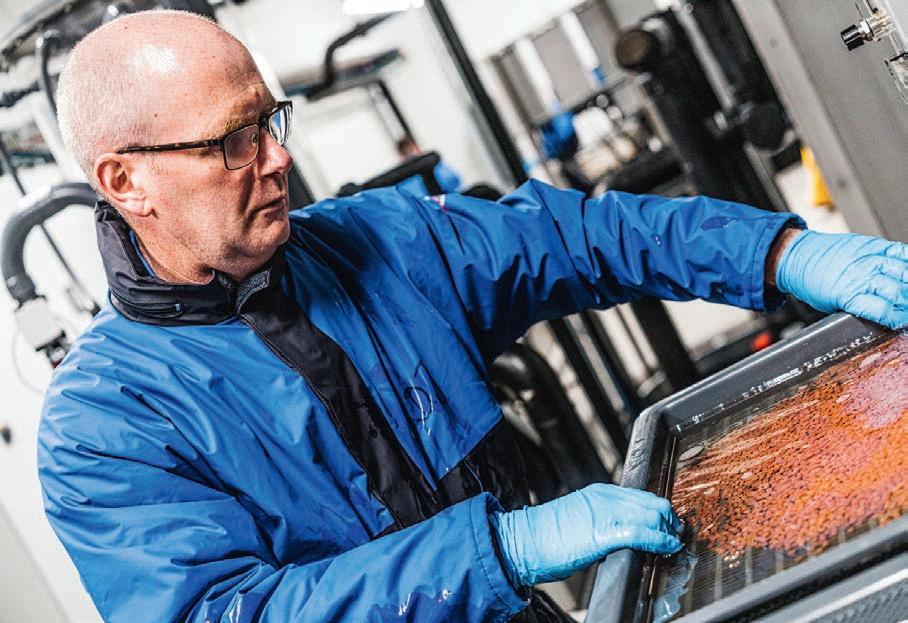
Why are the prices reaching record levels? 2022 was characterised by less rain than usual in the south of Norway, and much more in the north. Residents of the country’s capital, Oslo, have been asked to take shorter showers and turn off the tap when brushing their teeth. Less rain means that the hydropower reservoirs are not as full, which puts upward pressure on electricity prices.
Many are also blaming two new subsea cables connecting Norway to the UK and Germany, which came into operation in 2021. Just a few months afterwards, in December, prices started soaring. For many people, the conclusion was clear: the new cables were to blame for the price hike. The link between higher prices and electricity export has made “cut the cables” a sort of slogan for people fed up with soaring bills.
British consumers could face even higher bills and potential energy shortages this

winter, after Norway threatened to ration electricity exports. Norway’s oil and energy minister, Terje Aasland, told the Norwegian parliament on 8 August that refilling dams will be prioritised over power production when levels fall below the seasonal average.
The move was a blow to the UK, as well as countries such as Germany and the Netherlands, which rely on cheap Norwegian hydropower. A 450-mile interconnector joins Blyth, Northumberland, to Kvilldal power station. The €1.6bn (£1.35bn) North Sea Link cable, which was switched on last October, is able to channel up to 1.4 gigawatts of electricity between the two countries when demand is high in the UK and there is low domestic wind generation. This is enough to power about 5% of British homes.
Aasland said that electricity production in southern Norway was down 18% on last year and production in south-west Norway last week was the lowest seen this year so far. He said: “This results in historically high electricity prices and a situation where, for the first time in many years, we cannot completely rule out a period of electricity rationing in the spring. The probability of this is low.”
But as a whole, Norway is in a good position. Russia was the EU’s largest provider of natural gas in 2021. The second largest is Norway. Natural gas exports are generating enormous revenues for the Norwegian government, and power companies are raking in record sums.
Since oil and gas revenues are up, though, Norway can afford to support families. The government launched a power bill support scheme which covers 80% of the portion of the electricity price that exceeds NOK 0.70 (£0.06) per kWh. From October to December of this year, that percentage will jump to 90%.
How much will the UK government’s schemes help? What else is going to happen? Time will tell.
Cod farming struggled with low market prices and technical challenges, but all that is changing.
By Vince McDonaghNotso many years ago, cod farming was generally considered to be both unprofitable and technically challenging.
But rising whitefish prices and significant advances in production methods have changed all that, particularly in Norway where a number of companies are now engaged or planning to go into cod aquaculture.



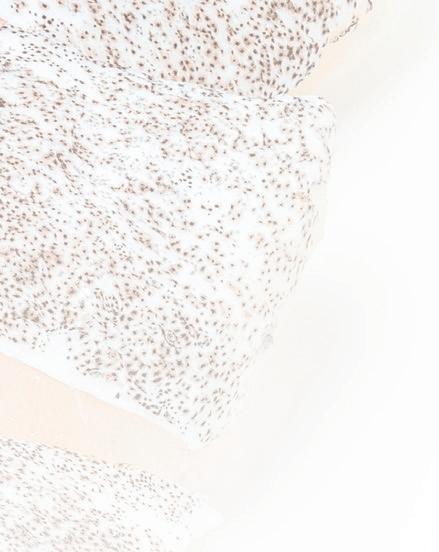

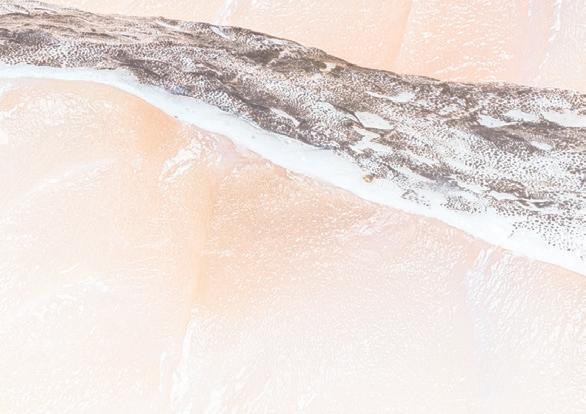
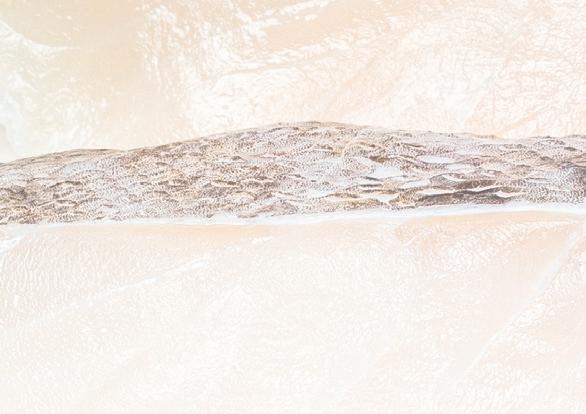


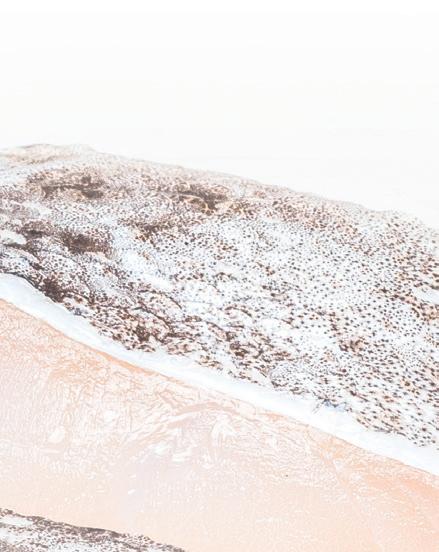


The wholesale price of cod (and its close relative, haddock) has shot up over the past year, so much so that fish and chip shops and seafood companies in the UK are turning to cheaper whitefish species such as pollock.
Once seen as the cheaper end of the seafood price spectrum, cod has almost become the whitefish equivalent of salmon.
With most of the technical challenges solved, cod farming is taking off in Norway in a way not thought possible a few years ago. Even so, it remains an expensive business. It can cost up to NOK 43 (£3.58) to produce one kilo of farmed cod.

Russia, one of the world’s largest suppliers of wild cod, has been frozen out of world markets following its invasion of Ukraine. If and when that war ends and Russia is brought back into the international seafood fold, prices
are likely to come down; production costs, however, may not.



Nofima, the Norwegian research institute, has recently published a paper on how cod farming can remain profitable.



















Morten Heide, market researcher at Nofima, says; “A profitable industry requires either high prices for wild cod, or that cod farming actors are able to differentiate farmed cod from wild cod, so that one can justify production costs in terms of market price.”
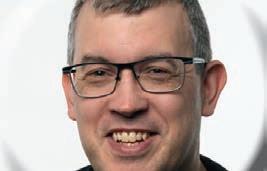
With the assistance of 11 Nofima scientists from different professional backgrounds Heide has led the work on the report, which highlights the potential of farmed cod in terms of quality, market perception, and economy. He says: “There are no major issues in terms of quality, and the
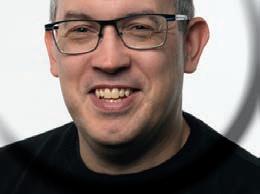




This page from top: Norcod farm; Morten Heide Opposite from top: Cod on ice; Cod farm in Norway; Ekaterina Niki�na; Atlan�c cod



Biologically speaking, farmed cod are… ready for commercial operations
”
market seems to welcome farmed cod.
“Economically important parameters such as slaughter weight, mortality rates and sexual maturation have been significantly improved through initiatives such as the breeding programme, and better knowledge among the fish farmers about raising the fish.
“Profitable production requires that one achieves sales prices that outweigh the costs.”

The report says five generations of farmed cod have been produced at the Norwegian Aquaculture Research Station in Tromsø with the sixth-generation being raised at the Centre for Marine Aquaculture, which Nofima runs on behalf of Norway’s Ministry of Trade and Industry.
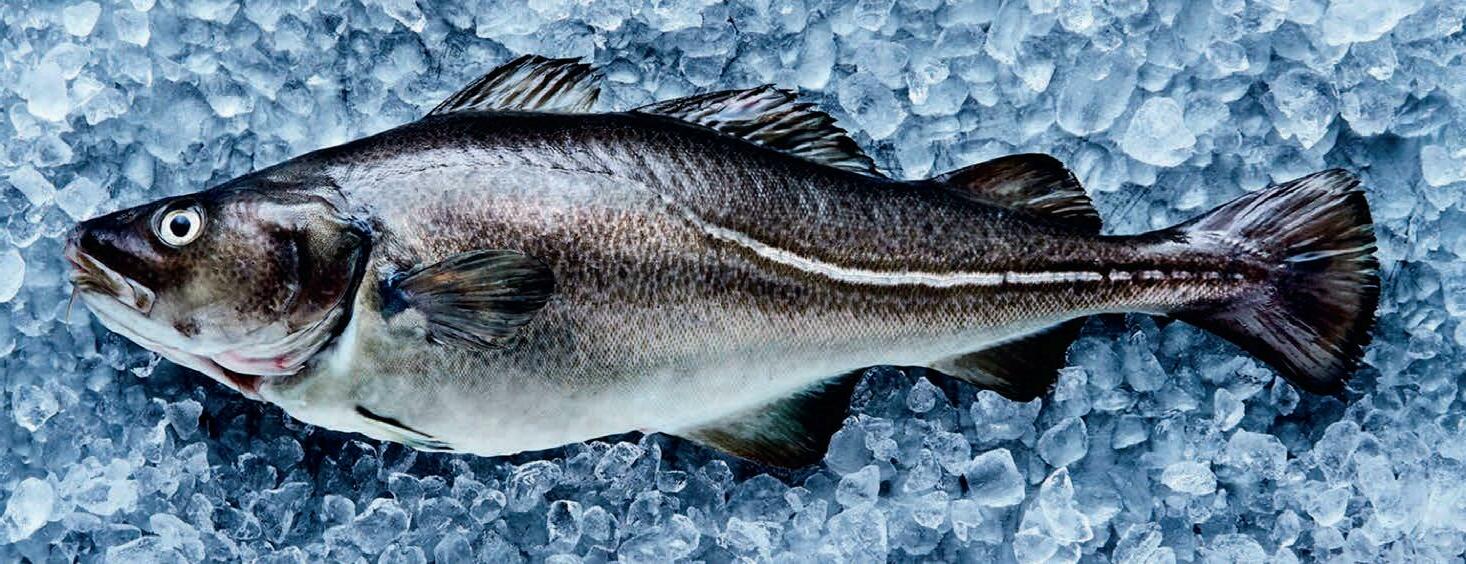
It adds that, over the course of five or six generations, cod breeding has become a type of tame “livestock”, which thrive, grow well, and no longer escape.
Øyvind Hansen, who is head of the cod breeding programme at Nofima, said: “Fifthgeneration cod have better characteristics in terms of survival, growth and behaviour than has been the case for previous generations of farmed cod.”
He adds: “Biologically speaking, farmed cod are therefore ready for commercial operations.”
Nofima says economic data around cod farming is limited, partly because, unlike salmon farming, the number of companies engaged in the business is still relatively small.
Because of this, the Nofima scientists had to resort to a bio-economic model of a production cycle to calculate these costs – a model which has varying degrees of uncertainty.
One of those scientists, Ekaterina Nikitina said: “We calculated the sum of fixed and variable costs during the production period in order to estimate the average costs per kilogram of cod produced.


“The largest variable costs are associated with feed, slaughter and packing costs. We have estimated average production costs to be NOK 40-43 (£3.33-£3.58) per kilogram of round weight, and this includes slaughter, packing and capital commitment costs.”
She pointed out that profitable production obviously requires a sales price for the fish and its by-products that exceeds production costs.
Although the scientists are currently uncertain about the profitability of cod farming, they see significantly better conditions now than when cod farming in Norway came to a complete standstill a decade ago.
The most recent generation of farmed cod to be harvested achieved an average weight of 3.85 kilograms in 22-23 months. Ten years ago, only a very small percentage of the farmed cod achieved this weight.
“Less feed is required than before, which reduces the largest cost item in cod farming, and there is better knowledge about light regimes which means that one avoids the negative effect of sexual maturation. This reduces the costs for the cod farmers”, says Ekaterina Nikitina.

These developments have also given cod farmers better conditions for the stable production of fish over two kilograms. This weight class achieves the best market prices.
The mortality rate of farmed cod also appears to have come down, which has improved the economic side of things.
Nofima’s most recent production had a mortality rate of approximately 14%, considerably lower than a decade ago.
In general, knowledge about all aspects of production has improved. This positive development contributes to a decline in all unit costs for the farmers.
“It improves the basis for efficient and






profitable commercial cod farming”, Nikitina concludes.
Technically, cod farming has come a long way. The question now is whether the market price will continue to support it.
Norwegian cod farming endured a difficult period in the early 1990s but is now in a period of fast growth, with a production increase of around 8% a year.
The interest in joining with the long-established salmon farming sector was therefore high, but a restrictive concession policy in Norway has, up until recently, prevented greater access.

At the last count, Norway had 16 hatcheries capable of producing more than four million juveniles and a harvest volume of 1,500 tonnes. There has also been great interest in cod farming in several other countries in the North Atlantic region, notably in Canada, Scotland and Iceland.

Itwas Napoleon who famously warned that when China wakes up, the rest of the world will know about it.
China has in fact been in a form of slumber these past two years, brought about by various coronavirus lockdowns.
But in seafood terms it will come alive again in November when the country stages the 26th annual China and Fisheries Seafood Expo in the north east city of Qingdao.
This dynamic event, also known as CFSE 2022 was originally scheduled for late October but because of new Covid restrictions has now been postponed until November 9-11.
The organisers said: “Due to the Covid-19 situation in China, Qingdao City officials recently announced a prohibition on mass gatherings such as trade shows until 31 October.”
“It was a hard decision to make, but at the end of the day we feel it was the right one,” said Peter Redmayne, President of Sea Fare Expositions, Inc, the overseas co-organiser of CFSE.
The good news is that China’s demand for imported seafood continues to grow in spite of the challenges associated with Covid.
Last year, for example, its officially reported seafood imports rose 15% to almost US $18bn (£15.7bn).
Despite the two-week postponement, the exhibition is expected to attract more than 30,000 industry specialists from across the world, fully opening up what is still the world’s largest seafood market.

The Norwegian Seafood Council has been keeping a close eye on the situation and has found that important changes are taking
place since the disruptions caused by the pandemic.
While the Covid measures certainly had consequences, seafood exports showed a record breaking increase between January and August this year.
They rose by 45% to around NOK 4.5bn (£420m) over the same period last year with fresh whole salmon the most important value driver and accounting for 39% of that value.
Salmon is followed by frozen whole cod (up 18%) haddock (up 10%) and mackerel (up 9%).
Above: Seafood and sushi
Below: Andreas Thorud with colleagues at a Chinese market Opposite from top: Cooking a seafood meal at home; Seafood counter, Shenzhen Bay shopping mall; Andreas Thorud; The Hongdao International Convention Center
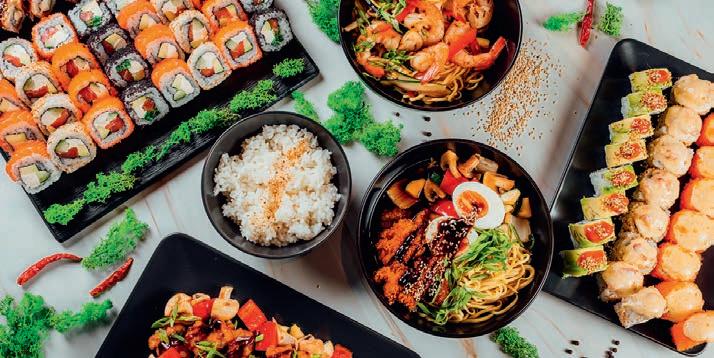
The Seafood Council has found that, overall, the Chinese economy is experiencing “macroeconomic headwinds”, as result of a decline in the country’s real estate sector and tough “zero Covid” policies, which are dampening demand and the desire to invest.
Consumer habits are also changing with fewer people eating out and more cooking at home and shopping online (which is a developing trend in some European countries too).
The Chinese are the world’s most prolific Internet shoppers and online accounts for 29% of the national consumer market.
The Seafood Council says: “Despite the fact that sales in physical stores have picked up after a difficult spring, growth is 2.7% in July compared to July last year which is modest, given that this growth in recent years has been around 12% on average.
“Online shopping, on the other hand, is up 11% in the second quarter, and we see that consumption of food and household goods has been strong.”
Andreas Thorud, the Seafood Council’s China envoy, believes: “The pandemic’s closed restaurants have contributed to more Chinese being inspired to cook salmon at home. You can also see that salmon is becoming more prominent in grocery and online stores.

“From being a country where fresh salmon has mostly been consumed in restaurants, we see that the pandemic has made more Chinese in the big cities open their eyes to enjoying salmon at home. This is an exciting development that can increase the total market, and [shows] where Norwegian salmon must position itself.”
He says that in China the pandemic restrictions have been particularly strict, which has led to the restaurants being closed for long periods.

“This has led to people increasing their home consumption of seafood. While e-commerce is an important channel, the logistics must also work here. At the same time, our surveys show that trust in the outlet is crucial for customers”, he adds.
Thorud also thinks China’s increasing health awareness is one of the reasons why Norwegian salmon hits well with the consumer trends that are important in the country.


The Seafood Council’s report on the Chinese consumer shows that Norway is seen as a reliable and favoured export country.
“The good quality of our products is highly appreciated. Aspects such as a cold climate, clean water and a good environment are highlighted by consumers,” Thorud argues.
He continues: “We work strategically in



this market, where there is unrealised potential. I think the decade we are in now is very defining for Chinese consumption habits for imported seafood. We meet a curious but also quality-conscious Chinese consumer. Then we have to meet his or her needs.”
He says that due to consumers’ awareness of seafood origins, an increasing number of retailers have strengthened consumer communication. For example, they mark the seafood origin on their products and marketing materials.
“We at the Seafood Council hope that strategic ties can be forged, and that partners and retailers will jointly maintain this work to build trust among consumers. That will increase the preference for Norway,” Thorud concludes.


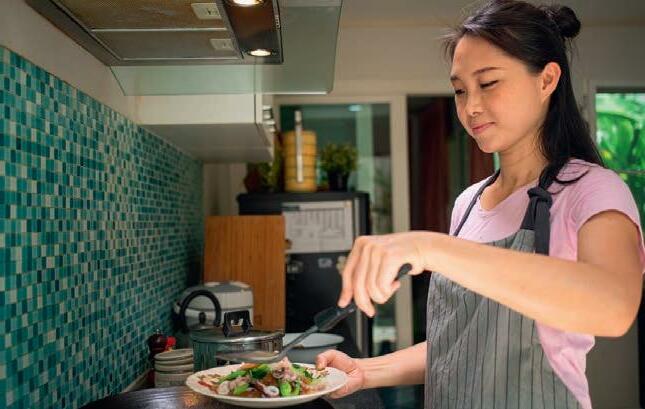
THE 2022 China Fisheries and Seafood Expo (CFSE), postponed for two weeks to a new date of 9-11 November, will feature more than 1,000 exhibiting companies and looks set to attract visitors numbering in the tens of thousands. The show began in 1996, with Qingdao chosen as the first location due to its large base as a primary and secondary processing base. It has moved around various cities since then, but returns to its original
location this year, but in a new convention centre.

The Norwegian Seafood Council says it will participate at the CFSE 2022 in Qingdao with a joint stand at the Norwegian Pavilion, hosted by Innovation Norway.



The Council will join various Norwegian seafood exporters showcasing high-quality seafood and says it looks forward to exchanging new insights and forging new approaches to co-operation.

The pandemic has made more Chinese in the big cities open their eyes to enjoying salmon at home
Sea cucumbers have the potential to clean up organic waste from fish farms, research off the coast of Malta has found

Seacucumbers have long been a delicacy in Asia. While European consumers are not so keen on eating them, it turns out they may be valuable in another way – as a means to help clean up organic waste from fish farms.
Waste, in the form of fish faeces and uneaten feed, is one of the biggest environmental impacts of marine finfish farming. Now, research led by the University of Stirling’s Institute of Aquaculture suggests that sea cucumbers can flourish by feeding and growing on organic waste released from commercial fish farms in the Mediterranean.
Despite their name, “sea cucumbers” are animals. They are echinoderms, invertebrates in the same group as starfish and sea urchins, and they live on the sea floor on marine environments around the world.
The Institute of Aquaculture studied sea cucumbers which had been cultured at a fish farm off the coast of Malta. The researchers found they thrived on the organic waste under the cages – although initially some were smothered as the waste fell to the sea floor, indicating the positioning and stocking need to be approached carefully.
PhD researcher at the Institute of Aquaculture, Karl Cutajar, said: “This research shows the feeding connectivity between fish and sea cucumbers under marine commercial fish cages, which means that farming them together in an integrated multi-trophic aquaculture (IMTA) system is viable.
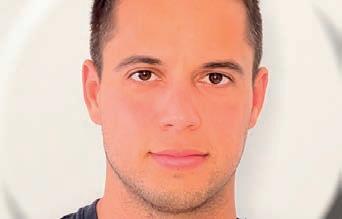

“Our results show that sea cucumbers take up fish farm waste and how this helps the sea cucumber to grow.
“Something that removes organic waste, which can have a negative impact on the seafloor, whilst being a valuable commercial product, without the need for feed input, is an exciting discovery that presents environmental and economic opportunities.”
The discovery means adding sea cucumbers can reduce the environmental impacts of marine fish farming whilst providing a high value extra product. Mediterranean sea cucumbers can fetch between €30/kg dried and €120/kg as processed product, while farmed sea bream are currently worth just six euros per kilo.
In Asia sea cucumbers are in high demand, but supply is short, even causing overfishing in some areas. Sea cucumbers also have antibacterial and anticancer properties, and are increasingly
Top: Sea cucumber
Holothuria poli
Above: Karl Cutajar

Opposite from top: Live black sea cucumber; Sea cucumber, Mediterranean; Sea cucumber is a delicacy in parts of Asia
being investigated for medicinal and pharmaceutical uses worldwide.

Different varieties of sea cucumber also grow in colder waters such as those around the UK, and research is beginning to explore their value and impact.
The research was part of the European Union’s Horizon 2020-funded project Tools for Assessment and Planning of Aquaculture Sustainability (TAPAS), carried out with AquaBiotech Group and the University of Palermo.
It combined two analytical techniques to determine whether the cucumbers were successfully processing fish waste. First, stable isotopes, used to assess diet, showed that the sea cucumbers were using fish waste as their dominant food source.
Fatty acid analysis of the sea cucumbers also showed the presence of terrestrial, plant-based ingredients that could only have come from fish feed, showing that these sea cucumbers were using this source of organic waste to grow.
Angus Sharman, of fish farm MFF Ltd in Malta, where the research took place, said: “As the demand for seafood grows, MFF Ltd strongly believes in the need for the development of sustainable aquaculture, possibly through IMTA systems such as this. The application of this technology
across Mediterranean aquaculture now seems very possible.”
Karl Cutajar added: “Our research showed that the nutritional benefits of sea cucumbers produced near fish cages may have the potential to create economic value for producers to invest in sustainably farmed products and, as preference for eco-labelled products increases, these findings could encourage product diversification through IMTA.”
Professor Trevor Telfer of the Institute of Aquaculture, who oversaw the research, said: “There is increasing interest in IMTA systems in aquaculture, as there
is in circular economy systems in other industries, as a way to find sustainable solutions to future challenges in seafood production. We are very excited by these findings.”
Culturing the sea cucumber Holothuria poli in open-water integrated multi-trophic aquaculture at a coastal Mediterranean fish farm (in Aquaculture) bit.ly/holothuria
Stable isotope and fatty acid analysis reveal the ability of sea cucumbers to use fish farm waste in integrated multi-trophic aquaculture (in Journal of Environmental Management) bit.ly/cucumbers-env-mgt
IN April 2021, Fish Farmer reported on a feasibility study which was also looking at sea cucumbers and their potential for dealing with organic waste.


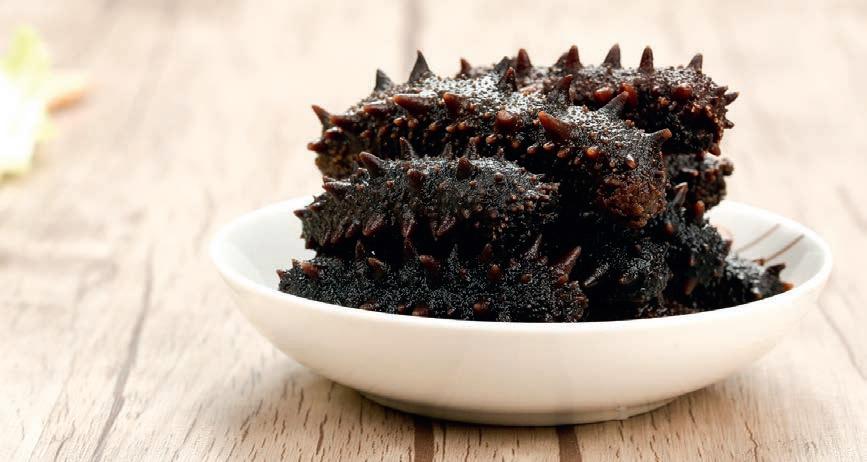

Blue Remediation, a company set up by four PhD students from the University of Strathclyde and Heriot-Watt University, won funding from the UK Seafood Innovation Fund (SIF) and the Sustainable Aquaculture Innovation Centre (SAIC) to assess the potential for a full-scale study.
Findings from the feasibility study were positive and Blue Remediation began an 18-month project in Scotland, which is due to complete in February 2023. There are three components to the research: a lab element in October and November 2021; deployment in cages – which the researchers had to design and build – below a fish farm for one year, starting in March 2022; and a modelling exercise based on the data gathered.
The study is still ongoing, but so far Blue Remediation’s Scottish sea cucumbers appear to be thriving just as well as the Mediterranean Holothuria.





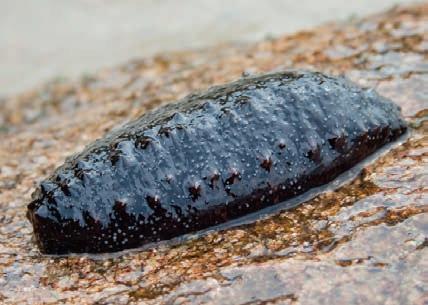
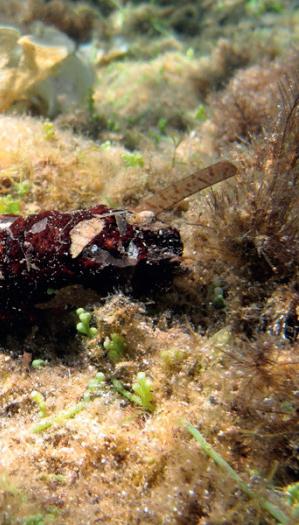
Marta Ponti, one of the co-founders of Blue Remediation, says: “Our biggest challenge was predators – we weren’t expecting so many!” Crabs and starfish apparently found the caged sea cucumbers too good to pass up. The sea cucumbers themselves also turned out to be skilled escape artists, although even those that did break free from their enclosures mostly did not stray far from the salmon pens.
Ponti’s colleague Melinda Choua says: “We still have to collect and model the data, but we found that while the fish were there in the salmon pens, the sea cucumbers were gaining weight. Then the fish were harvested and when there were no fish, the cucumbers lost some weight. Now there are fish in the salmon pens again and we can compare results.” The team expects to be able to publish results once the modelling is complete.
These findings could encourage product diversification
”





the industry was the theme of the Livestock & Aquaculture Innovation Summit, held in London on 6, 7 and 8 September.
It was clear that two aspects were closely linked: the need for high standards and greater transparency in animal welfare and sustainability, and the increasingly important role of data in achieving those goals.
Day one was devoted to the aquaculture forum and, appropriately, it began with a panel discussion on the challenge involved in tackling sea lice. The panellists were Bryton Shang, Founder and CEO of Aquabyte, a software company which facilitates automatic lice counting, welfare scoring, and biomass control; Matilda Lomas, Biology and Cleanerfish Co-ordinator, Bakkafrost Scotland; and Alex MacInnes, Director and co-founder, Organic Sea Harvest (OSH).
The moderator was your correspondent, and the panel brought valuable perspectives to the issue of tackling sea lice and protecting the welfare of the salmon – and of the cleaner fish brought in to help keep down the numbers of lice in the pens (a key element in Matilda Lomas’ remit).
UK have accepted that fish are sentient creatures, capable of feeling pain and distress. Other panel discussions included a debate on raising capital for aquaculture, with Matthieu Vermersch, Managing Partner, Vis Vires New Protein, Howard Tang, CEO Peritus Capital and Jamie Stein, Co-founder, Devonian Capital.



The panel agreed that it appears to be easier to raise funds for aquaculture technology providers than for producers. Areas that offered particular opportunities included technologies to help digitise farming, and to help reduce the sector’s carbon footprint.
This page from top: Howard Tang; Alex MacInnes; Jade Spence; Atlan�c salmon
Opposite from top: The beef industry aims to cut its carbon emissions; Dafydd Morris; Sue Lockhart; Ryan Mowat; Stephanie Armstrong; Charlie Sheppy
Alex MacInnes made the point that OSH’s sites are in high-energy locations which are less likely to see large numbers of lice. It was clear from the discussion that the solution lies with a range of treatments rather than one “silver bullet”. Technology is moving forward, however, and as Bryton Shang explained, the Norwegian authorities have now accepted automatic lice counting in the sea lice returns from fish farmers, rather than insisting on manual counting in parallel.

The Summit also heard from Jade Spence, Technical Officer with the Humane Slaughter Association (HSA), who explained the implications now that legislators in the European Union and
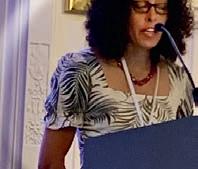
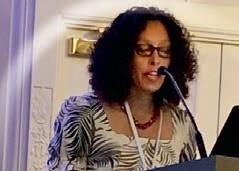
Despite the challenges in land-based aquaculture, Howard Tang said, there are some winners in the sector. His advice was: “Learn to walk before you can run, and start at a small scale, close to population centres.”
The Aquaculture day also saw contributions from Dafydd Morris of MSD, who explained MSD’s mission to help farmers on land and sea manage their livestock profitably and take care of the animals’ welfare.
He gave as an example the Vaki Smartflow system, which integrates pumps,

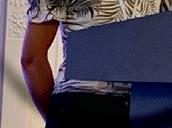


graders and counters for a better way to count, measure and move fish.
Sue Lockhart, Supply Chain Standards Director, Marine Stewardship Council (MSC), talked about measures to stamp out seafood fraud.
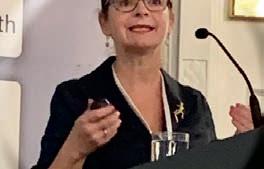
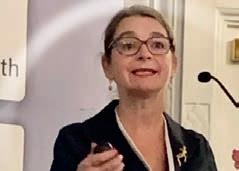
She said: “Seafood is especially vulnerable to fraud, with long supply chains, disruption to markets and lack of traceability. The effect is to undermine conservation, mislead consumers and create a market for IUU (illegal, unregulated, unmonitored) fishing.”
MSC sets out standards for traceability and can investigate potential fraud, with measures including DNA testing. Its efforts have reduced MSC mislabelling to 0%-3% of total sales. The MSC is also researching trace element “fingerprinting” for farmed fish and shellfish, DNA identification for specific populations within a fish species and tracing with isotopes as markers.
Ryan Mowat of ocean technology group RS Aqua described how a new marine communications system is being developed to help give early warning of harmful algal blooms (HABs).
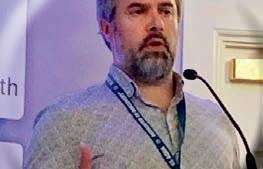


The innovation was based on acoustic transmitters which had been designed to allow salmon smolts to be tracked out at sea.
Technology business Vemco used the idea to develop a wireless subsea sensor. Vemco was acquired by Innovasea, an RS Aqua partner based in Nova Scotia, Canada.




As Mowat explained, the sensor, located on a remote ocean buoy, provides real-time data on parameters such as dissolved oxygen, and can provide readings from up to 100 sensors to a telemetry hub which then transmits the data. The information can be picked up by any mobile device.
The communications system can be used to monitor algal blooms and wind/current information to provide an early warning of likely HABs.
Research is currently under way, Mowat said, to see how predictive the system is for HABs.
The level of acoustics, he stressed, would not be enough to disturb marine mammals.


The second day of the Summit focused on crossover issues affecting aquaculture and land-based livestock producers. Traceability was again a key issue, and in
his opening remarks Charlie Sheppy, AVP, Global Commercial Lead at MSD Animal Health Intelligence, said polling had shown that 84% of consumers agreed that more transparency in production would increase their trust in the meat industry.
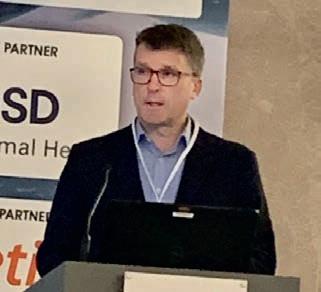

He added: “Only MSD can trace the process all the way from the birth of an animal to food on the plate. Now, more than ever, consumers demand taste they can trust.”

A panel discussion on traceability featured Sam Hoste, CEO Quantech Solution; Robert Sanders, CTO and Founder, Glas Data; Tom Maidment, Group Product Sustainability Manager, Hilton Food Group; and Ronan Loftus, Director, Data Labs MSD.
Technology has the potential to transform food production but Tom Maidment warned: “We need to balance the cost of audit with the benefit it brings – especially when it is not critical to food safety. People really do care about the environmental and welfare value of what they eat, especially meat, but price is an even bigger consideration for many.”
Ronan Loftus argued, however, that the issue is also about getting consumers through the door in the first place by building trust in a retailer’s range of products: “Sustainability speaks to brand equity”.
Also on day two, a panel discussion addressed the challenges of introducing standardised emissions measures in livestock farming. This is a major challenge for the beef industry in particular, but so far there is little uniformity in how carbon emissions are calculated across the sector.
The role of the supply chain in improving animal welfare was also discussed, with OSH’s Alex MacInnes representing the salmon farming sector.
Stephanie Armstrong, senior VP, UK, Ireland, Nordics and Benelux with Zoetis also gave a presentation on “Precision animal health”, explaining how the company is using data points, and analytics to create insights, driving informed management decisions to improve health and welfare.


As the first two days of the Summit made it clear, there are many common challenges for livestock farmers – whether the animals involved are hooved, feathered or finned.
The Livestock & Aquaculture Innovation Summit was organised by Kisaco. The Summit’s Headline Partner was MSD Animal Health and the Associate Partner was Zoetis.
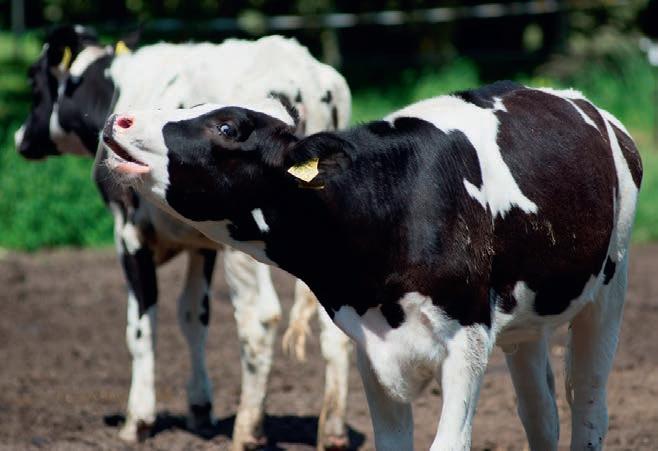
Learn to walk before you can run, and start at a small scale
”
The first day of the Summit provided an opportunity for innovative businesses in the aquaculture space to present their pitch to an experienced panel and the Summit audience, who selected the winning presentation.
Observe uses artificial intelligence (AI) to give actionable insights on fish farm performance. Marketed in association with Akva to fish farmers in Canada, Chile, Norway, UK, and Australasia, Observe applies principles of “precision farming” – with the emphasis on feed optimisation – to aquaculture. It uses existing hardware to allow remote management and “smart alerts”.

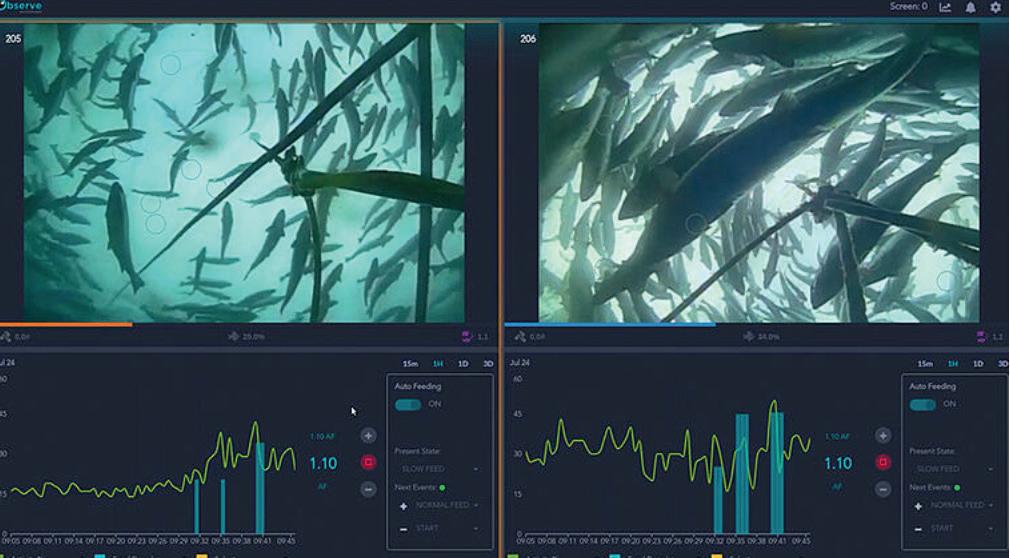
AquiNovo has developed a peptide-based additive for feed, with a potential multi-species application – fish, poultry and livestock. The aim is a better feed conversion ratio (FCR), with biomass for less feed, which is also better for the environment. For tilapia, the company says, AquiNovo’s non-GMO and non-hormonal feed additives result in significant improvement in both growth and FCR.


Set up to produce shrimp in Europe (to produce an environmentally friendly and better tasting shrimp, because most of the shrimp imported to Europe was too bland, the founders say), Local Ocean’s production is land-based. The company ultimately aims to license its technology to other producers “but to do that, we needed a working shrimp farm”.
The business is self-funded and has had to temporarily close its plant in Lithuania due to high energy costs.
Every drop of water contains millions of viruses and bacteria – most of which are benign. Water treatment in RAS fish farms and aquariums kills 99%, however. AquaGENius sampling kits from Luminis make it easy to take a sample and send it for analysis, so users can see what’s in the microbiome.




















Coastal wetland “agricologist” Alec Neiber introduced Seawater Solutions, an enterprise that “turns deserts into wetlands”, growing crops of halophytes (salt-loving plants), for human consumption and aquafeed. The enterprise has also built a shrimp farm in reclaimed wetland. Seawater Solutions operates in Vietnam, Africa and Pakistan.
























Seneye produces water quality monitoring sensors, initially for the home aquarium market but now also for commercial aquaculture. Seneye is a “biological fire alarm” that detects ammonia levels. Its replaceable slide media means that, unlike some other systems, no recalibration is needed and the system is easy to use. Seneye aims to add dissolved oxygen, CO2, turbidity and conductivity to its parameters.
Finland-based Volare is producing protein meal and lipids from black soldier fly larvae, an insect which feeds on almost any organic waste. For 2023-24 the company plans to scale up to a full scale production plant in Finland. The idea is to establish the business as a producer first, then license the technology.






Atlantic bluefin tuna could be the next species to be farmed in RAS (recirculating aquaculture systems)






Next Tuna has designed a “floating RAS system” and will be running its own breeding programme, at a site near Valencia, Spain. The company is working with Spanish academic institutions on the technology, with the University of Wageningen, in the Netherlands, on breeding and also with the Aquaculture Stewardship Council. It does not reach full production until 2028.
the top:
Seafood is especially vulnerable to fraud
”


By2050, with an estimated nine billion humans on the planet, finding palatable, nutritious and sustainable protein sources will require innovative thinking. Fortunately, there are already organisations actively supporting new approaches and technology in the seafood sector.
Two examples are the state-backed UK Seafood Innovation Fund (SIF) and Bright Tide, a social enterprise that helps bring innovative start-ups and early stage businesses together with corporate funders.
The fourth round of SIF launched in September, providing £3m of additional funding to support cutting-edge solutions that disrupt the status quo and help address challenges across the UK seafood sector.
Part of the £100m UK Seafood Fund, SIF launched in 2019 and has since supported almost 100 projects across the UK, spanning aquaculture, capture fisheries, and the seafood supply chain.

Taking the total funding made available under the scheme to £19m, the latest round is open to innovators across fisheries, aquaculture and the seafood supply chain.
Previous grant recipients include InsPro Ltd, which has trialled insects raised on local food waste as an ingredient for farmed salmon, and a project, led by Fishtek Marine, that has developed “scallop discos”, that is, lighted pots to catch wild shellfish.

SIF also backed the Rare Earth Global project to trial the use of hemp seed protein as a sustainable aquafeed ingredient for salmon.





The tide is high

Meanwhile, this summer Bright Tide launched its first Blue Economy Ocean Accelerator Programme for SME businesses. With more than 40 applicants, 12 successful businesses were selected to take part in the accelerator, which is the most specialist programme of its kind in the UK.
Bright Tide CEO Harry Wright explains: “We work with businesses to help them make climate change and biodiversity a strategic priority. We do this through (i) providing guidance and advisory support to organisations on their sustainability and social impact strategies (ii) offering exciting opportunities, like hackathons, for employees to take action on pressing climate and biodiversity issues, and (iii) facilitating training workshops for staff members on climate change and biodiversity risk and (iv) connecting businesses to investment-ready solutions in the climate/biodiversity markets.”
Wight, who has a background in corporate law, is passionate about conservation, biodiversity and tackling climate change. He set up Bright Tide with Jonathan Baillie, who was previously Executive Vice President and Chief Scientist at the National Geographic Society and
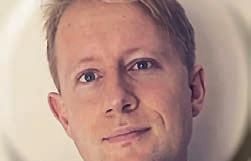

also Director of Conservation Programmes at the Zoological Society of London.



The organisation helps investors and corporates to identify how they can work with smaller enterprises for an environmental impact.
The businesses taking part over July and August include Biome Algae, which operates seaweed farms, producing and processing high-quality seaweed products and extracts. CEO and founder, Dr Angela Mead, commented: “Being a member of the 2022 cohort for the Bright Tide accelerator programme has been invaluable… we have progressed so much as a company in just a few months and are now set for a significant growth stage. Most importantly, we met a like-minded group of entrepreneurs within the blue economy space and look forward to continuing our journey as part of the Bright Tide community.”




Harry Wright said: “It’s been hugely exciting to work with the final 12 businesses on the programme and see first-hand the impact they’re each having, and the future growth potential in the blue economy.”
Later this month, Bright Tide’s next accelerator programme is set to be launched, this time focusing on the ability of marine ecosystems to capture and store large amounts of carbon.

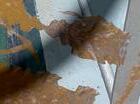
Bright Tide’s Blue Economy Ocean Accelerator Programme is supported by founding sponsors The University of Plymouth and Investec Wealth & Investment, as well as supporting partners Hogan Lovells LLP, Blu Sky Chartered Accountants, Ocean Power Tech and The Crown Estate.



Find out more at Seafood Innovation Fund www.seafoodinnovation.fund/applynow/


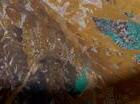
This page from top: (L-R) Dr Rob Enever, Fishtek and Jon Ashworth, skipper of the FV Three Jays; seaweed, Biome Algae; Harry Wright, Bright Tide

We work with businesses to help them make climate change and biodiversity a strategic priority
”
farmers will have the opportunity to find out how better connectivity can lead directly to better fish welfare – and more profitable operations – at a webinar jointly hosted by Fish Farmer magazine and technology experts Krucial (formerly known as R3-IoT) with the theme “Connectivity for Good”.

The webinar, taking place on 2 November 2022, will explore ways in which resilient connectivity and timely data can help farm operators achieve a clearer view of their operations
Improving connectivity for fish farm sites, including those in remote, offshore locations, can lead to more data being available, offering better insights and more informed decision making. Information such as feed data and environmental metrics can help farmers to manage the welfare of their stock, and monitoring environmental parameters can allow quicker action when conditions become potentially dangerous for fish. Better data can also cut feed waste.
Of course, this means that the communications system has to be able to deliver that data reliably and in a timely fashion. In the challenging type of environment in which many marine fish farms are operating, that can be a major challenge.
Krucial’s technology links sensors on and under the water with two communications platforms – the terrestrial cellular network, and a satellite-based network.


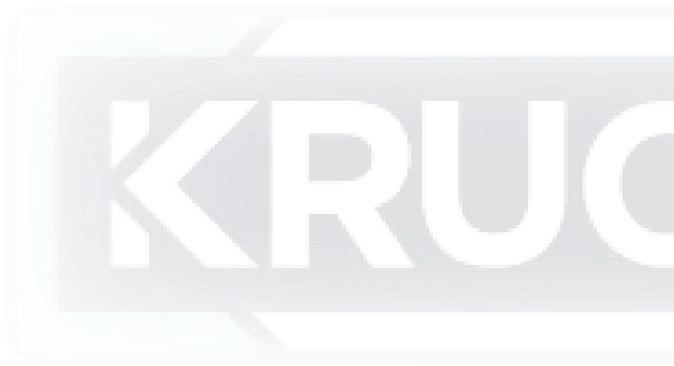
The company’s co-founders have a background in space technology, and they have created a system that can move seamlessly between cellular and satellite, so that when the former is unavailable or weaker, the satellite option is automatically engaged.
The key element is the layer of hardware and software that links smart devices at the sharp end of operations with the communications network. This is what makes it possible for the Industrial Internet of Things (IIoT) to operate – even on a fish farm out at sea.
To find out what this means in practice, join Fish Farmer and Krucial on 2 November for our webinar on digitising aquaculture.
The free online event will feature an expert panel including Kevin Quillien, Chief Technology Officer and co-founder at Krucial, and Dr Lynne Falconer, UKRI Future Leaders Fellow at the University of Stirling.
The discussion will be chaired by Robert Outram, Editor, Fish Farmer magazine.
Connectivity for good: why better connected fish farms will lead to healthier fish takes place on Wednesday 2 November 2022, 2pm-3pm (UK time).
For free registration or to find out more, please go online to: content.krucial.com/ connectivity-for-healthier-fish-webinarsign-up or scan the QR code, at right

were not available. Despite this, the boat impressed many visitors, with one person making a purchase, and another customer from the Netherlands wanting two boats once he is ready to order.
Flugga Boats has been asked by the buyer to limit the speed to 20 knots and figures show that the boat has a range of 16 miles at this speed. Some fine tuning may improve this range further, but an added safety feature built into the battery’s software is a “get home” mode of reduced power once the battery reaches a certain state of charge, similar to the warning light on a fuel gauge.

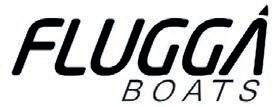
Livewire is currently going through coding before delivery to the customer.
TheE-Flugga is a 7.5m Fluggaboat with a difference: it is entirely electric.

The main battery is a 63 kWh lithium-ion battery housed in the console along with the charger and DC/DC control. The drive unit is built by Evoy in Norway and is remotely monitored via the Internet for software updates, commissioning, and performance.
This is a new concept for the workboat sector. As well as being allelectric with zero emissions, the construction and charging during trials was also powered by renewable energy from the company’s own wind turbine.
Flugga Boats received no financial assistance and funded the project entirely by itself. The company strongly believed in the concept and knew that it was worth pursuing.
The E-Flugga was shown at Aquaculture 2022 in Aviemore. There was significant interest, although delays in supply meant that the boat had not been trialled and so accurate or actual performance figures
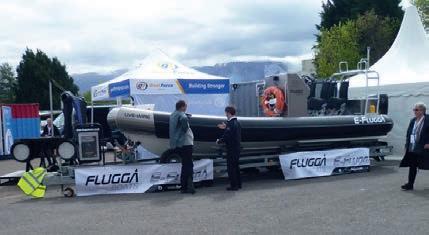
Featured: 8.5m, aluminium and HDPE collar. Specifically designed for Salmon farm work, with heated cabin, twin Oxe diesel outboards.
 Top left: Handling at speed
Top left: Handling at speed
“This is a new concept for the workboat sector”
Alessandro Lovatelli, Conference Chair for Aquaculture Europe 2022, summed it up in his welcoming remarks: “I welcome the return to the ‘old normality’”.
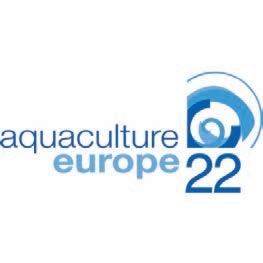
The European Aquaculture Society was meeting once more after two years overshadowed by the Covid-19 pandemic – with the event planned for Cork in 2020 taking place as a virtual conference online, and last year’s conference in Madeira subject to lateral flow tests and reduced attendee numbers.




This time the venue was the Palacongressi di Rimini, on Italy’s Adriatic coast, and the event took place over 27-30 September. AE2022’s theme was “Innovative Solutions in a Changing World”. There were more than 2,560 attendees and the EAS received 883 scientific abstracts, with papers presented at the conference covering subjects ranging from the optimum harvest time for cultivated kelp to the nutritional requirements of sea bream. The accompanying trade show, back to full scale this year, had 164 exhibitors.

As well as Alessandro Lovatelli, attendees at the opening event heard from EAS President Hervé Migaud, Riccardo Rigillo, Director General for Maritime Fisheries and Aquaculture, Ministry of Agriculture, Italy and Andrea Fabri, Director of the Italian Fish Farmers Association (API).
At the EAS General Assembly, held on Wednesday 28 September, Hervé Migaud handed over to incoming President
for 2022-24, Bente Torstensen.
The three full days of the conference each saw a plenary session addressing the main theme of innovation and change.
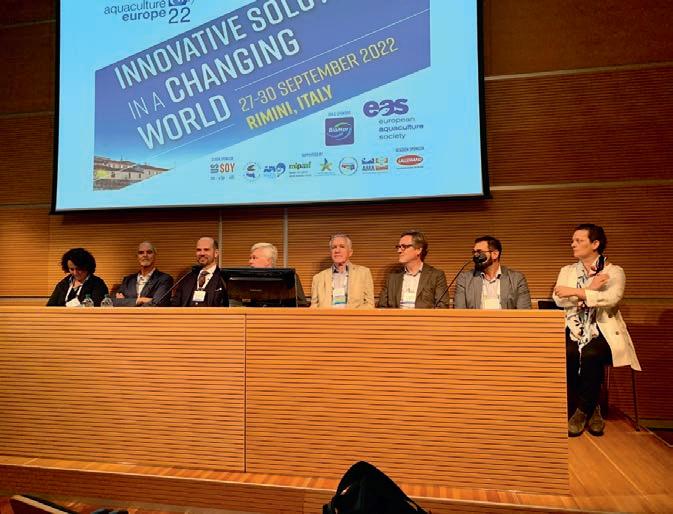
The first, on the impact of climate change, was led by Mariana Mata Lara, a Senior Project Manager for Geonardo Environmental Technologies focusing on EU funded projects in the areas of Blue Economy and Science Education; and Nadia Pinardi, Professor of Oceanography at Bologna University.
Mariana Mata Lara noted that 10% of the global population depend for their livelihood on aquaculture, fisheries and related sectors, so the impact of climate change on this industry is hugely important.
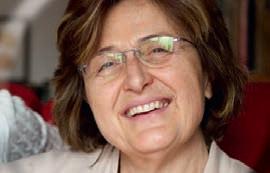
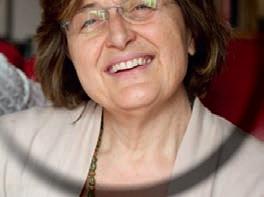
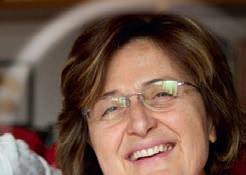


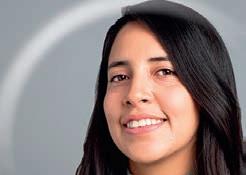
She cited the ClimeFish study in Norway which found that above 20C, salmon growth stops. Higher temperatures can also lead to disease and malformation for the fish.
So how do we adapt, Mata Lara asked. Can we move farms to cooler waters, or switch to other species?
Catfish, in contrast, like warmer temperatures but are vulnerable to floods and also to drought events. The United States, for example, has already seen slower growth in its freshwater aquaculture thanks to drought.
One way to adapt to that, Mata Lara suggested, is find better ways to capture and keep water after periods of heavy rainfall.
Shellfish aquaculture is vulnerable to ocean acidification and warming temperatures, she said. One estimate suggests that by the end of the current century the European shellfish industry could lose as much as $1bn (£880m) from
This page from top: Mariana Mata Lara; Nadia Pinardi; Sustainability panel. From le�: Chiara Petroli; Javier Ojeda; David Basset; Jon Arne Gro�um; Laszlo Varadi; Pe�er Johannesen; Gyula Kovacs; Yolanda Morales
Opposite from top: Palacongressi di Rimini; Geert Wiegertjes; Linda Aspeslagh
I welcome the return to the ‘old normality’
climate change.
Can producers adapt? Mata Lara said that there are options – genetic variations can improve resistance to acidification, for example.
She also addressed the question of potential positives arising from climate change. Flooding might increase the space available for aquaculture in some areas – although this would be a mixed blessing at best –and ocean warming can actually increase productivity for some species, like filter feeders.

Rising sea levels could increase the area of brackish water creating larger habitats suitable for species like shrimp.
Aquaculture could shift to different species, techniques and areas that are less vulnerable.
Mata Lara stressed that the primary strategy for producers has to be adaptation, adding: “We need data above all to form a CAP [climate adaptation plan]”.
Accurate future projections will be critical, she noted, and adaptation would have to be tailored to the species and the location involved.
Nadia Pinardi talked about the developing science of “operational oceanography” which is being used to predict marine conditions.
Pinardi is Vice-President of the
Commission for Observation, Infrastructure and Information Systems (Infrastructure Commission) of the World Meteorological Organisation (WMO) and an acknowledged leader in the conceptual design and practical implementation of ocean forecasting systems across the world’s oceans.
The ‘Copernicus’ system – the EU’s open access Earth observation programme – has been a “game changer”, Pinardi said. Using real-time observation via satellite and other data, it’s possible to provide a good quality oceanographic forecast 2-10 days ahead.
Pinardi gave the example of the “Acqua Alta” storm surge event that flooded Venice in November 2019. Conventional coastal forecasting predicted the surge 12 hours ahead – Copernicus was able to give a warning two days before the event.
Pinardi’s research applies a “digital twin” approach, creating a digital model that replicates the dynamics of the physical ocean.
The CoastPredict programme, backed by the UN, uses this technology. Pinardi gave the example of a project the University of Bologna undertook to predict how conditions for farmed clams, in the Goro Lagoon near Venice, would be affected by physically remodelling the lagoon entrance.
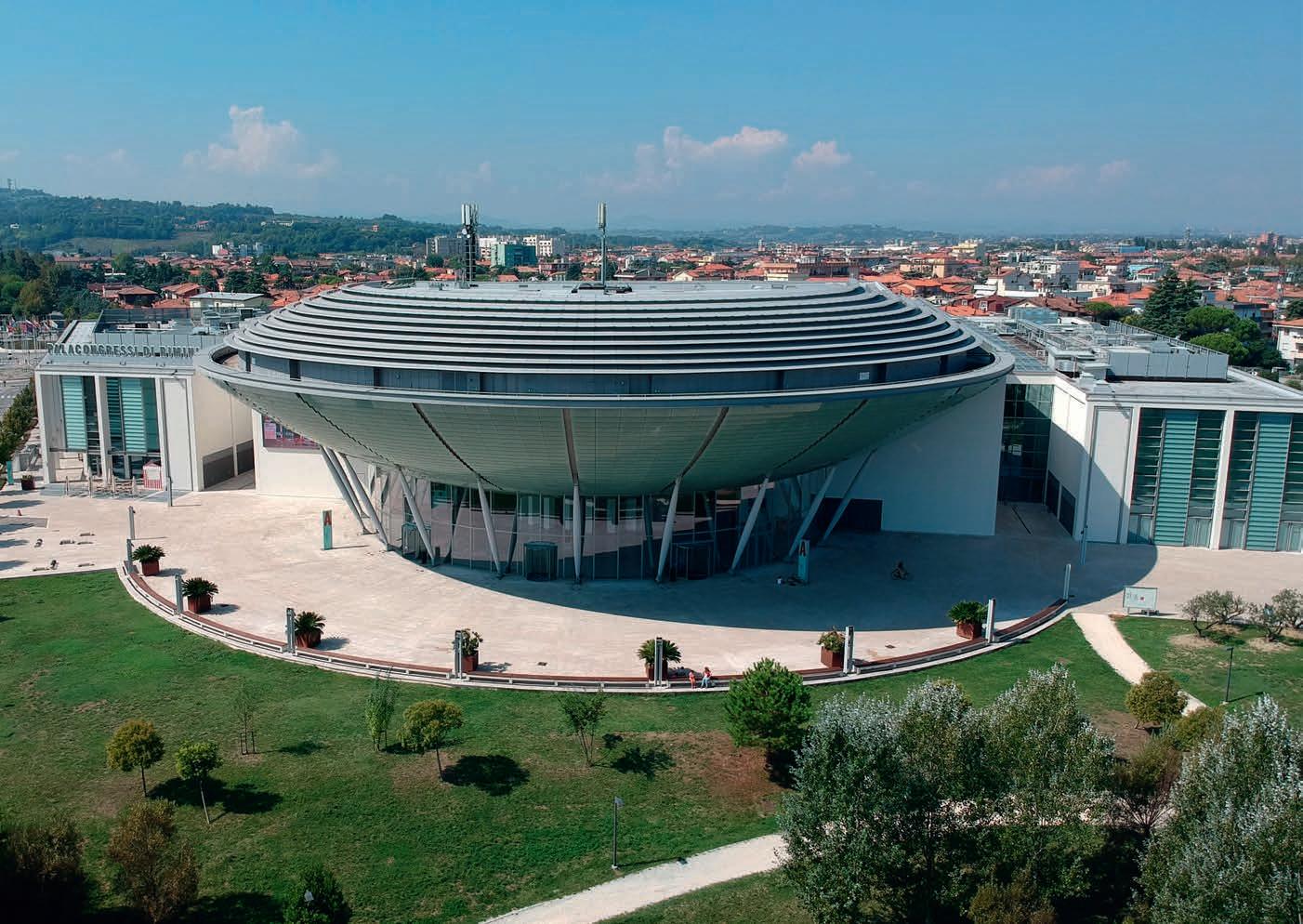
TWO special awards were presented at the opening ceremony.
The first went to Linda Aspeslagh, who has been with the European Aquaculture Society secretariat since 1984 and is now retiring after nearly 40 years. Members at the Association’s conferences may not have realised how important her work has been in making them happen, and indeed in helping to establish Aquaculture Europe as an annual event in its own right.

Chief Executive Alistair Lane said of Aspeslagh:
“This person makes things happen”.
The second award, honorary life membership of the EAS, was to Stefano Cataudella, Professor Emeritus at the University of Rome Tor Vergata, who was not able to attend in person for medical reasons.
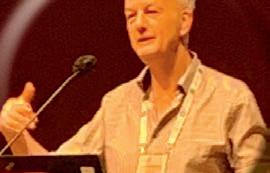
Professor Cataudella, EAS President Herve Migaud said, has dedicated his life to promoting aquaculture in the Mediterranean and around the world, including working with the United Nations Food and Agricultural Organisation.
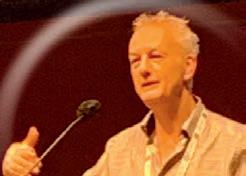
The second plenary, on Thursday 29 September, focused on the concept of “circularity”. Leading off, Professor Geert Wiegertjes, Head of the Aquaculture Group at Wageningen University, Netherlands, made the point that most of our food systems are “linear” and therefore have an enormous environmental impact.
He said: “Circularity is not an end in itself but a means to achieve a long term objective –sustainability.”
He laid out five principles:
1. Safeguard ecosystems
2. Avoid waste
3. Prioritize food over feed
4. Recycle by-products
5. Reduce energy use – or switch over to renewable energy.
Professor Wiegertjes introduced a panel discussion with: Yolanda Morales, manager of the ACUIPLUS cluster in Spain, a group of companies and suppliers focused on sustainability; Koushik Roy of the University of South Bohemia, a biologist concentrating on the issues of improved resource use efficiency (in terms of nutrients and biomass) of Central European fishponds, intensive aquaculture, and farm-to-fork; and Brian Thomsen, Director of the Danish Aquaculture Organisation.
Thomsen argued: “We need a ‘green shift’ – and a ‘blue shift’ to aquatic foods.”
He said that in Denmark the demand for sustainable aquatic foods was being discussed but not supply side issues. Denmark alone would need to find an extra 50,000 hectares to meet the increased demand for aquatic foods that is projected.
Yolanda Morales commented: “Our approach should be regional or local; the issues in Spain are very different from the issues in China.”

The session also featured a surprise appearance from Sir David Attenborough – albeit in the form of a pre-recorded interview – with a salient message: we have to use the land (and sea) differently, and more efficiently, to allow space for wilderness.
The final plenary session, “A digital era for aquaculture innovation”, focused on the application of big data, featuring case studies from WSENSE, an Italian company providing data tools for the marine sector.

The speakers for this session were Chiara Petrioli, Professor of
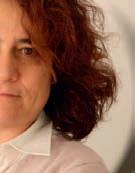

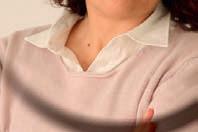


Computer Science and Engineering at the University of Rome La Sapienza and co-founder of WSENSE; Alexander Bergrem, Vice President Sales and Business Development; and Georgia Koutsandria, Senior R&D Engineer at the company.
Chiara Petrioli addressed the conference by video link as she was in Turin to receive the GammaDonna 2022 Award for innovative female entrepreneurship. She stressed that we need to be able to monitor the underwater environment and for that we need big data – and an “underwater internet of things”. As she put it “we know more about the surface of Mars than we do about what is under the ocean.”
Although based in Italy, WSENSE (pronounced “woo-sense”) has been working with the fish farming industry in Norway to help digitise aquaculture. Through Project Seastar, the company is collaborating with the EU and salmon producer Lerøy.
Seastar uses underwater sensors (W-Nodes) that transmit data acoustically to stations on the surface (W-Gateway) and these link up with terrestrial networks using radio transmission. The data is picked up using the W-Cloud cloud-based
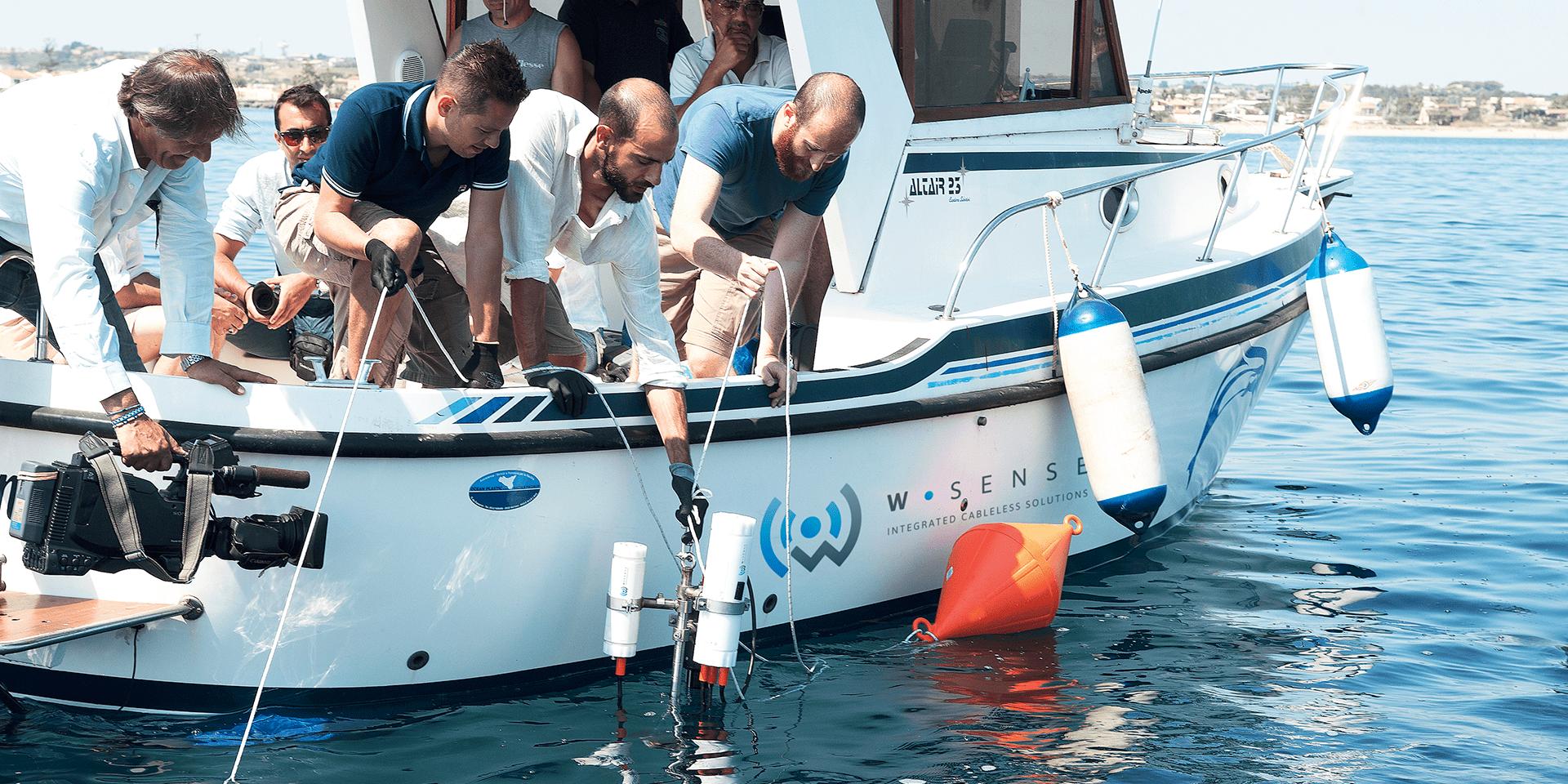
Circularity is not an end in itself but a means to achieve a long term objective – sustainability
”
software platform.

The next stage, which the company is working on, is W-Pico: this involves an even smaller node which can be implanted into the body of a fish, giving real-time data on the animal’s health and welfare.
The hope is that better use of data can help improve not only efficiency but also fish welfare and the overall sustainability of the sector.
With the EAS coming to Italy this year, involving the Rome-based UN Food and Agricultural Organisation (FAO) was too good an opportunity to miss. One of the strands throughout the first day of the conference was devoted to the FAO’s work in agriculture, including presentations from: Austin Stankus, Aquaculture officer at FAO’s Fisheries Division; Lorella De La Cruz Iglesias, Deputy Head of Unit – Blue Economy Sectors, Aquaculture and Maritime Spatial Planning, EU Directorate General for Maritime Affairs; and Graham Mair, Senior Aquaculture Officer, FAO.
The latest in the FAO’s regional reviews of aquaculture in Europe sees challenges around licensing, reliance on high value species and productivity. Change is taking place in the form of selective breeding and new commercial and marketing activities, with increased use of third party certification but not much diversification into new species. Feed supply and workforce skills are issues for the industry, the FAO says.
Also as part of the FAO day there was a panel discussion on sustainability in aquaculture panel. Taking part were: Laszlo Varadi, Network of Aquaculture Centres in Central and Eastern Europe; Javier Ojeda, Federation of European Aquaculture Producers; Chiara Petroli, La Sapienza University, Rome; David Basset, European Aquaculture Technology and
Innovation Platform (EATIP); Yolanda Morales, AQUIPlus Cluster; Gyula Kovacs, Research Institute for Fisheries, Aquaculture and Irrigation, Szavas, Hungary; Petter Johannesen, IFFO Marine Ingredients Organisation; and Jon Arne Grottum, Norwegian Seafood Federation.
The discussion covered issues of sustainability for marine ingredients in feed; biosecurity; the role of women in aquaculture; and the importance of transparency in the industry.
Jon Arne Grottum said: “It is important that producers understand that they should cooperate whenever they can cooperate, and compete when they have to compete.”
The panel also discussed challenges in helping SMEs in aquaculture to become more competitive. David Basset: “We need to improve on disseminating research – there needs to be assistance to spread knowledge transfer.”
The FAO day also included an update on the organisation’s aquatic genetic resources information system (AquaGRIS) which was developed to address the recognized lack of information on aquatic genetic resources (AqGR) globally; and on the International Year of Artisanal Fisheries and Aquaculture (IYAFA), which is going on throughout 2022.

This has involved a series of initiatives and events around the world, led by national organisations and authorities, under the







THREE shortlisted aquaculture students presented on research projects they had been involved with.
The winner was Santiago Pintos, on a joint project between the University of Murcia and the University of Ferrara.

Pintos, a postgraduate student at Ferrara, talked about a study of “psychobiotics” –looking at the impact of probiotic diet on the central nervous system. It has already been established that a healthy gut biome can reduce anxiety in humans – could it work for fish?
The project, which focused on zebra fish, found that a probiotic element in the diet could indeed lead to reduced stress behaviour – with
implications for farmed fish diets. Runners up were Niklas Warwas, doctoral student at the University of Gothenburg, who described a study into the potential of marine yeast, grown as a processing industry sidestream, as a protein ingredient and immune system stimulant for farmed rainbow trout; and Fernando Naya-Catalá, a Bioinformatics Specialist with the Institute of Aquaculture Torre de la Sal, Valencia, who described a trial on the role of gut microbiota in gilthead sea bream in the Canary Islands.
Opposite from top: WSENSE Project-2; Chiara Petrioli
Above: Polish fish on offer to delegates
AS

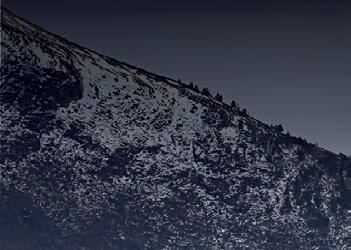
Palacongressi di Rimini.
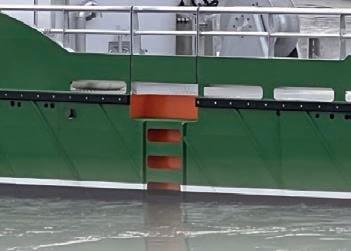
The winner of the award for best Student
was Hanna Ross Alipio

presentation: “Hydrogen sulphine


show – including Fish Farmer, which was a media sponsor for the conference.

The chance to win a bottle of fine Tomintoul single malt whisky drew many visitors and we would like to congratulate the two winners in our draw: Igor Peñarrubia of Health Tech Bio Actives, Spain, and Marco Prati, PLP Systems, Italy.
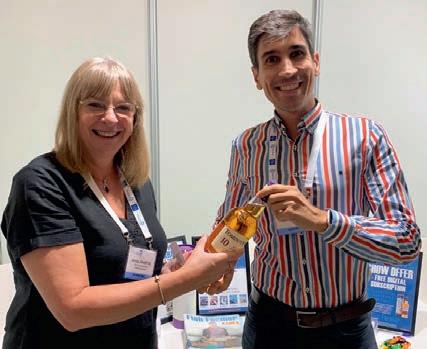
winner for best ePoster

Paulo Gavaia, of the Centre of Marine


Algarve,
Senegalese
slogan “small in scale, big in value”.
Other key topic sessions included an update on the EU’s PerformFISH project, which aims to tackle the issues behind the stagnation in growth of the Mediterranean marine fish farming sector; a forum on the challenges of farming eels in Europe; and an industry forum for Mediterranean producers; and the AE2022 Innovation Forum jointly hosted by EAS, EATIP and the EU. Rimini also provided an opportunity for companies and other organisations to meet and promote their services at the trade
AE2022 was sponsored by Biomar (gold sponsors) and the US Soybean Export Council (silver sponsor). Lallemand Animal Nutrition was a session sponsor and the conference also received support from the national and regional Italian governments.
Aquaculture Europe 2023 will take place in Vienna, Austria on 18-21 September. For more information see the EAS website

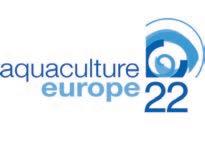
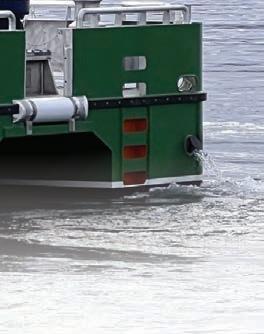



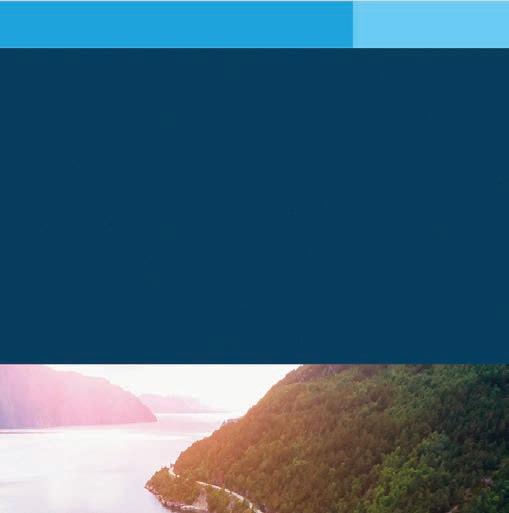

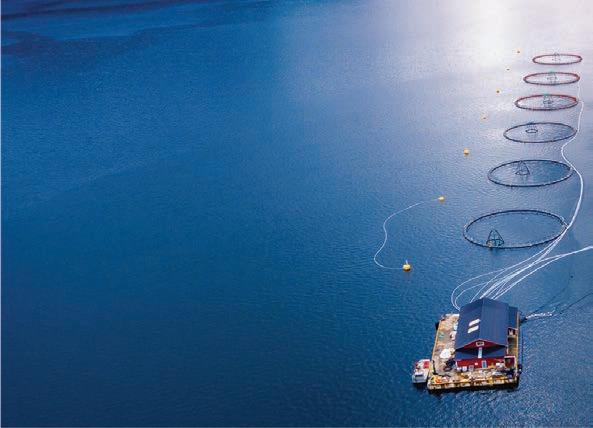



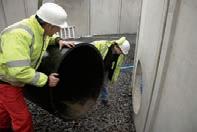























is a savoury spread with a strong salty flavour which, in British popular culture, has become a byword for something that divides opinion sharply –you can’t help but either love it or hate it.

As a product named after a French cooking pot and invented by a German scientist, it’s a great example of the British skill in borrowing good ideas liberally, from whatever source.

Marmite is also an example of using a “sidestream” – that is, waste from one process which can be turned into a useful component in another process. In this case the waste is derived from the dregs of brewers’ yeast, a by-product of the beer industry.





Sidestreams are not new, but there is increasing attention being paid to them as part of the drive to create a more “circular” economy. As Professor Geert Wiegertjes of Wageningen University said in his presentation at the Aquaculture Europe conference last month (see report, page 46), most of our food production systems are linear. They take a resource, process it and consume it –which on an increasingly crowded planet, is not sustainable in the long run.
In contrast, nature operates a circular economy. In a thriving ecosystem there is no waste – there is always a life form that can make use of any given resource.





Finding opportunities for the “blue economy” to become more circular and therefore more
















Nature doesn’t waste anything - now humans are trying to catch up
sustainable is a priority for the European Circular Economy Bioeconomy Fund (ECBF) a venture capital impact fund that seeks to catalyse industry and help achieve the goal of a “net zero” Europe by 2050. ECBF Partner Stéphane Roussel explains: “We are return-oriented but ECBF is an impact fund. We balance positive environmental, social benefits and an economic return.”
The ECBF was set up by the European Commission to build a long-term sustainable economy and drive the transformation from a fossilbased to a bio-based circular economy. The fund was established in 2020 with a pledge of €100m (£87m) from the European Investment Bank (EIB).
Originally set for €250m (£218m), the fund raised around €300m (£262m) up to February this year, and now has around 25 shareholders, including major banks and corporations such as Nestlé.

Roussel says the fund sees

This page from top: Friendly Fish Insects in Aquaculture PROTIX; Marmite Opposite from top: The Lisaqua team (L-R) Charlo�e Schoelink, Caroline Madoc, Gabriel Boneu; Stephane Roussel

around 1,000 opportunities each year some of which ECBF seeks out pro-actively and some which approach the fund. Out of those, only around five each year will receive funding.
ECBF’s investments are limited to the EU, plus countries participating in Horizon Europe, which includes non-EU countries like Switzerland, Israel, Turkey and Norway – but not the UK.
Even if it is the lead investor, ECBF works with other funders and does not take more than 50% in any funding round.
As Roussel explains: “Generally, ‘circular economy’ is a model that uses waste as raw material – in a closed loop, ideally.
“For the ECBF, the focus is on ‘bioeconomy’. Especially, the carbon embodied in plants and living animals.


“The idea is to capture more carbon than is produced.”
The latest investment for the ECBF, announced in September this year, is Trapview, an AI-based pest monitoring and prediction solution that aims to reduce the amount of pesticides land-based farmers use.
The fund’s most well known investment so far, however, has more of an aquaculture connection. Protix is the market leader

in circular, natural and sustainable ingredients from insects. The company breeds black soldier fly larvae, which are fed organic waste from the food industry. The insects, in turn, are processed into ingredients such as proteins and lipids.
Protix has built the world’s first industrial insect facility, laying the foundation for a wide range of applications in the feed and food industry.
The company’s initial focus was on insect meal as an ingredient for pet food, but aquafeed is part of its strategy. This September, Protix teamed up with Förde Garnelen, Aquafeed Germany, neomar and Crusta Nova to launch a new shrimp feed, SHR EX. The feed has been designed for the needs of European land-based shrimp farms as they increasingly move towards greater sustainability. SHR EX replaces marine proteins with locally produced insect protein from a circular process, using agricultural by-products as insect feed.
The product, which will be sold by Aquafeed Germany, is not only more sustainable, Protix says, but initial research also shows a significant improvement in shrimp growth and survival rates.
The ECBF is also looking at investing more directly in shrimp farming. Nantes-based Lisaqua, for example, aims to be France’s first land-based shrimp farm. The company plans to use power from a local recovery unit, which turns waste into energy.
Another business of interest is Aquapurna, based in Germany, which says that its “Smart Reef” system will take shrimp farming from medieval practices to a high-tech, 21st century model.
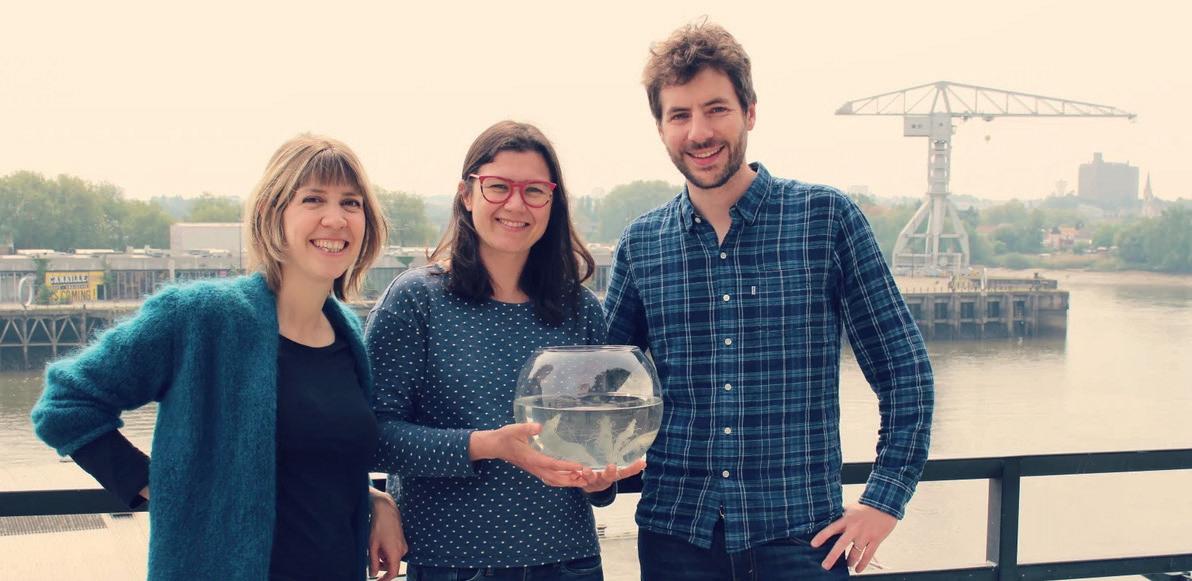
Roussel says that the ECBF has a five to seven year horizon for its investments, which should allow time to see an idea put into effect and to take the business to the next level. It also means that the current pressures on the European economy should not present a barrier to investment.
As Roussel puts it: “We can see beyond the energy crisis, but we do need to ensure the investee companies are taking a prudent approach to capital.”
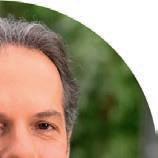
A presentation at Aquaculture Europe by a student at the University of Gothenburg harks back to the example of marmite –at least in as much as it focused on yeast and a food industry
by-product. Niklas Warwas, who was a runner-up in the Student Spotlight Awards at the conference, spoke about a study on a potential use for marine yeast cultivated on herring brine.
Brine – the waste water produced as part of processing herring – is very salty and has traditionally been seen as having very little use. While terrestrial yeast cannot tolerate that level of salt, the cold water marine yeast Candida sake is adapted to those conditions and can be grown in herring brine.

Warwas and his colleagues were able to use the yeast to create a fishmeal with more than 50% protein and 3% omega-3 fatty acids. A test involving rainbow trout found that its nutritional impact and palatability were on a par with regular fish feed and the results suggest that C. sake might be an acceptable substitute for less sustainable marine ingredients.
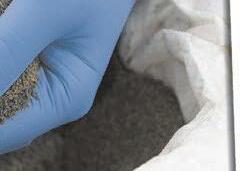
Meanwhile, String Bio, based in Bangalore, India, is looking at industrial waste as a protein source. String is one of the world leaders in gas fermentation, scaling up economical and modular fermenters that enable the production of high-quality ingredients from greenhouse gases.

String’s PRO-DG® alternative protein ingredient has been trialled as a salmon feed by international producer BioMar, and the results have been positive.
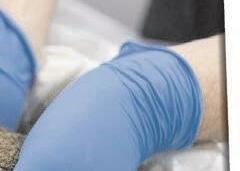
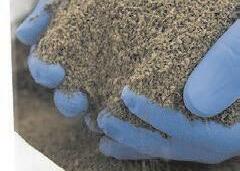
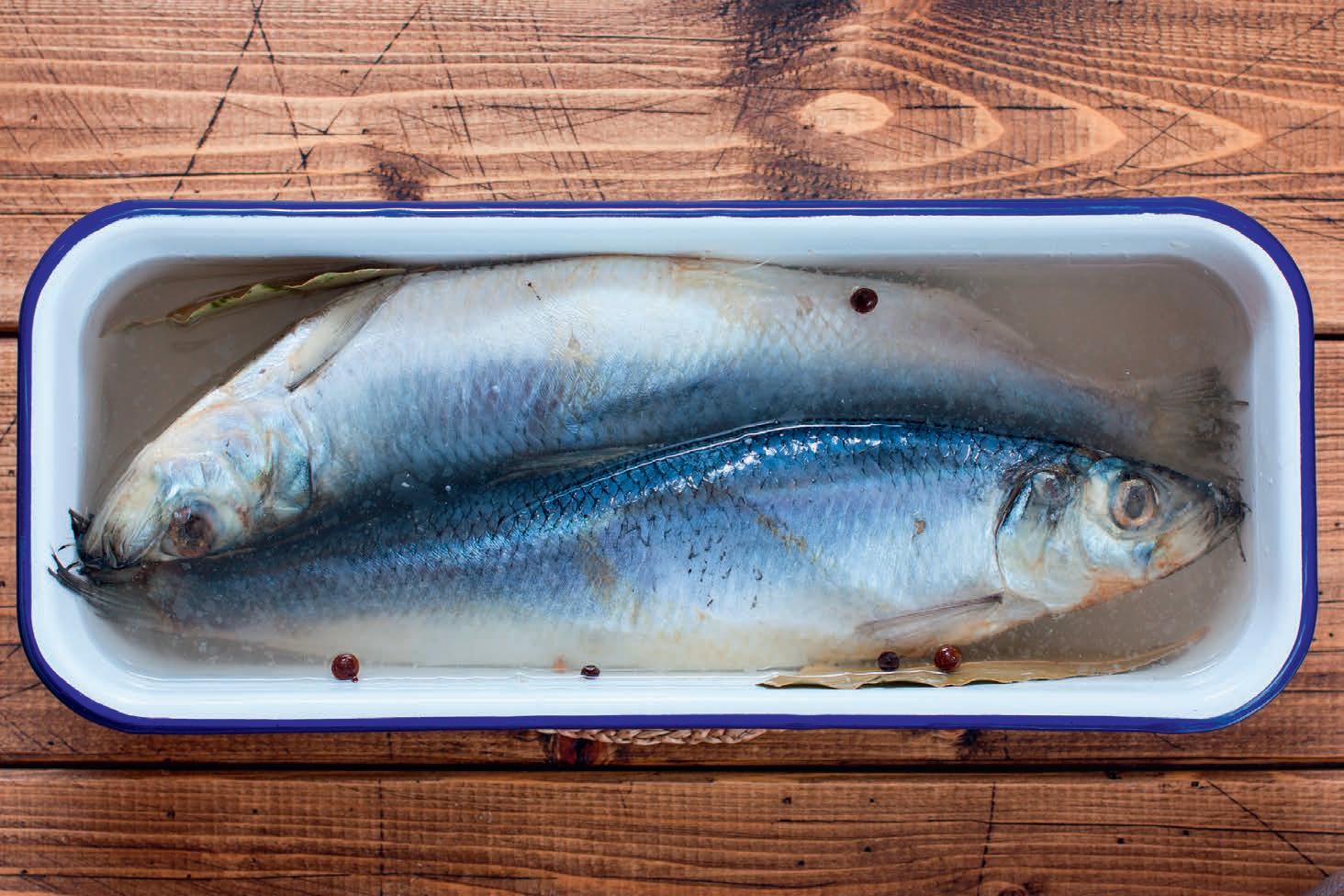
Fernando Norambuena, Global Category Manager – Novel Raw Materials, BioMar, says: “At BioMar we are constantly seeking innovative raw materials that are aligned with our strategic

This page from top: Herring brine is a waste product, but it can be used to grow yeast for protein; Pro�x Protein X protein meal

ambitions to help develop circular and restorative ingredients.

“The preliminary results of the validation highlight the biological potential of PRODG® as a protein alternative within our current basket of raw materials to reduce carbon emissions.”
Dr. Ezhil Subbian, CoFounder & CEO, String Bio said: “String has been validating the use of PRODG across various species in different geographies and varying farm management practices. It’s a great milestone to have the validation studies done by BioMar, an industry leader in the aqua nutrition sector. We look forward to taking the work ahead with them to drive commercial adoption of novel ingredients in aquaculture.”
So circular principles, applied to aquafeed, could mean that the very industrial by-products that contribute to climate change could be put to use feeding the planet. Unlike marmite, that’s something few could find fault with.
The Isle of Lewis authorities are dealing with salmon waste with the help of a new pasteuriser (pictured) by Landia, the specialist manufacturer. Landia fitted an ensiling tank equipped with an 18.5kW stainless steel long shaft chopper pump, which recirculates and blends the salmon waste (mainly left-overs from the filleting process) into a smooth purée, before being discharged into the pasteuriser – fitted with Landia’s side-entry propeller mixer and dry-installed chopper pump. The one-hour (minimum) waste treatment process at 70°C meets ABP (animal by-products) regulations, and is fully approved by veterinarians. To find out more, see page 56, or contact Paul Davies at pd@landia.co.uk or 01948 661 200. www.landiaworld.com
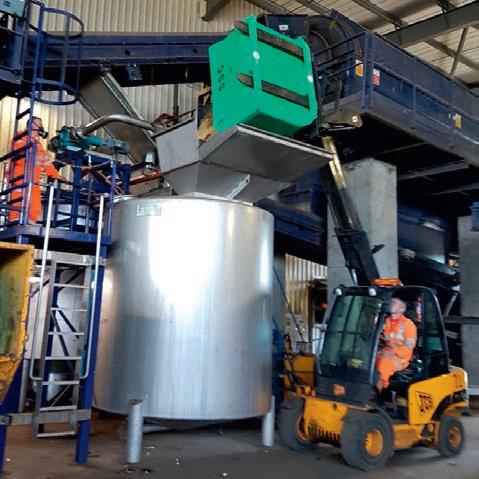
Alumichem is a Nordic Company that delivers customised turnkey solutions to treat intake water and effluents from aquaculture systems. Christian Bang-Møller, CCO Technology Alumichem, said: “Our business model merges Chemistry, Technology and Knowledge, and – with our recent activity in the UK – Trevor’s experience in water treatment combined with his background with systems and emerging technology places him perfectly to help our aquaculture partners solve their water and wastewater needs. He also brings a unique understanding of government and legislative guidelines from his consulting work. We are very happy to have Trevor [pictured below] on board.”
Find out more about Alumichem at alumichem.com/applications/ aquaculture-sludge-treatment/
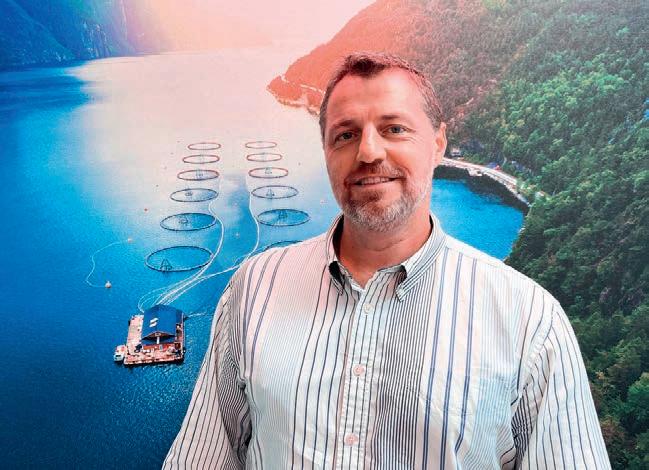
Gael Force has many years of experience in building more than 100 barges at its own engineering facilities based in Scotland. The company has now revealed an updated range of SeaFeed™ Steel Feed Barges with 400 and 500 tonne feed capacities. They have been designed with a rounded bow, good seakeeping, and safe, secure operation, all in a low-cost package.
The sludge and water treatment systems company Blue Ocean Technology is to deliver complete sludge treatment with dewatering and drying of fish sludge to Hima Seafood (pictured), the world’s largest land-based trout farm, based in Rjukan, Norway.

The barges are designed and built in accordance with NS9415. Their capacity allows for a high volume of additional functional dry storage and a modular design means there is flexibility in volumes of feed storage. To learn more, visit: gaelforcegroup.com
Hans Runshaug, CEO of Blue Ocean Technology, said: “We are proud to have won yet another major sludge treatment contract. The technology scores on low energy consumption, compact area requirements and high dry matter levels. All this provides cost savings and a better ESG [environmental, social, and governance] accounting for the fish farmers.” blueoceantechnology.no/en
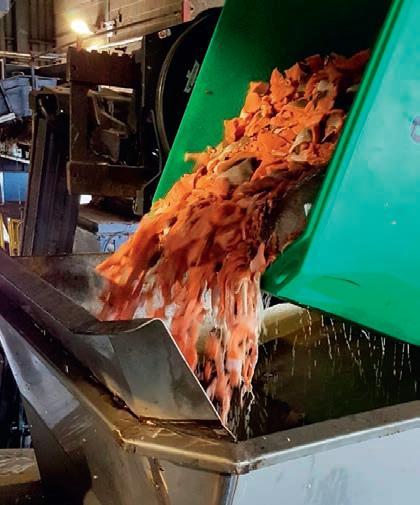



experiences. Buying a good quality pasteuriser – not too big or not too small – would enable us to meet ABP (Animal By-Product) regulations, which require the waste to be treated for one hour at 70°C.”



Determined to make it work

MacMillan said: “We spent a long time looking at different pasteurisers and had the benefit of seeing working sites where we were given ‘warts and all’ about equipment performance, reliability of suppliers, backup and, importantly, lessons learned from mistakes made. Eventually we went for Landia, who we never heard anything bad about, and who were keen from day one to help us achieve our goals and tailor the unit to meet our needs.
Withaquaculture production sites widely dispersed throughout remote parts of Scotland’s Highlands and Islands, handling fish waste collection and treatment is always going to be difficult ... or is it?
Not content with being at the thin end of the wedge, the Isle of Lewis is leading by example with its Creed Integrated Waste Management Facility (IWMF), located just outside Stornoway. Owned and operated by Comhairle nan Eilean Siar (CnES), the local authority for the Western Isles, the manager and his team at this progressive plant believe firmly in continuous improvement, optimising the methods of managing waste from the island’s population of approximately 22,000.
Most recently, through careful planning and no shortage of patience, Creed also now features the equipment required to take in and process seven tonnes per shift of salmon waste. As David Macleod, Head of Municipal Services at CnES, explains: “We always had an eye on how we could use fish waste, but before we could invest in equipment, we needed commitment and guarantees from the fish companies about continuity of supply.
“We did our homework and our Plant Manager, Donnie MacMillan, visited installations in Scotland to find out about their

“We were restricted into a very tight space by regulations that demand separation of what can be housed in so-called ‘clean’ and ‘dirty’ areas, which is rather ironic at a waste management facility – but we had no choice. The late Hugh Vaughan (from Landia) had no hesitation in coming up here to measure everything out. He was determined to make it work. We needed an ensiling tank, which effectively is a buffer/pre-treatment tank. With the space restrictions, Landia were able to provide a 10m3 unit, which sits just in front of the 8m3 pasteuriser.
“It was a very tight fit, but it worked. It had to work - we’d made a commitment to the salmon industry and unless we could keep our promise, it would mean a big financial burden.
The Landia guys worked flat out from start to finish. There was no wriggle room, but they nailed it, first time”.

Prior to their arrival in Stornoway, the Landia team had assembled the units, tested every nut and bolt, and run a trial process with water. The ensiling tank, pasteuriser and Landia personnel then left Shropshire early on a Sunday morning, with installation on the Isle of Lewis commencing 24 hours later.
The pasteurised fish waste – a 7 cubic ton batch per shift – is now integrated with household food waste and garden waste for Creed’s anaerobic digestion process, making a positive environmental and economic impact by not sending it to landfill or having it transported off the island.
To find out what Landia can do for you, contact Paul Davies at pd@landia.co.uk or call 01948 661 200. www.landiaworld.com







 Above: Donnie Macmillan (right), Plant Manager, with Landia’s Paul Davies
Left: The Landia ensiling tank is equipped with an 18.5kW stainless steel long sha� chopper pump
Below: Prior to pasteurisa�on, salmon is fed into the Landia ensiling unit
Above: Donnie Macmillan (right), Plant Manager, with Landia’s Paul Davies
Left: The Landia ensiling tank is equipped with an 18.5kW stainless steel long sha� chopper pump
Below: Prior to pasteurisa�on, salmon is fed into the Landia ensiling unit
The Landia guys worked flat out from start to finish ”

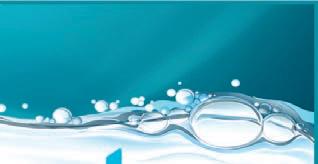
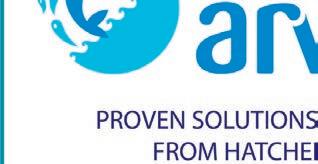
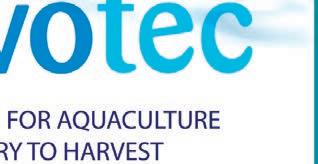









are farmed on outdoor farms all over Europe. Although they are a cold-water species, as with all fish, and can withstand temperature variation of 0–20°C, the ideal temperature for trout growth is between 12–16°C. Below this range, their metabolism slows down, affecting fat digestion.
As the fish’s metabolism slows down, it can take up to a few days for trout to digest a meal. A high feed rate overloads the digestive tract, and the trout is less capable of digesting food efficiently. This leads to a poorer feed conversion ratio (FCR) and more excrement, which may be visible to the farmer as a higher degree of pollution.
In intensive trout farms and farms with restricted water availability, more pollution can often be detected during the winter. This happens because the digestive tract is not accustomed to handling much food. The enzymatic processes depend on the water temperature and take place at a low rate when the water is cold, especially when the water temperature sinks to 8°C and below.
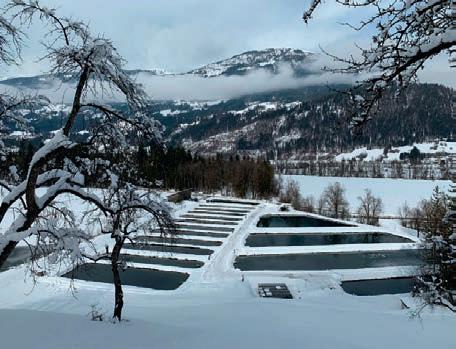
On farms, growth is desirable year-round, including in the colder months. Feeds that
do well in summer often fail to yield good winter results. One important reason for this is the fish’s change in essential fatty acid requirement compared to periods of higher water temperatures. With this in mind, fish need extra care at cold temperatures.
Four main challenges during cold water periods:
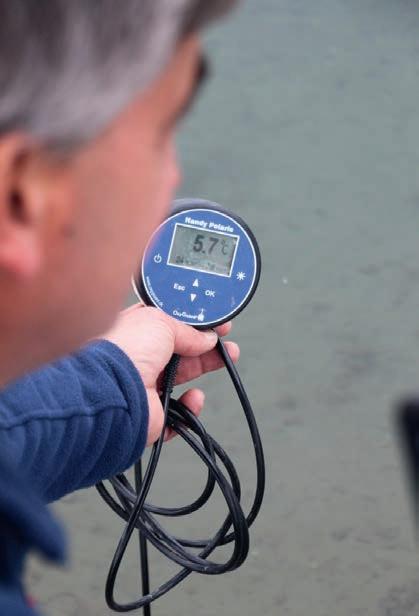
• Reduced appetite, decreased feed intake
• Slower metabolism and reduced fat digestion efficiency
• Maximum feeding can lead to pollution
• Altered fatty acid requirement
It is vital to make feed highly attractive and palatable to the trout so that the fish immediately reacts when feeding starts. For this purpose, the R&D team at Alltech Coppens has done feed trials to investigate the fat digestion and palatability of different ingredients so that the right combinations can be created, in addition to meeting the special nutritional requirements during periods of cold water. Alltech Coppens changes the fatty acid profile in its winter feeds in order to meet the needs of trout in cold water. Furthermore, measures are taken for better fat digestion and attention is paid to the palatability of the winter feeds to ensure a good feed intake. All this allows for much better performance and less pollution during the cold winter months.
Alltech Coppens feed matches the changed requirements of the fish to provide:

Improved digestibility in cold water –less pollution



Enhanced fat and protein utilisation
Good feed intake – highly palatable
Increased biomass – stronger fish, spending less energy on coping with temperature fluctuations
Alltech Coppens customers have now switched their entire production to Alltech Coppens feed.
‘We really got growth over the winter, over these challenging winter months, which we actually didn’t have at all before!’
Learn more at: alltechcoppens.com/ why-seasonal-nutrition
Top Trout swimming in cold water Above: An Austrian fish farm in winter Left: Colder temperatures affect the fish’s metabolism


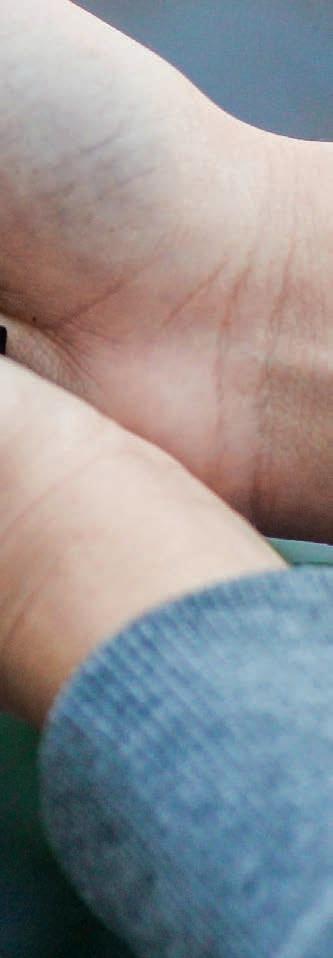
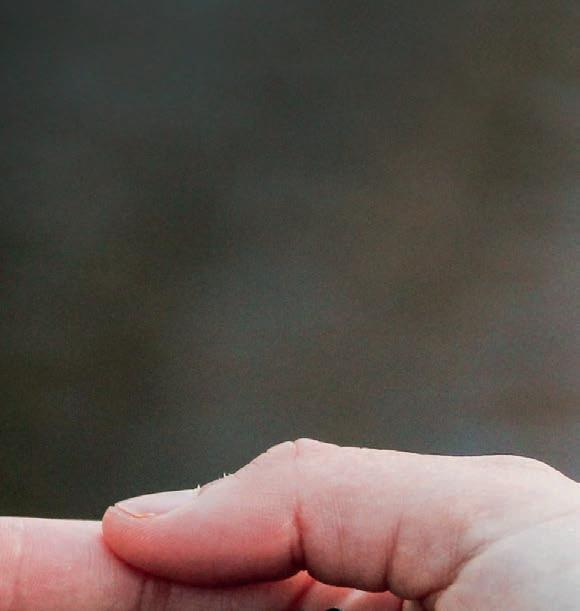
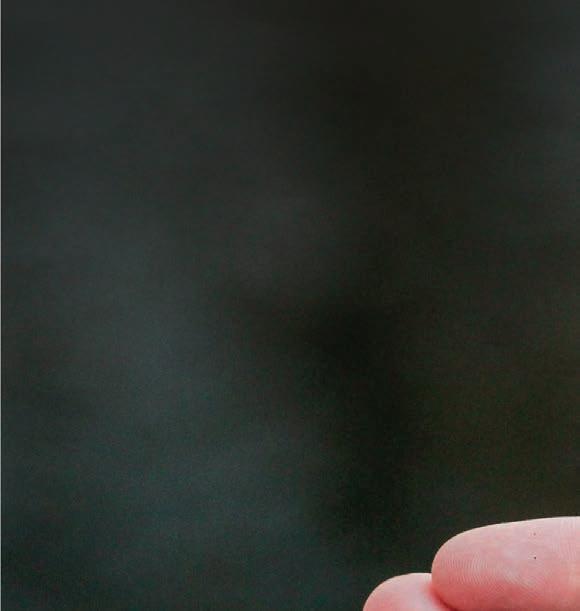

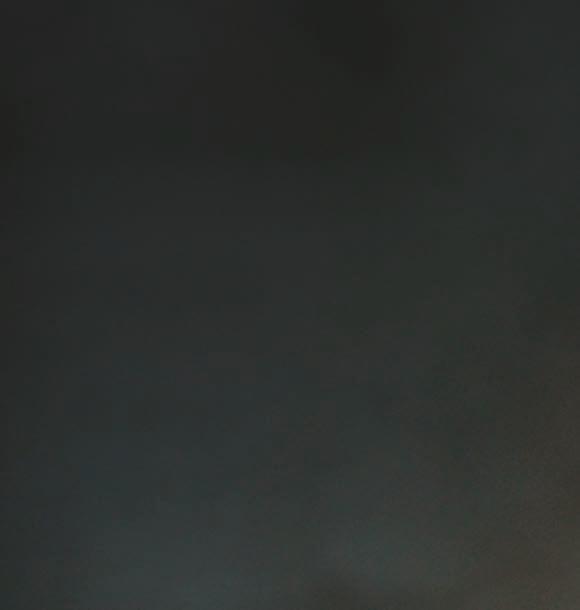


Balmoral RAS (recirculating aquaculture systems) tanks can claim to be at the cutting edge of innovation for land-based fish farmers around the world. The company says its patented blutanQ® technology enables producers to harvest fish more efficiently, increase yields and maximise profitability.
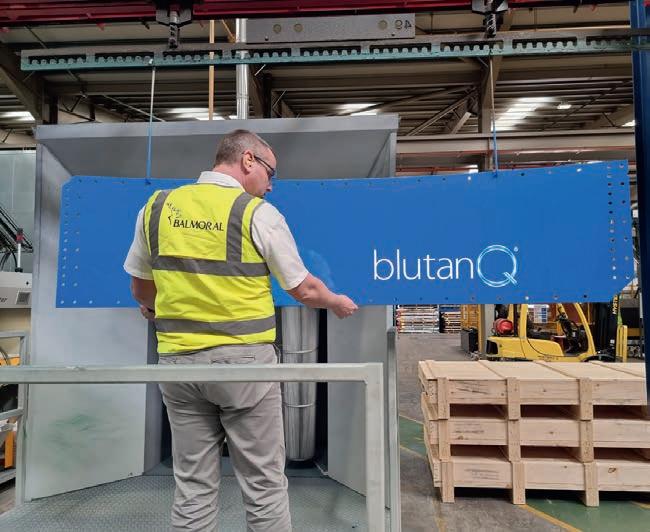
When it comes to aquaculture infrastructure and investment, choosing the right long-term solution is of the utmost importance says Sales Director Jonathan Smith: “We view our clients as partners, we’re not just in it for the single transaction. We help clients throughout the entire process – from conceptual design to testing and after sales support.”
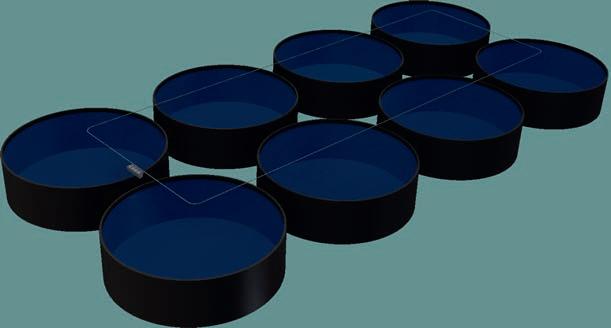
Contact Jonathan for further information: jonathan.smith@balmoral.co.uk
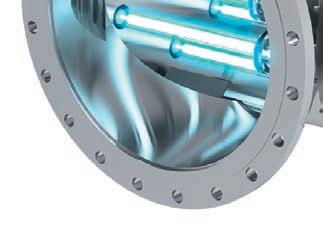

BIO-UV Group, a water treatment specialist for over 20 years, designs and manufactures disinfection and treatment systems for both fresh water and salt water.
In order to prevent the proliferation of algae and the entry or development of diseases in the water, BIO-UV Group’s portfolio of technologies protect and enhance water quality in aquaculture tanks, reproducing natural ecosystems. Through effective application of natural disinfection and oxidation technologies, using both UV and ozone, micro-organisms and other harmful contaminants are removed from the water, ensuring fish survival and maximising yields, while optimising water consumption and protecting the local environment. www.bio-uv.com
Arvo-Tec is launching a range of new feeding systems, starting with an upgraded feeding robot in early 2023. The robot offers several improvements such as increased capacity, improved sensors and the latest in battery technology.
Designed with medium to large indoor RAS facilities in mind, the new robot system promises gentle feed handling over long transport distances, and is also being developed for outdoor use in 2023. One robot is capable of up to 10 tonnes of daily feeding in a grow-out facility, or individually feeding 240 smaller tanks. The robot will serve as a mobile platform for ArvoTec’s high-volume feeder and new spreader, both in development.


Since its inception in 1994, epco has been supplying pressure pipework to the fish farming industry. The company has completed projects involving u-PVC, ABS (acrylonitrile butadiene styrene), and polyethylene pipework in sizes from 16mm up to 1,000mm diameter. epco has supplied universities, lobster hatcheries, shellfish processors, both salmon and tilapia farms, to name just a few of its clients.

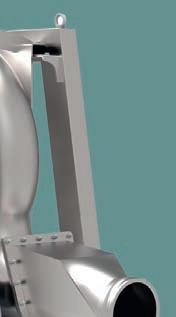

It stocks a vast range of pipework options at its UK base in Leeds, from which it can despatch most goods to arrive on site the following working day. epco’s experienced and knowledgeable team are happy to help with your enquiries. www.epco-plastics.com
The Norwegian company SIMONA Stadpipe has evolved into one of the country’s leading specialists in innovative piping systems. In recent years, the company has worked on several major fish farms in Norway.
In August 2022, it began construction of a large-scale land-based facility for Hima Seafood. The facility, in Rjukan, Norway, is expected to be the world’s largest land-based RAS trout farm, with a production capacity of approximately 8000 tonnes per year.
SIMONA Stadpipe will provide complete piping services, including engineering and design, delivery, and installation. The project requires around 21,000 metres of pipes ranging from 50mm to 1,400mm, and roughly 1,200 valves, from 50mm up to 1,200mm.
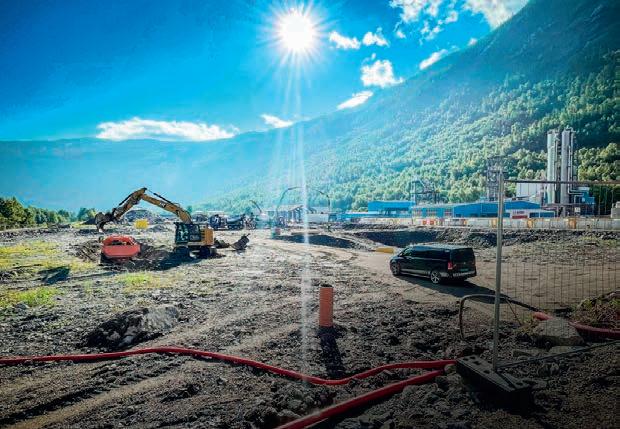

The French aquaculture equipment specialist Faivre now offers a 10-inch fish pump with 316L stainless steel housing, the Pescamotion 50.
With its powerful performance – a TDH (total dynamic head) of 10m – the new pump is ideal for supplying a high-capacity grader or for transferring fish to a tank or a lorry. The Pescamotion 50 offers high-capacity pumping and is able to work on 3kg salmonids (average weight). With low maintenance cost due to its belt drive system, an automatic priming system, and an optional remote control, the Pescamotion 50 fulfils all of your pumping needs. For more information, please contact: info@faivregroup.com www.faivregroup.com
www.was.org Singapore November 29-December 2, 2022

www.oceanbusiness.com
The hands-on Ocean Technology Exhibition and Training Forum. Southampton, United Kingdom April 18-20, 2023
www.was.org
Darwin, Northern Territories, Australia May 29-June 1, 2023
JUNE 23
DECEMBER 22
algaeurope.org
Conference about Science, Technology and business in the Algae Biomass Sector. Rome, Italy
December 13-15, 2022
SEAGRICULTURE ASIAPACIFIC 2023
seagriculture-asiapacific.com
1st International Seaweed Conference AsiaPacific. Online February 8-9, 2023
AQUACULTURE AMERICA 2023
www.was.org
New Orleans, Louisiana, USA

February 23-26, 2023
www.seawork.com
Seawork is a “one stop shop” providing access to the commercial marine and workboat business. Southampton, United Kingdom June 13-15, 2023
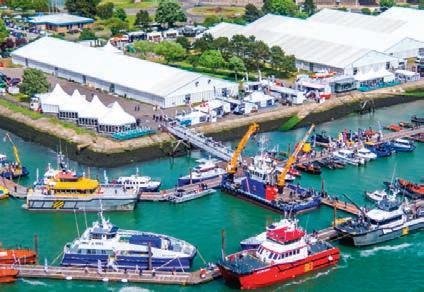
AQUACULTURE EUROPE 2023
www.aquaeas.org
The European Aquaculture Society’s annual conference focuses on “Innovative Solutions in a Changing World”.
Vienna, Austria
September 18-21, 2023
seagriculture-usa.com
2nd International Seaweed Conference USA. Portland, Maine, USA (TBC) September 2023 (TBC)
AQUACULTURE AMERICA
www.was.org
San Antonio, Texas, USA
February 18-21, 2024
MAY 24
AQUACULTURE UK 2024
seagriculture.eu
12th International Seaweed Conference EU organised since 2012. Trondheim, Norway June 21-22, 2023
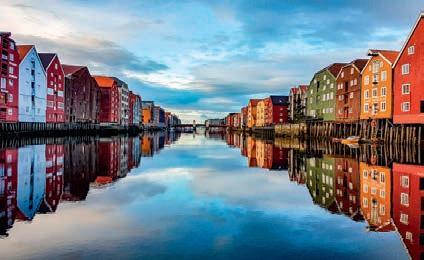
www.aquanor.no/en/ Trondheim, Norway August 22-25, 2023
LACQUA23
www.was.org
Panama City, Panama April 18-21, 2023
www.aquacultureuk.com
Aviemore will once again be the venue for this biennial trade fair and conference. It is undoubtedly the most important aquaculture exhibition held in the British Isles. The show has a tremendous following and with increased investment for 2024 it promises to reach even further across the broader aquaculture markets in both the UK and Europe.
Aviemore, United Kingdom May 14-15, 2024
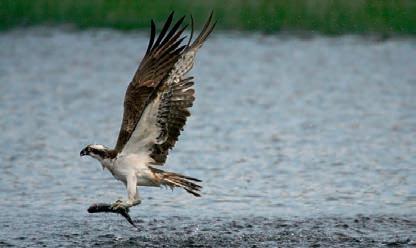
JUNE 24
AQUA 2024
www.aquaeas.org - www.was.org
Stavanger, Norway
June 24-28, 2024


THE survival rate for Andfjord Salmon’s first smolt release currently stands at 99.4%.
On 25 June 2022, the company released approximately 200,000 smolt at an average weight of 120 grams in their first land-based pool at Kvalnes, Andøya. On 15 September, the average weight was 402 grams. Martin Rasmussen, CEO of Andfjord Salmon, said: “We are located at the home of the Atlantic salmon, and we have succeeded in recreating its natural habitat on land without any artificial water treatment processes. We are very pleased with the biological conditions in the pool, and we believe the high survival rate reflects this.”

Aquna Sustainable Murray Cod adopts welfare-focused technology


AQUACULTURE technology specialists Ace Aquatec and their Australian distributor Fresh by Design have signed a first-of-its kind deal with Aquna Sustainable Murray Cod to build and install an in-water electrical stunner for cod in the Asia-Pacific region. The introduction of the company’s innovative in-water stunning technology will help facilitate Murray Cod’s commitment to humane farming processes. Fresh by Design General Manager, Lachlan Bassett (pictured) said: “This is a key milestone for fish welfare in Australia with Aquna Sustainable Murray Cod the first producer to implement the Ace Aquatec in-water stunning system for cod. We are proud to be involved with this project”. freshbydesign.com.au
FINNISH agtech start-up eniferBio has won the opportunity to work with Tesco, and its supply chain partners, after winning the fifth edition of the Tesco Agri T-Jam pitching event run in partnership with the World Agri-Tech Innovation Summit. The innovator is developing a mycoprotein feed (pictured) suitable for aquaculture, poultry and pig supply chains that is made from renewable raw materials and will offer a sustainable high-protein alternative to soy protein concentrate.

Tesco’s ambitious sustainability commitments around sourcing deforestation and conversion-free soy by 2025, the potential of sustainable soy and soy alternatives are of particular interest to the retailer.
Cretel finishes washing and drying installation in Malta CRETEL has produced a custom-made washing and drying installation for Aquaculture Resources Unlimited in Malta. The customer required an installation that cleaned oil and tuna waste from 1,400-litre containers, and a storage warehousing system. Cretel’s business units – Washing & Drying Systems, Machinery and Automation – combined their expertise to provide a customised solution, resulting in a smart and automated installation.
After assembling and testing the installation in Belgium, Cretel disassembled and shipped it to the plant in Malta. There it was reassembled and in just two weeks was up and running, pleasantly surprising the customer.
further information, call 0032 9376


Our new generation, award-winning acoustic deterrents
Our new generation, award-winning acoustic deterrents

Comply with both Marine Scotland EPS and MMPA requirements


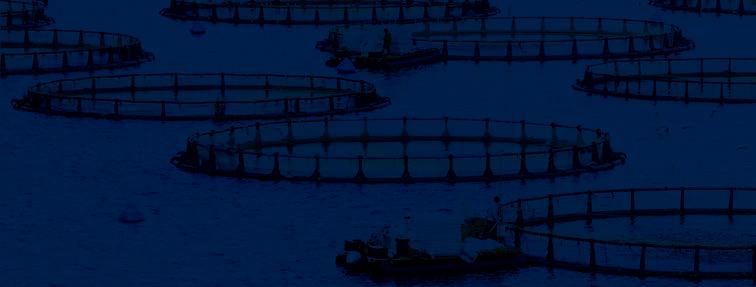

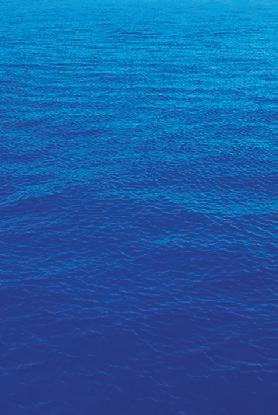






Create


Comply with both Marine Scotland EPS and U.S. MMPA requirements































Create conditioned avoidance so we can put far less acoustic output into the water than older barrier systems
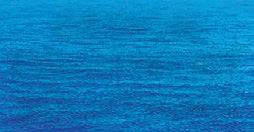
Have low duty cycles, low average volume and low frequency help deter seals, while better safeguarding cetaceans








Your first choice for animal welfare.

Get in touch to set up a trial: acedeterrents@aceaquatec.com
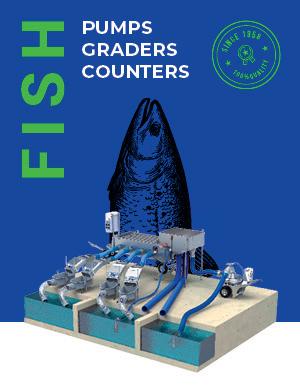

















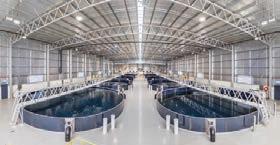

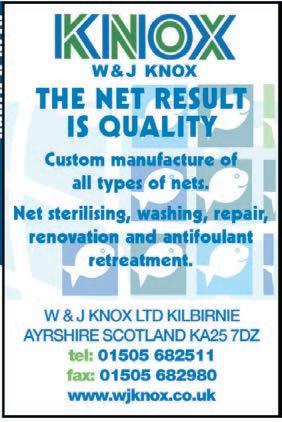












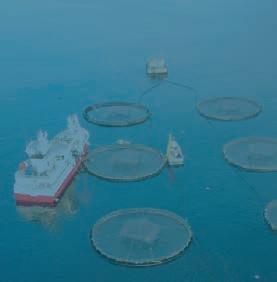





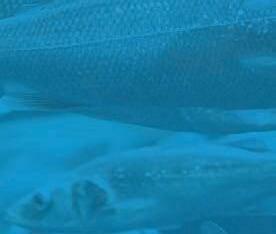

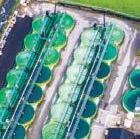

you will allow the intrusion of the personal this month. You see, my dear old Mum finally made it over the threshold into the next world. She died in August and we have just passed the thanksgiving, and all of the kind people telling us about how amazing she was. The truth is that in death you often find out far more about your parents than you knew before. She lived an absolutely extraordinary life.
I have struggled this month to find a subject to write about because so many of the feelings involved in this take over your mind.
Then it came to me that the simplest thing to do was to write about mothers and their effect on who we become. Not that I want to suggest my mother had an effect on everything about me, because that is not true. Nonetheless, without her I would never have had the career that I did and had such a wonderful life.
I was having trouble deciding what to be when I was in my late teens and she gave me a huge list of careers and with a very frustrated voice said: “Just cross off what you don’t want to be!”
So I went to agricultural college. I’m afraid I learnt far too much about alcohol and motorbikes and far too little about agriculture.
My mother, ever watchful, pointed out that there was a fish farming course in Inverness and asked would I fancy that? I was a fishaholic and I wanted this more than I could possibly ever say, especially to Mum.

The second course in Aquaculture ever run in Inverness had limited places – and you had to have a job to go to, which I didn’t. Mum advised I should go for interview but find something interesting to ask them about, and hope to find a job while on the course.
Talking about the origins of farming fish, she pointed out that all of the monasteries had carp farms and that was the real beginning, but I noted that carp farming only went so far north. This became the subject that I quizzed the panel on at the interview. I still think that she got me in by giving me that idea.
Over the next years as I started to learn my craft at places like Moniack trout farm, Craignure mussels and The White Fish Authority (WFA), working with Dover sole. During the course I got to work with some utterly amazing people, pioneers in their field.
When I left the course, I was expecting to work for the WFA but their funding had been cut. I had hardly seen Mum in a year as Dad had been posted to Malaysia. She asked a local tea planter, who had rainbow trout, how he was getting on with them. He replied “They’re all dying, why are you asking?”
My Mum replied: “My son’s a fish farmer and he’s at a loose end!”
I was many things, but I could hardly lay claim to that. But I got the job. I could recount many stories about that trip, but one stands out.
In that part of Malaysia, there were quite a lot of bandits, so each house had a very complex system of grills and shutters on each door that I had to use every time I came home.
In my new job working for the tea plantation, I discovered that the feed was contaminated very badly and that we needed a new formula. I got invited out by a potential feed company and, not for
the last time, was plied with considerable amounts of alcohol. Though I was 23 and thought myself a case-hardened drinker, I most certainly was not. Back at the house, swaying gently, I opened the front door, shut it, locked it, shut the grill, locked it and staggered very slowly up to bed. Of course I went into a very deep sleep.
What I had not noticed was that my parent’s car was not there. They were out with my grandmother. Nor had I noticed that it had started to rain rather hard. Later, much to my surprise and alarm, one of the windows in my bedroom shattered and rising blearily, I feared that we were about to be attacked until I heard my father’s rather cross voice.
Staggering down the stairs I let them in, feeling that it was most unreasonable of parents not to be where they were meant to be. Despite my father’s tone outside, he did not appear angry, nor did my mother, which was rare on such occasions.
Several weeks later, I dared to ask them why they were not furious with me that night. Mum replied: “Darling, you were a wonderful green colour and rocking very slowly from side to side. We could hardly contain our laughter till we got up to bed. You are such a twit!”
Thanks Mum, you’re right. I still am!
In death, you often find out far more about your parents than you knew before
”








